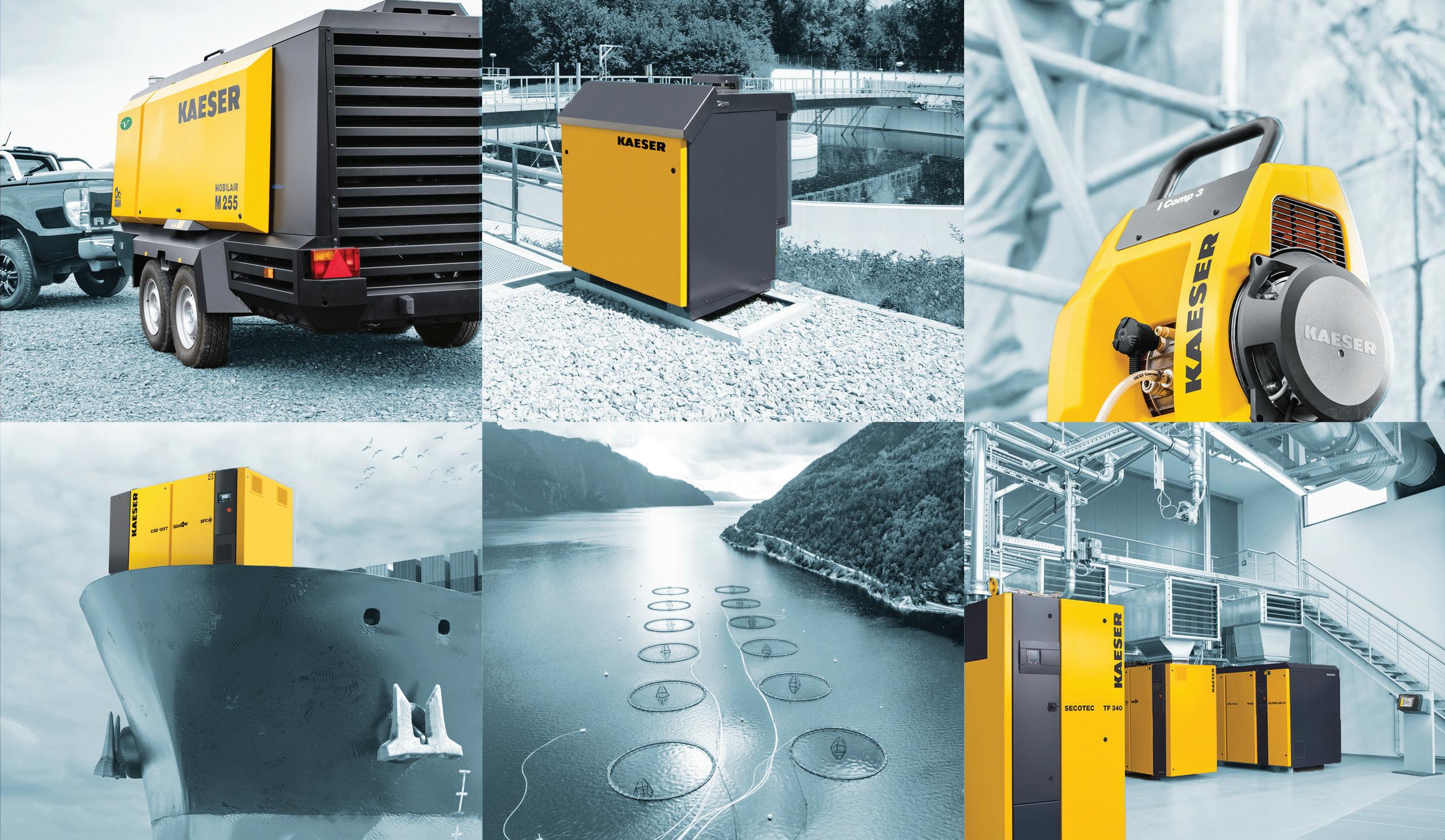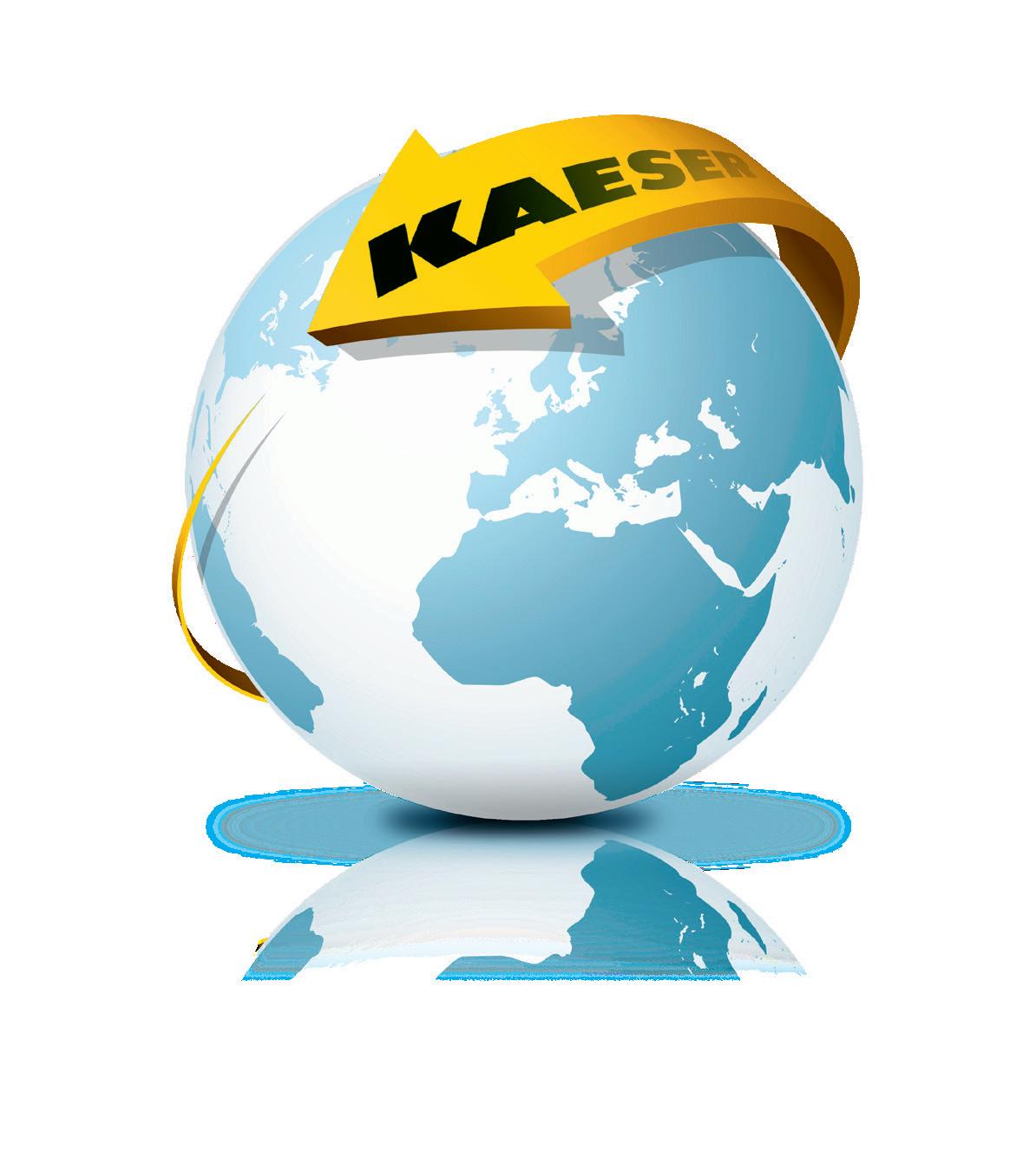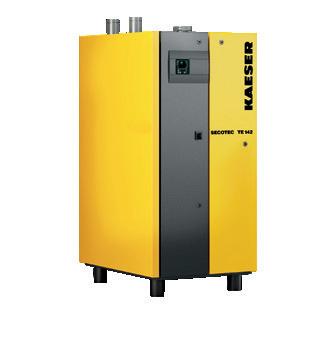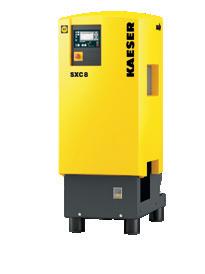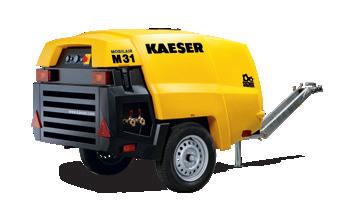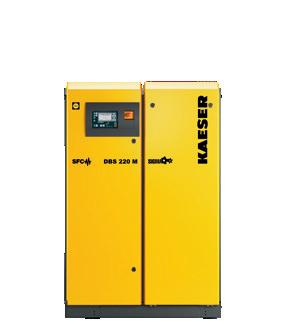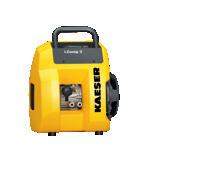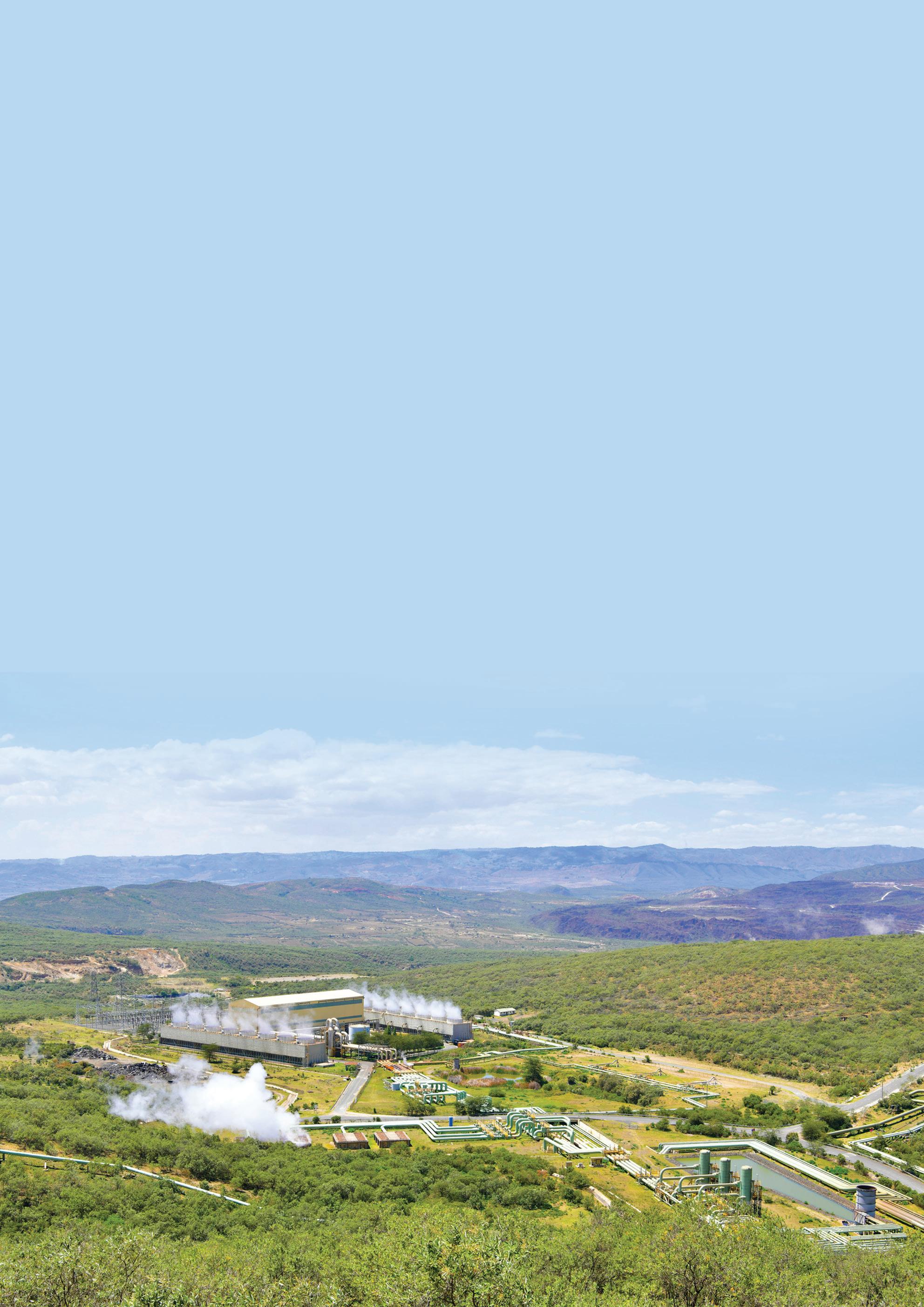









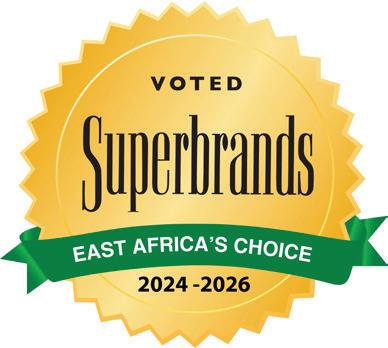


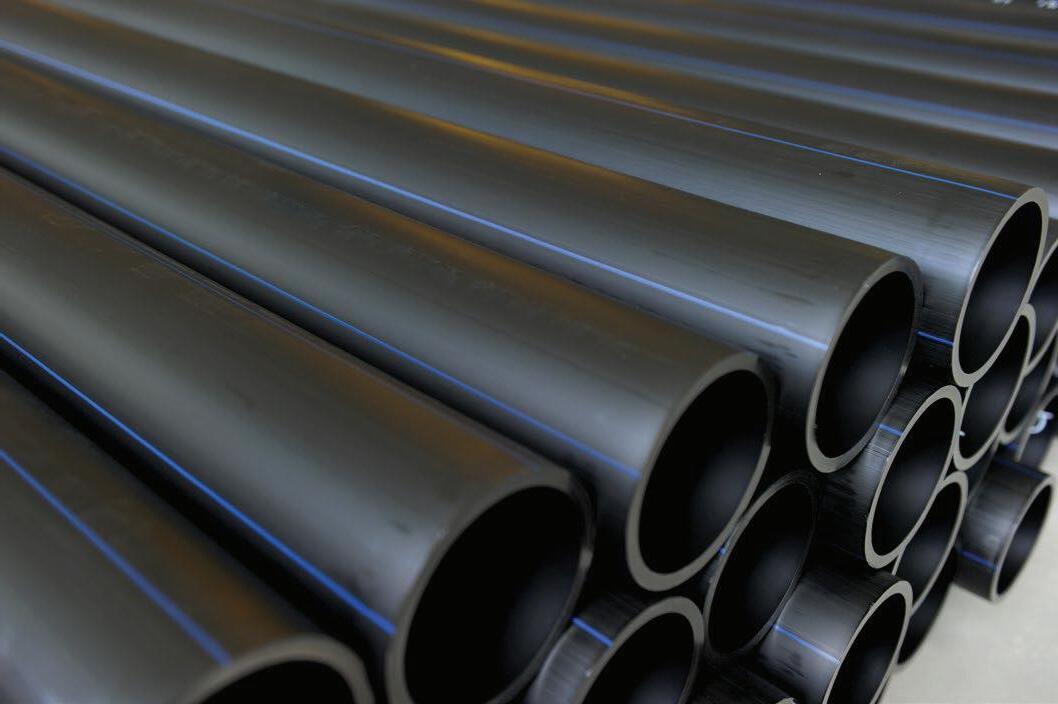

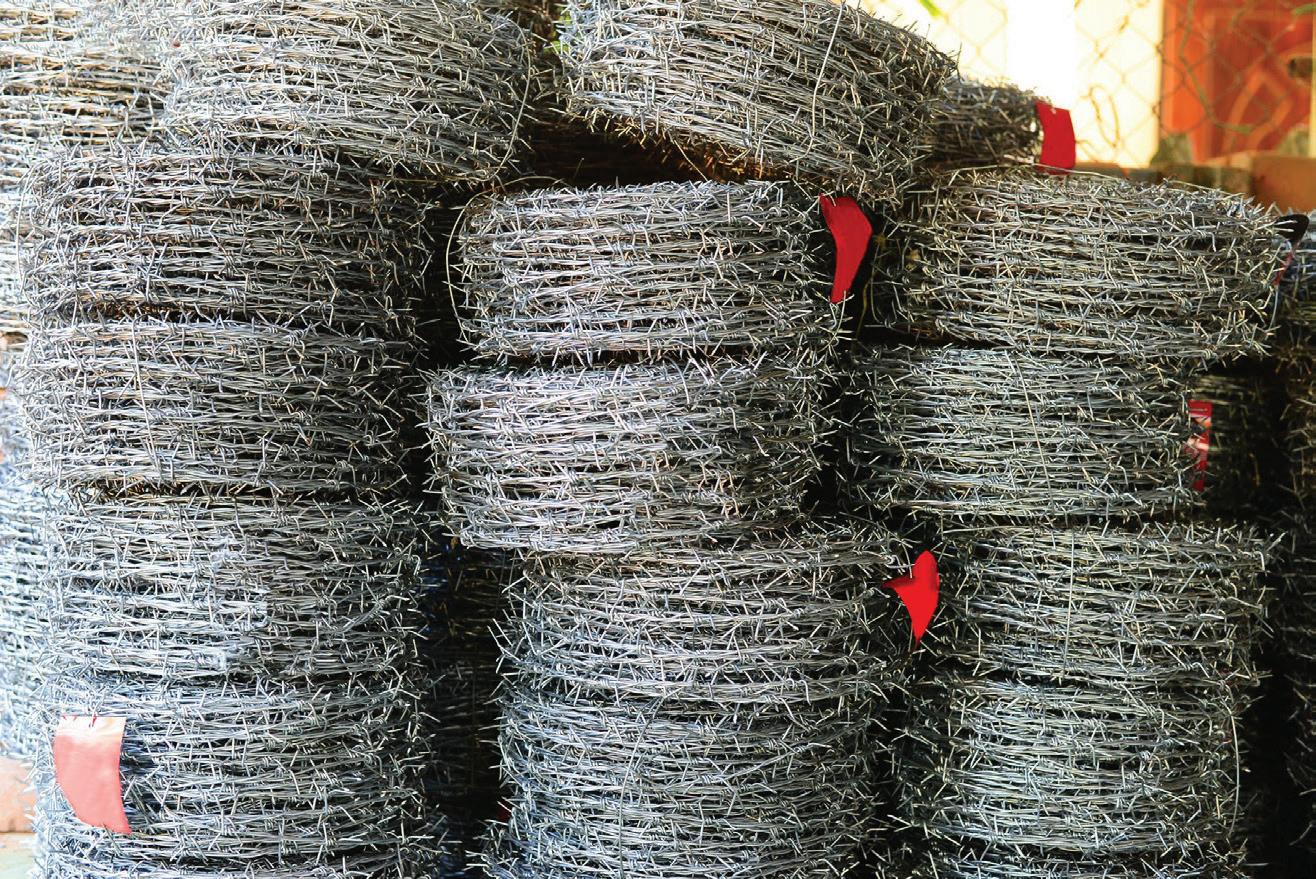



















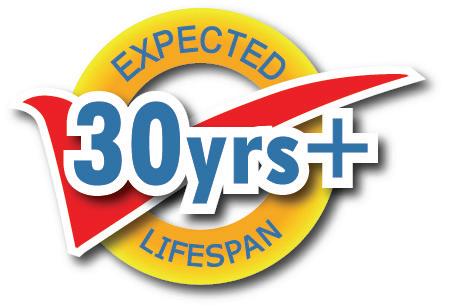




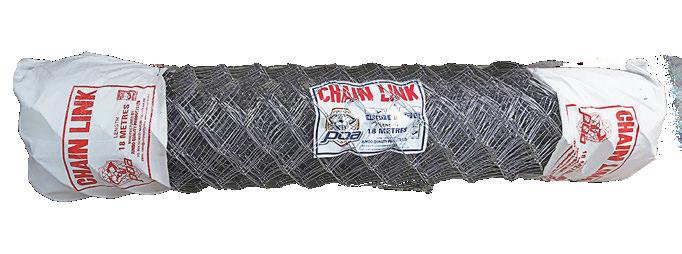
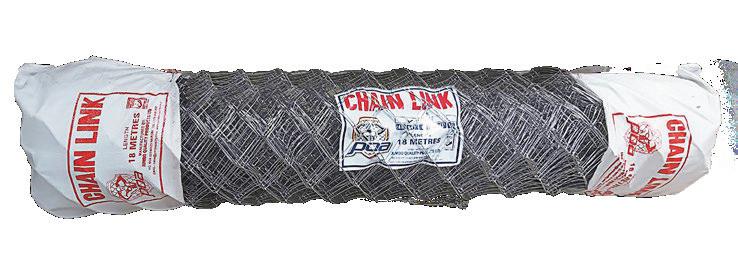



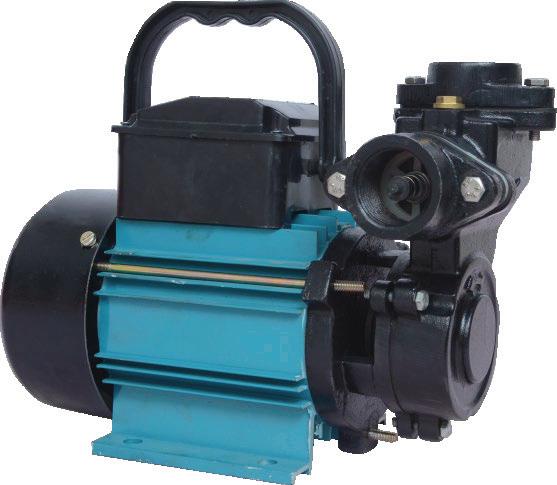


ATobias Alando, KAM Acting Chief Executive Officer
s Africa prepares to leverage Artificial Intelligence (AI) and green industrialization to accelerate its structural transformation, Kenya stands out for its commitment to sustainable industrialization.
The country is proud to be at the forefront of harnessing emerging technologies and innovations, particularly in green manufacturing.
Local manufacturers are actively pursuing energy efficiency measures to support a green transition and improve the quality and standards of Kenyan products for global markets.
This edition explores the significant strides made by manufacturers, primarily through the Kenya Association of Manufacturers (KAM) Centre for Energy Efficiency and Conservation (CEEC), which has guided industries in adopting sustainable energy practices for over 20 years, resulting in notable energy savings and emissions reductions.
Still on sustainability, we showcase how Kenya’s dairy sector is leading the charge against climate change, and an inspiring feature highlights a chemical engineer pioneering plant-based nail care products to showcase innovation in the industry.
In the spirit of the annual Changamka Shopping Festival, now on its 7th edition, we emphasise collaboration between manufacturing stakeholders and the government to promote made-in-Kenya products. There is a firm commitment to enhancing production standards, expanding export capabilities, and fostering innovation to position Kenyan goods on global shelves.
We also profile some of Kenya’s most established manufacturers. Among them is KenGen, Africa’s first geothermal well pioneer, leading the way in green industrialization; Twiga Chemical Industries, driving growth and innovation across various sectors, from explosives to pharmaceuticals, industrial chemicals, and agrochemicals; how KWAL has played a significant role in pioneering the wine industry in Kenya and learn more about Bata’s legacy of producing stylish and comfortable footwear.
This edition is engaging as it highlights Kenya’s progress and aspirations in sustainable industrialisation.
Enjoy your read!
Kenyan businesses are gearing up for growth following the launch of the EPA-Kenya Sensitization Forums, aimed at educating local enterprises about the newly signed Economic Partnership Agreement (EPA) between the European Union (EU) and Kenya.
Effective from July 1, 2024, the EPA grants Kenyan exporters duty-free and quota-free access to the EU market, benefiting sectors like agriculture, textiles, and pharmaceuticals.
By addressing the existing trade imbalance, which stood at Ksh 64 billion (€466 million) in favour of the EU in 2023, the agreement aims to foster mutual benefits and stimulate exportled growth.
Through countrywide sensitization forums, Kenyan enterprises are expected to learn to navigate the complexities of the EPA, positioning themselves for success in an increasingly competitive global market.
This initiative marks a significant step in enhancing Kenya’s economic partnership with the EU.
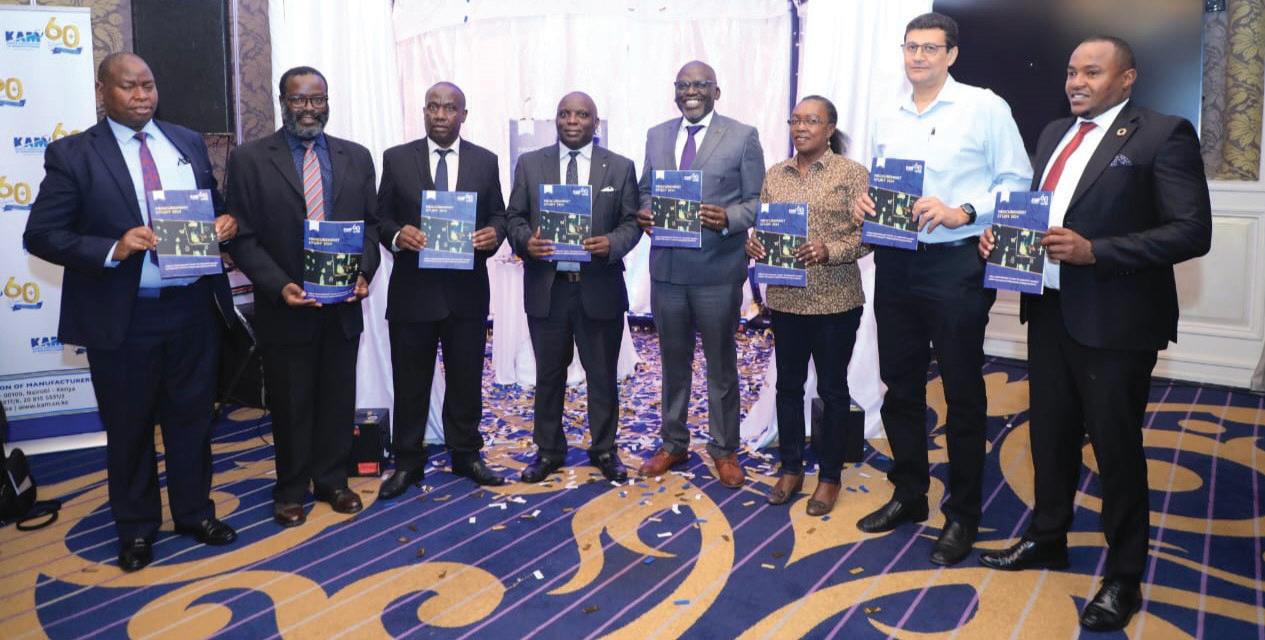
The Kenya Association of Manufacturers (KAM) has launched a pivotal Public Procurement Study aimed at enhancing the government’s procurement system and promoting market access for locally produced goods.
The initiative seeks to empower both national and county governments with insights to facilitate the integration of local products into procurement practices.
Industrialization Secretary Prof. Erastus Gatebe highlighted the ongoing reforms, including the Local Content Policy and the Buy Kenya Build Kenya Strategy as crucial in supporting Kenya’s aspiration to become a middleincome country by 2030.
The Public Procurement Regulatory Authority (PPRA) underscored the importance of collaborating with local industries to create a digitalized registry of local goods, viewing the study as a key resource for improving the procurement landscape.
Clear policies will bolster local procurement and help domestic producers compete favourably with foreign suppliers.
The study identified critical gaps, including the lack of a centralized register of local manufacturers and convoluted definitions within procurement regulations. These findings will inform future strategies to ensure local goods gain a firmer foothold in Kenya’s public procurement arena.
Kenya Electricity Generating Company (KenGen) aims to build a 42.5-megawatt solar power plant at the Seven Forks dams to enhance the production of renewable energy.
The plant is expected to be connected to the national grid by 2027 and will work in conjunction with the existing hydroelectricity, providing power during the day and solar energy at night. This initiative is intended to reduce the high cost of electricity for both households and businesses. The construction of the floating solar power plant, alongside a series of hydropower plants, is projected to take approximately 28 months.
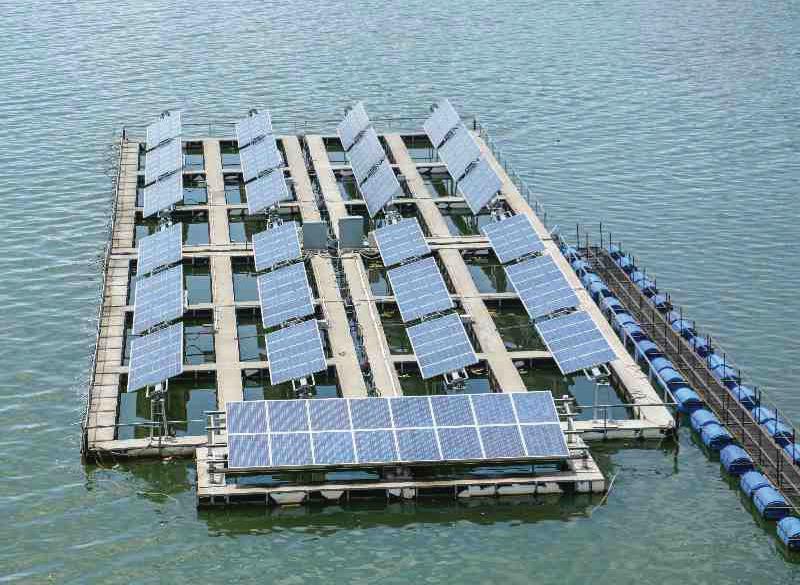
KenGen’s plan for the floating solar power plant at the Seven Forks dams comes after a prefeasibility study conducted by Norway’s multiconsult on the potential for floating solar PV on three main reservoir dams: Kamburu, Kiambere, and Turkwell.
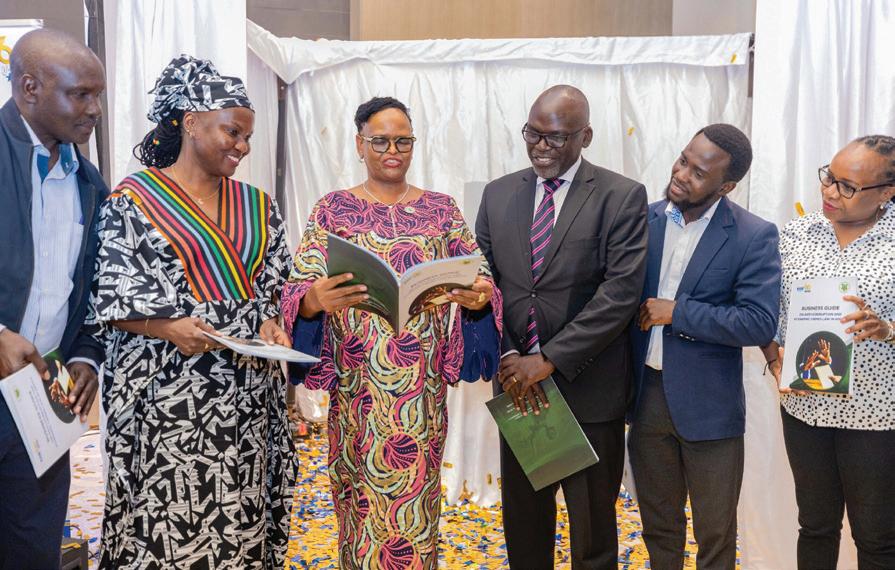
The Kenya Association of Manufacturers (KAM) and the Kenya Magistrates and Judges Association (KMJA) have launched the Business Guide on Anti-Corruption and Economic Crimes Law in Kenya.
This guide aims to simplify the legal framework surrounding anti-corruption and economic crimes, serving as a crucial resource for judicial officers and businesses.
Chief Justice Hon. Lady Justice Martha K. Koome emphasized the need for a collective fight against corruption that includes the business community, highlighting the collaboration between KAM and KMJA as a means to strengthen the justice system.
The guide provides entrepreneurs, particularly small and medium-sized enterprises, with accessible insights into relevant laws, helping them overcome legal compliance challenges and promoting ethical business practices.
KAM’s Acting Chief Executive Officer, Tobias Alando, said corruption poses significant hurdles that elevate the cost of doing business and reduce investor confidence. He believes that a robust legal framework, if effectively implemented, can position Kenya as one of the least corrupt nations.
KAM’s ongoing partnership with the judiciary includes various initiatives aimed at improving understanding and service delivery within the commercial law sector, enhancing the business environment in Kenya.

Construction of the world’s first green industrial garment factory is underway in Athi River EPZ.
This initiative, funded by a Ksh 67.8 million (US $530,000) investment from the United States Agency for International Development (USAID) and a Ksh 166 million (US $1.3 million) loan from Trade Catalyst Africa (TCA), will cover an area of 5,000 sqm, making it the first sustainable garment factory to be built using upcycled containers.
Expected to be complete by December 2024, the initiative will position Kenya at the forefront of ecofriendly manufacturing practices, improving its competitiveness, creating job opportunities, particularly for women, and enhancing its export potential.
P.8
Powering a green transition: Efficient energy initiatives lead to enormous savings for industries
P.11
Change of Guard
Jane Karuku takes over mantle as new KAM Chairperson
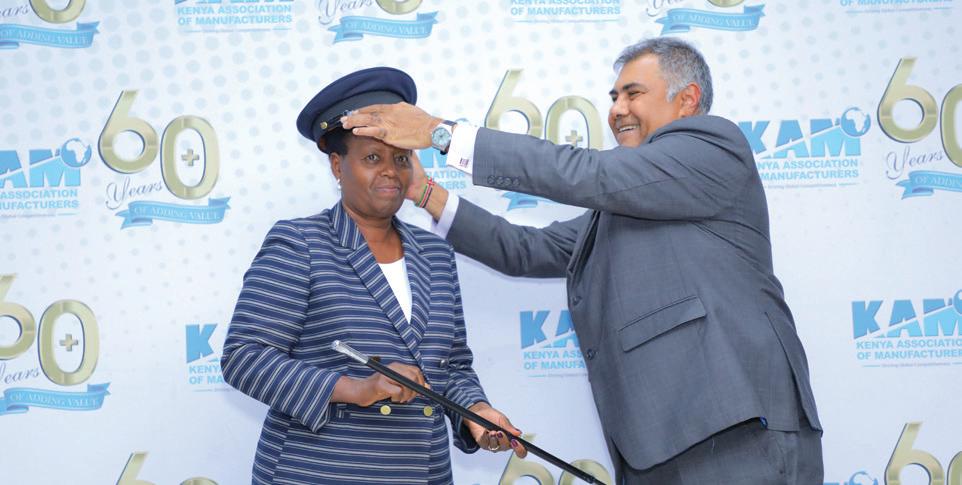
P.12
Bata at 85: A legacy of stylish and comfortable footwear for every walk of life
P.18
Empowering the future: Doubling down on energy efficiency for sustainable industries
P.23
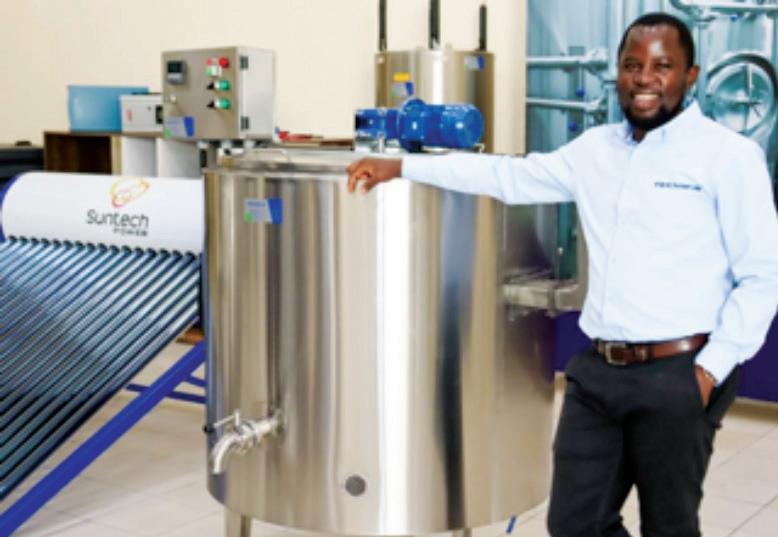
P.26
Milking Sustainability: Kenya’s Dairy Sector Leads the Charge Against Climate Change
KenGen at 70: Powering Green Industrialization for the Next Decade
Events & Networking
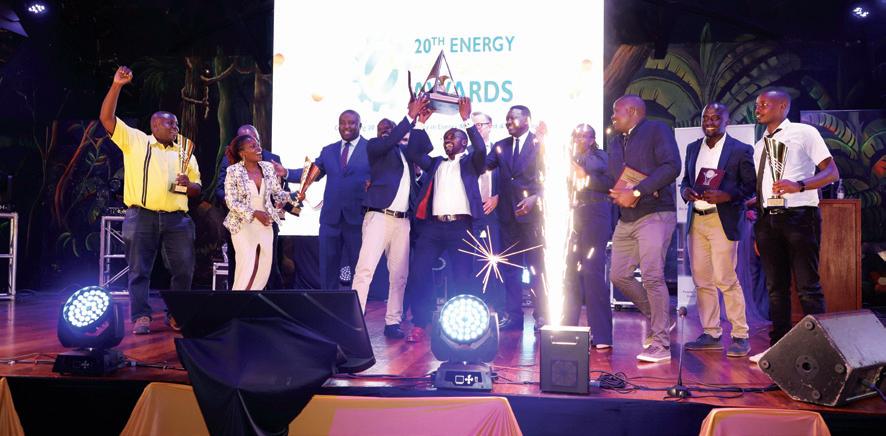
P.37
P.40
Changamka Shopping Festival: New plan to elevate Made-in-Kenya products to Global Shelves
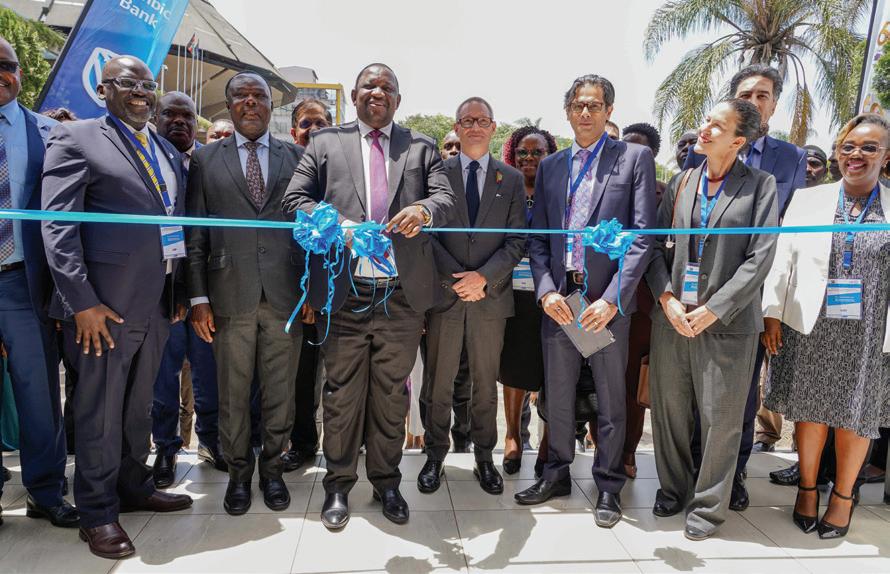
P.48
Clean Cooking: Carbon credit finance can bring clean cooking to every home in Africa
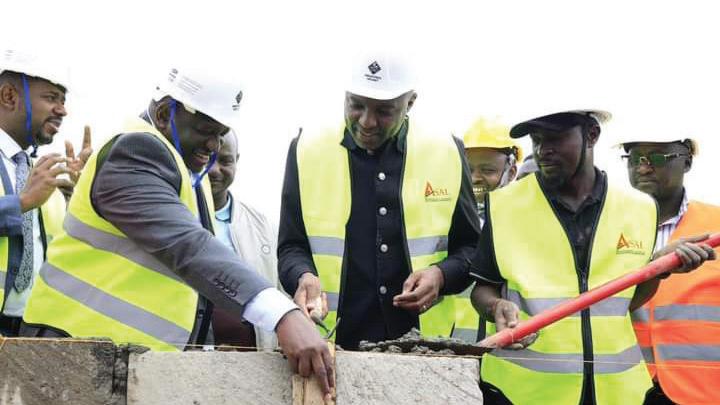
P.50
County Focus Murang’a County bets big on ‘Simple MoUs’ to spur industrial growth
P.53
KWAL at 55:
A Journey of Innovation and Local Excellence in Beverage Production
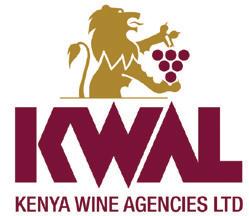
P.63
Marketing agencies as catalysts for climate action and sustainability


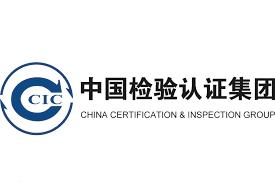
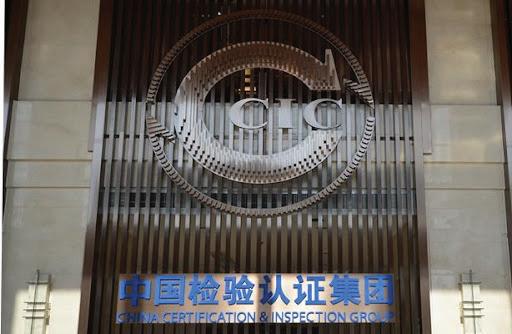
We congratulate KEBS on its 50 years of accomplishments and excellence! We look forward to our continued fruitful collaboration to provide excellent services to our clients.
CCIC is a global leading third-party inspection, certification and testing organization with several decades of global services and quality assurance. CCIC operates a vast network covering 40 countries, with more than 400 branches, 500 laboratories, 200 international qualifications and more than 300 national qualifications.
CCIC is renowned for its comprehensive range of quality services and customized solutions to meet the increasing global demand for inspection, testing, certification, standards and metrology.
With our extensive expertise and experiences, CCIC has established itself as a trusted partner in international trade and quality assurance, o ering one of the best services in the PVoC program in Kenya in conjunction with KEBS. We value our trusted partnership with KEBS and pride our excellent services to Kenya.
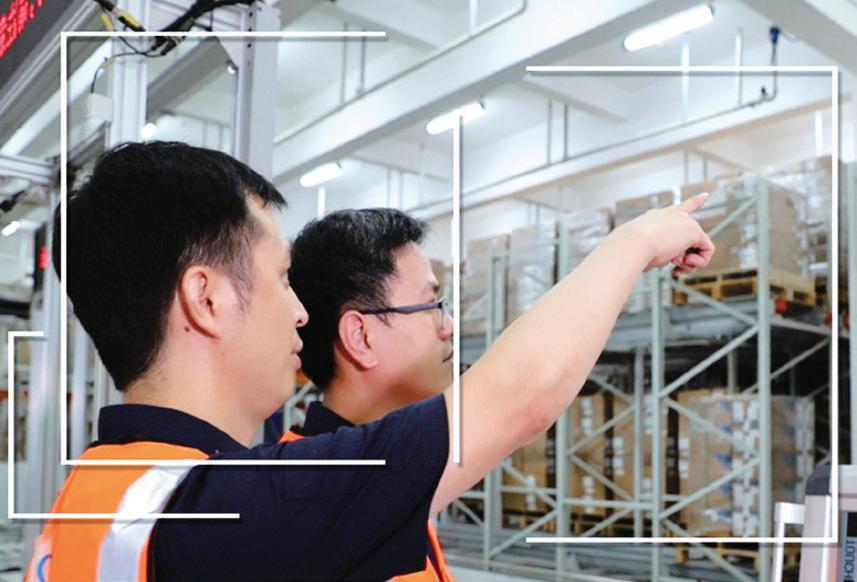
CCIC KENYA OFFICE
Location: Volvo House, Loita Street, Nairobi, Kenya
Email: ccickenya@gmail.com/ccic.nairobi2008@gmail.com Contact No: +254-724-458752, +254-721-991492 / +254-714-364-378 Visit us at: h p://www.ccic.com

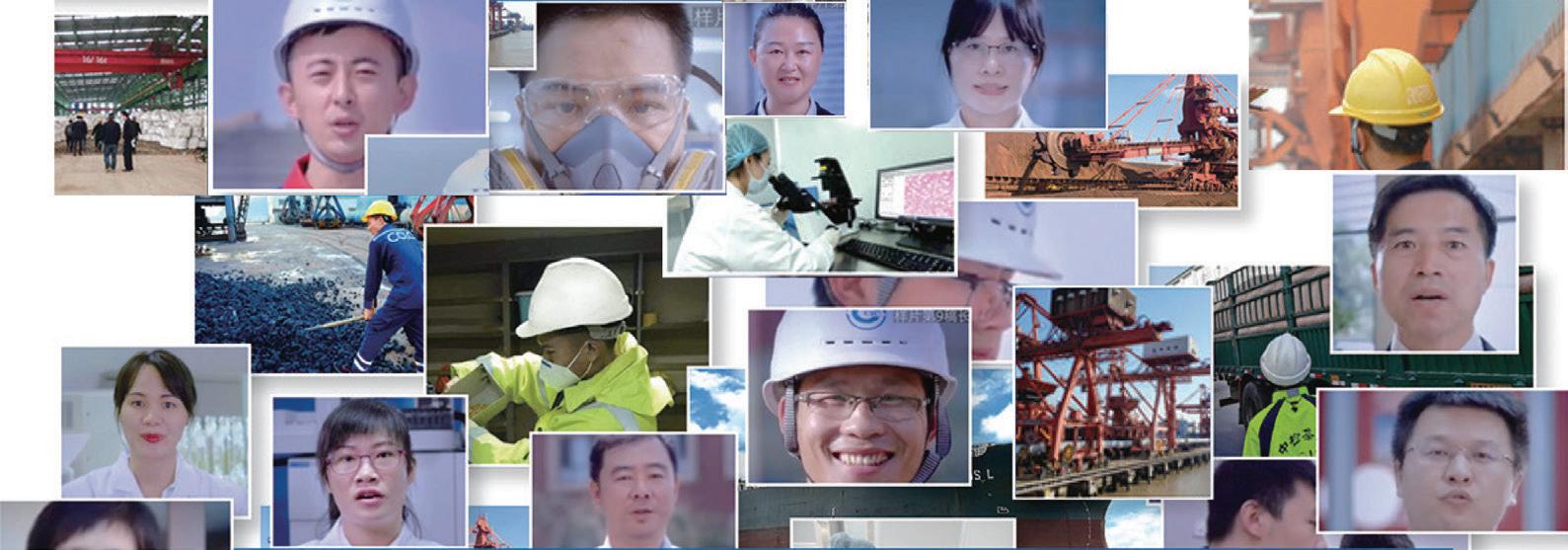
INDUSTRY TODAY TEAM
AG. CHIEF EXECUTIVE
Tobias Alando
EDITORIAL DIRECTOR
Lawrence Njenga
EDITORIAL LIAISON
Grace Mbogo
Hope Wambui
MARKETING LIAISON
Silas Odhiambo
ADVERTISING LEAD
Arnold Odhiambo
SPECIAL PROJECTS LEAD
Margaret Njiru
EDITORIAL MANAGER
Conrad Onyango
CREATIVE LEAD
Linda Ajima
PUBLISHER
Kenya Association of Manufacturers
P.O. Box 30225-00100 GPO Nairobi, Kenya 5th Floor, 15 Mwanzi Road. Opp. Westaget Mall, Westlands Tel:+254(020) 232 4817/8 Email: infor@kam.co.ke www.kam.co.ke
MEDIA, PRODUCTION & COMMERCIAL PARTNER
Moland Media East Africa Ltd P.O. Box 51532 00100 Nairobi, Kenya
Email: engage@molandea.co.ke
COPY RIGHT
Industry Today Magazine and its contents are strictly copyright and intellectual property of Kenya Association of Manufacturers. Reproduction of the whole or any part of the contents without written permission from the publisher is prohibited. All information is published in good faith. While care is taken to prevent inaccuracies, the publishers accept no liability for any errors or omissions or for the consequences of any action taken on the basis of information published.
A digital copy of the magazine is available free at kam.co.ke
P.64

Women in Manufacturing: An Industrial Chemist pioneering Eco-Chic Nail innovations
P.66
KENAS at 15

Rising from a unit to delivering trust globally
P.72
Tech & Innovation: Kenya’s Leap into Tech-Enabled Drug Manufacturing
P.74
KEBS 50 Excellence: Shaping Kenya’s Quality Culture and Global Trade Reputation
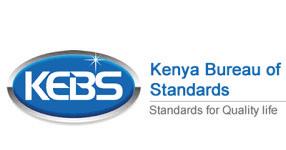
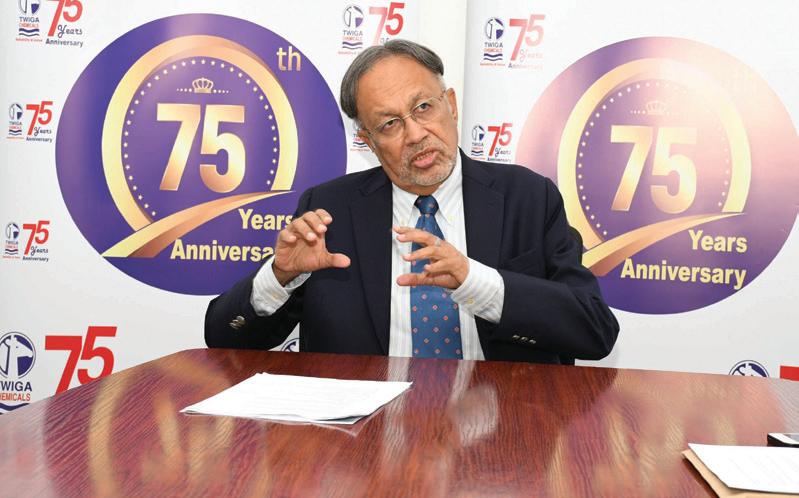
P.78
P.81
Twiga Chemicals at 75: Pioneering Growth and Innovation
People and Skills: Human resource for a sustainable and energyefficient workplace







Since 2001, KAM has been part of every industry’s great story of energy efficiency and sustainability. The Association’s Centre for Energy Efficiency and Conservation (CEEC) plays a significant role - headlined by training and capacity building, awareness creation, energy audits and Energy Management Awards - in guiding industries to adopt sustainable energy measures, leading to substantial energy savings and reduced emissions and cost savings.
By Conrad Onyango

Our actions today will shape the energy landscape of tomorrow. And it is heartening to see many leading the charge towards a greener future, through our efforts towards energy management and efficiency, KAM former Chairman, Rajan Shah
In Kenya launched a five-year Energy Efficiency Project, with the support of the Global Environmental Facility (GEF) and United Nations Development Programme (UNDP), to promote energy efficiency in the industrial sector through the Kenya Association of Manufacturers (KAM).
Four years into the project, energy was recognized as vital for development, leading to a push for energy efficiency across all sectors by the government through the 2004 Sessional Paper No. 4 on Energy.
This resulted in the creation of the Centre for Energy Efficiency and Conservation (CEEC) at KAM, backed by the Ministry of Energy, to champion energy efficiency and sustainability.
CEEC has since trained over 2,500 energy managers, conducted over 1,900 energy audits and fostered a culture of self-regulation in the industry.
The Centre also offers certifications, exchange visits, resource audits (energy audits, carbon footprint assessments, process optimization audits, and circular economy resource mapping), and hosts the annual Energy Management Awards (EMA) - all these efforts playing a significant role in helping manufacturers to save big on energy costs and reduce environmental footprint.
Over the last two decades, more than 500 manufacturing firms have realised savings of about Ksh 15 billion and 2,000 gigawatt-hours, representing close to 100 megawatts of investment that has been freed up for other uses since 2004, when KAM and government began implementing the annual Energy Management Awards.
In its 20th edition, the Awards demonstrated that industries can save up to 30% of their primary energy input.
“Our actions today will shape the energy landscape of tomorrow. And it is heartening to see many leading the charge towards a greener future, through our efforts towards energy management and efficiency,” said KAM former Chairman, Rajan Shah during the 20th edition of the Awards held earlier this year.
In 2024 alone, manufacturers realised savings of about 190,000 gigajoules and 240,000 megawatt hours of thermal and electrical energy respectively, translating to approximately Ksh 434 million energy savings.
Among the top energy-efficient measures implemented by industries are process optimisation initiatives, installation of efficient motors, lighting, compressed air systems and other appliances, fuel switching, and thermal efficiency improvements.
During the Awards, former Energy Cabinet Secretary (CS), Davis Chirchir said the country has observed a gradual decline in petro-thermal energy generation since 2022, a trend attributed to a deliberate reduction in thermal installed capacity and strategic prioritisation of renewable energy generation.
As a sector, we remain steadfast in our commitment to decommissioning all petro-thermal power plants once they have fulfilled their respective full power purchase agreement terms
Mr. Davis Chirchir
Former Energy Cabinet Secretary (CS)
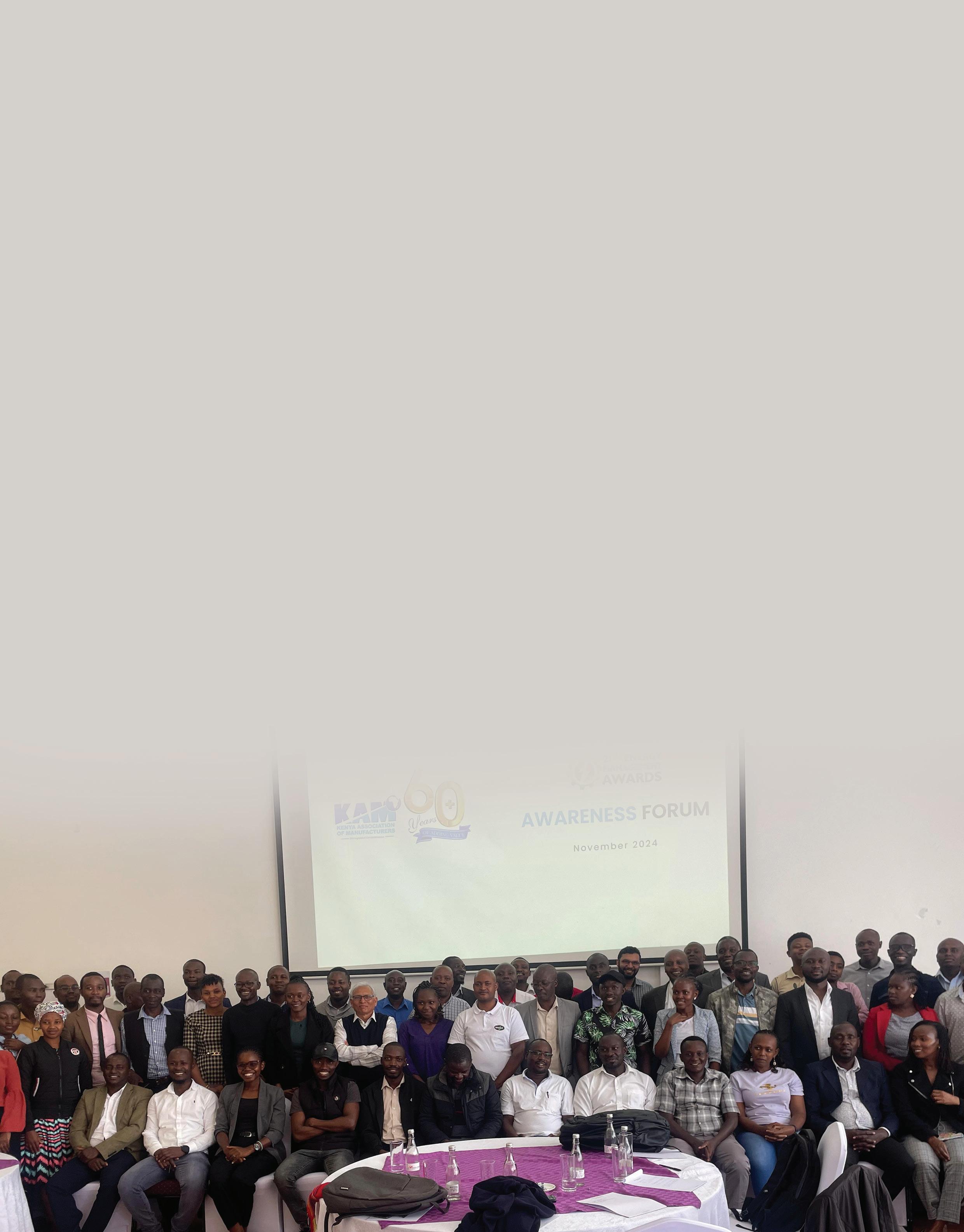
Rajan said Kenya is making a mark in the world as a leader in driving sustainable energy initiatives, with its current sourcing of nearly 90% of its energy from renewables.
“This speaks to our country’s dedication to actualise the commitments to triple global renewable energy capacity and double energy efficiency improvements as highlighted in COP28. As KAM, we recognise these ambitions. Hence, sustainability remains a key strategic pillar for us,” he said.
KAM’s advocacy efforts towards the development and implementation of policies that encourage businesses to adopt sustainable manufacturing practices have been key drivers of the massive energy savings among industry players.
“We also develop programs that build manufacturers’ capacity whilst providing them with technical support to incorporate sustainable manufacturing practices in their operations,” adds Rajan.
According to data from the World Economic Forum, the manufacturing and production sector accounts for one-fifth of global carbon emissions and 54% of the world’s energy usage.
Kenya has set a target to achieve a 100% clean energy mix by 2030, guided by the Kenya National Energy Efficiency and Conservation Strategy. The Strategy highlights government’s commitment to mitigate climate action and change impacts and meet the global climate targets.
The Ministry of Energy has affirmed its active engagement in developing a robust legal, regulatory and institutional framework to optimise utilising the country’s energy resources.
Among these engagements include the current review of the Energy Policy 2018 to ensure alignment with the Energy Act 2019 for energy affordability and competitiveness, to take advantage of firms seeking cost advantage, sustainability and reliability while prioritising environmental conservation.
The Energy Management Regulations of 2012 and 2016, Chirchir said, have been instrumental in enhancing the adoption of energy-efficient measures and promoting best practice energy management through energy audits, promoting minimum energy performance standards, labelling of appliances, compliance and creating a conducive environment for energy efficiency as a service.
“This will elevate industry professionalism and capitalise on the benefits of energy management programmes. Prioritising energy efficiency is not only crucial for sustainable development but also imperative for fulfilling our climate obligations under the Paris Agreement,” he said.
The Ministry of Energy also revealed that it has released open access regulations, a significant step towards modernising the country’s electricity market and promoting competition, to unlock new investment opportunities and enhance industry grid reliability.
The Energy (Electricity Market, Bulk Supply and Open Access) Regulations 2024 will break the longstanding monopoly of state-owned electricity utilities Kenya Power and KETRACO by granting independent power producers’ access to its distribution network.
Kenya has also begun implementing the Energy (NetMetering) Regulations, 2024, gazetted in June by the former Energy CS, allowing individuals and firms who generate their own electricity and are connected to the national power grid to sell their surplus energy. The CS said the regulations on net metering will initially take up to 100 megawatts.
“This signifies our unwavering dedication to transitioning towards a cleaner, more sustainable energy future. We can only take green energy. Give us green. Don’t give us thermal,” urged Chirchir.
KAM has been pushing for lower energy costs for manufacturers to enable the players to be globally competitive. This includes the push towards a tariff of below 9 U.S. dollar cents per kilowatt hour as well as the restructuring of the off-peak tariff to make it easier for more industrial users to benefit from it.
Kenya’s installed electricity interconnected capacity as of 2023 stood at 3,321MW, a significant growth from 1,800MW in 2014. Its clean energy mix, which consists of wind, solar, geothermal, and hydro, accounts for approximately 90% of Kenya’s installed capacity.
In addition, Kenya is among the top countries that have exploited geothermal resources for electricity generation, with close to 900MW already developed, with a potential to grow to 10,000MW.
With geothermal, wind, solar and hydro, Kenya’s position as a clean energy is promising to the existing and future manufacturers, as Kenya will remain a clean energy destination. It is critical that manufacturers continue to embrace energy efficiency in their operations for long term sustainability and environmental responsiveness.
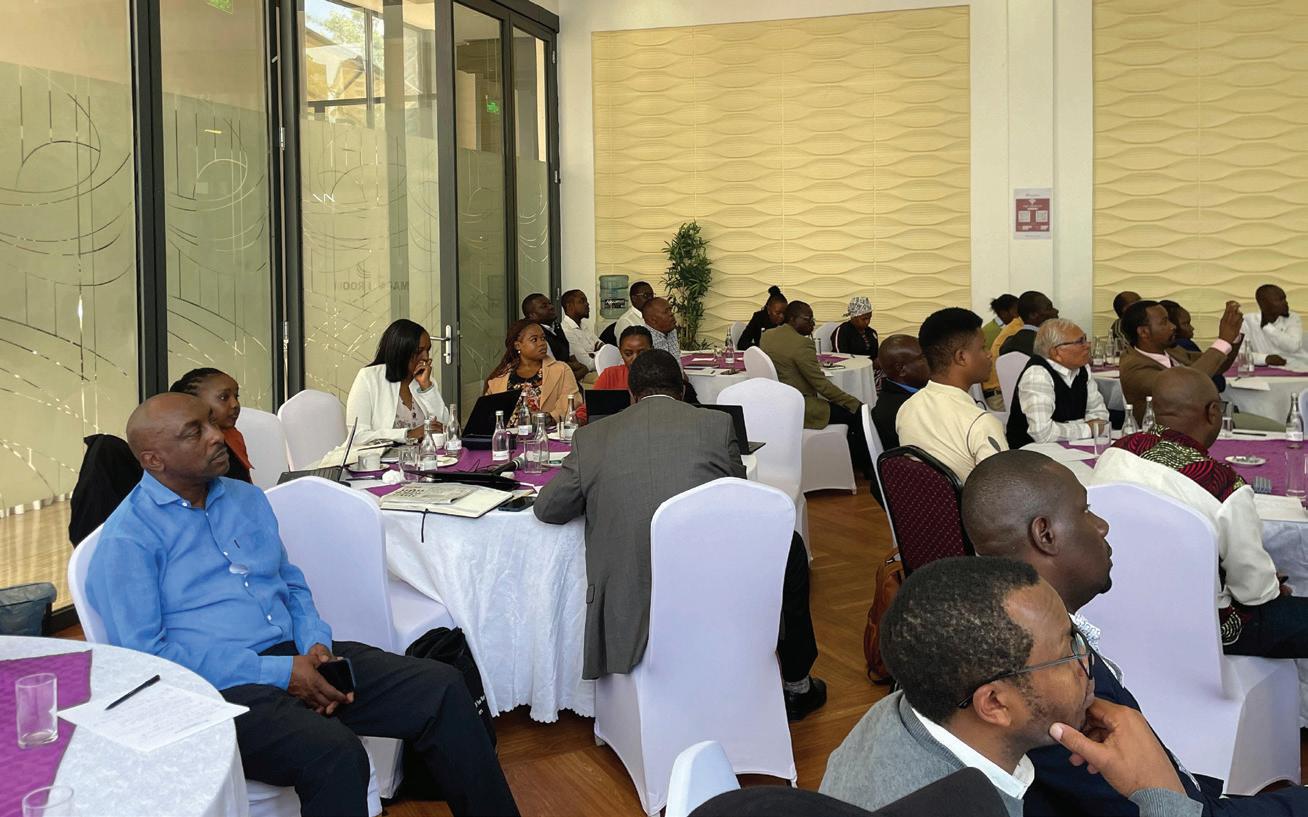
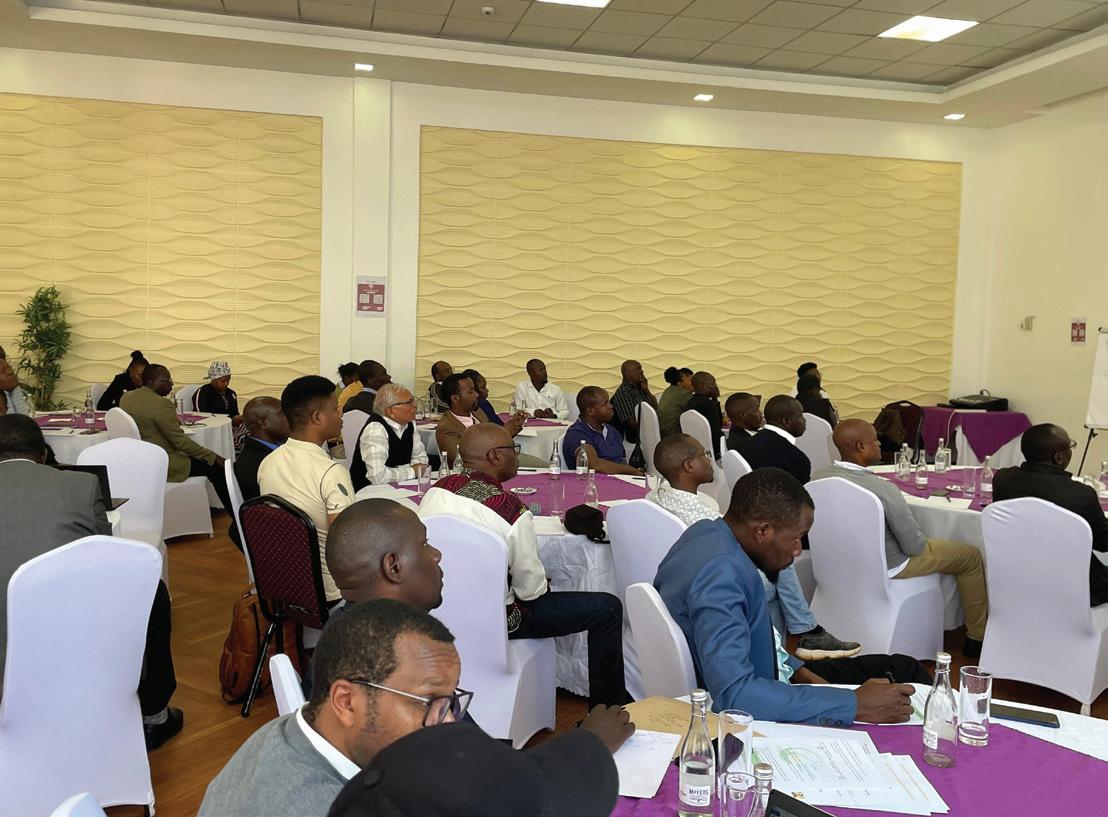
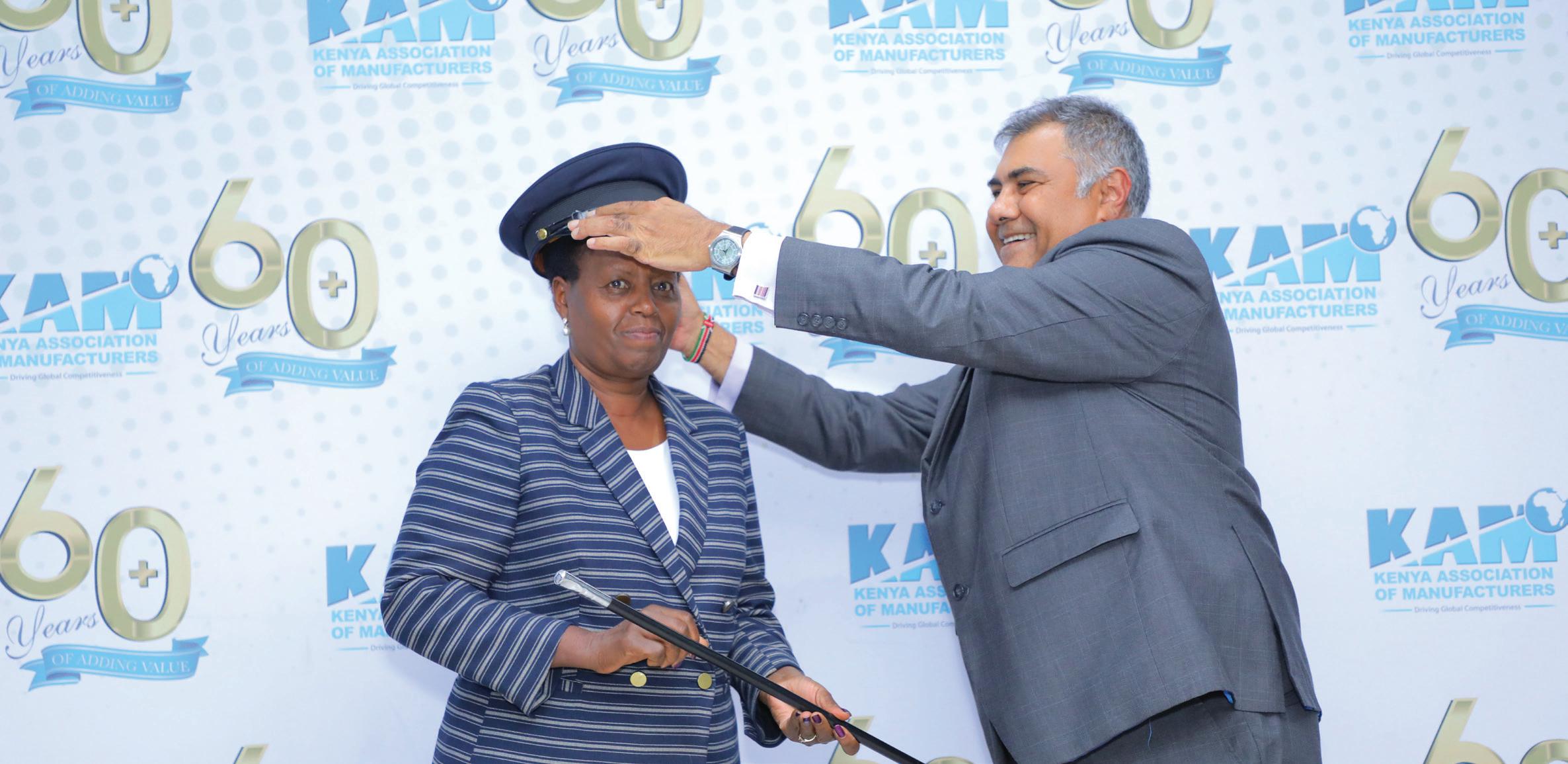
Karuku is the second woman business leader to chair the KAM Board, following Flora Mutahi, the first woman to hold the position since the Association’s establishment in 1959.
By Industry Today Correspondent
Jane Karuku has been elevated to Kenya Association of Manufacturers’ (KAM) National Chairperson, taking over from Rajan Shah, whose term ended in July.
Karuku becomes the second woman business leader to chair the KAM Board after Flora Mutahi (appointed in 2016), the first woman to Chair the Association’s Board since its inception in 1959.
Mutahi is known for introducing flavoured teas in Kenya through Melvin Marsh International, where she is the Chief Executive Officer.
Before this appointment, Karuku served as Vice Chairperson since July 2022 and will lead the Association’s Board of Directors for two years.
The Group Managing Director and Chief Executive Officer of East African Breweries Limited (EABL) said she is looking forward to contributing to the growth of the manufacturing sector in line with the Association’s purpose of creating prosperity for the Nation through sustainable industrialization.
“Cognizant of our ambition to grow the contribution of manufacturing to Kenya’s Gross Domestic Product (GDP) to 20% by 2030, it is clear we have a lot to do to lead the manufacturing sector towards this ambition,” she said.
The new Chairperson has focused on driving Kenya’s industrialization agenda, driving membership growth and enhancing stakeholder engagement.
“Our first agenda is to industrialize this country and ensure that through KAM, industrialization is more significant than ever. The second agenda is to meet members’ needs, thereby supporting them realize our purpose for industrialization. Thirdly, is to engage all our stakeholders in realizing our industrialization agenda. I am looking to build an organization that is inclusive internally and externally, including our membership and all other stakeholders,” she explained.
Karuku is a dynamic business leader with solid management experience spanning over 25 years in FMCG and nongovernmental organizations.
PG Bison (Kenya) Limited Managing Director, Hitesh Mediratta, takes the Vice Chairperson position after serving on the KAM Board in various capacities, including providing strategic guidance on trade and tax matters affecting the manufacturing sector.
The outgoing Chairman, Rajan Shah, the Chief Executive Officer of Capwell Industries, will remain an Ex-Officio member of the Board, playing an advisory role in directing the growth of the Association.

From modest origins and initially relying heavily on imported materials for its shoe production -Bata Kenya has evolved into a household brand, maintaining its pioneer status- to manufacturing a wide range of footwear for every member of the family, including the fashion-forward Gen Z population, all crafted from locally sourced materials.
By Conrad Onyango





As Bata Kenya celebrates its 85th anniversary, it has designed, produced and gifted an extraordinary shoe to Bradley Marongo, a towering giant popularly known as ‘Gen Z Goliath’.
Gen Z Goliath has never worn a closed shoe since birth.
This remarkable achievement underscores the company’s keen insight into its market, its ability to adapt to evolving consumer needs and preferences, and its agility in meeting market demands, which are now primarily influenced by Gen Z customers.
“It is the biggest shoe we have ever made. I am a size eight, for instance, but his shoe, if you measure it by size, is a size 21. So it is the largest shoe that we have ever made in Bata, Kenya,” said Bata Kenya Managing Director, Benson Okumu.
At the moment, the company has given the Internet sensation

We were very happy to have assisted Gen Z Goliath. He was excited because that is the first time he’s putting on a closed shoe in his life. That is just to reinforce that we can respond to any customer requirement. Mr. Okumu

The Bata shoe organization was founded in 1894 by the BATA family in the rural town of Zlín, Czechoslovakia. The family quickly expanded the business internationally, bringing it to Kenya in 1939 led by the founder, Thomas BATA.
At that time, many Kenyans walked long distances over rugged terrain, making durable and affordable footwear essential for protection and comfort.
“Bata came in and filled in that gap; we were one of the pioneer shoe producers in the country. We still remain the market leader from that time, and that means there is something special about this company,” affirmed Okumu.
As Kenya modernized over the years, shoes evolved from mere necessities to symbols of social status and modernity, and Bata has moved with the times to become a household brand in the country’s footwear industry.
Now, it prides itself on having a wide range of shoes - from essentials, protective like gumboots and military boots, to fashion and performance shoes for exercising, shoes for every member of the family and for every occasion. The company has also expanded its product offering to include handbags, belts, insoles, shoe polish, shoe brushes, and socks.
First Kenyan-made shoe
Bata’s first Kenyan-made shoe was called Hockey- a canvas boot with a rubber vulcanized sole- now sold under a different brand name. At that time, most of the materials used to make the shoe were imported.
“During that time, we didn’t have a facility that could make what we are calling the vulcanized sole. We didn’t have the machines that could cut the canvas,” Okumu recalls.
Today, Bata manufactures 80% of all the products it sells in the country and only imports 20%, making it one of the strongest companies incorporated in Kenya as a manufacturer.
Bata’s first factory was originally set up in Mombasa, but overheating machinery prompted a relocation to Limuru. Limuru was chosen for its cool climate, ideal for working with materials like leather, abundant water resources to help maintain the operations of the factory, proximity to raw materials, and transport accessibility as it is located just 40 kilometers from Nairobi.
“Some of our early wins was the establishment of a local manufacturing facility. This meant that now we were not depending on imports but supporting local employment, the local raw material base, and supporting the local suppliers,” said Okumu.
The fully-fledged state-of-the-art factory in Limuru has a capacity of over 30 million pairs per year, powering the “Buy Kenya, Build Kenya” initiative. The biggest input of its products is leather sourced from local farmers/tanners.

Started as a small factory, Bata Limuru Factory has expanded over the years to have six production units: the leather production unit for school shoes, safari boots, mens dress and other leather shoes, the canvas unit for Ngomas and bata bullets, the sandak department for plastic shoes and sandals like Sporty, Hazel, Toro etc
There is also the gumboot unit for Sandak gumboots for the rain and other utilities, and the palletizing unit, which manufactures the PVC for the production of gumboots, soles, and canvas soles. Finally, there is the Thong factory for production of Pata Pata.
Among iconic Bata brands include Bata Prefect (now Toughees), which became synonymous with school shoes, Safari Boots, which is still iconic because of its robust nature and capacity to move around through rugged areas, and Ngoma, a canvas shoe that has become an essential footwear for everyone and cuts across all consumers.
Our experience and knowledge in the insurance industry, enables us to deliver an extensive range of innovative products and services across a wide range of industries, including but not limited to:
For more information, contact us on 0714 044 000 | email info@minet.co.ke | www.minet.com
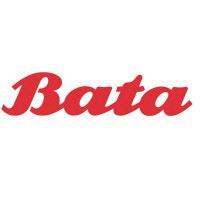


Over two years ago, the company introduced the Sneaker Studio, which offers a wide range of shoes targeting the outgoing Generation Z customers in terms of sophistication, choices, and preferences at various price points. Over 90% of Bata stores now have sneaker studios.
The footwear company boasts of 126 stores and 20 depots countrywide. It has also begun opening new markets through domestic franchising, allowing it to reach more Kenyans and create entrepreneurial opportunities. Currently, Bata has four franchise outlets and is recording increased interest in this business model- all these powering the economic growth and job creation.
Bata primarily employs over 3,000 people, a significant increase from the initial 50 employees when it started operations, and indirectly supports thousands more through associated businesses.
To ensure sustainability and a ready pool of workers to match its growth and build capacity in the market, the company has established a regional training center in Limuru to train people locally, whether they work for Bata or in their own future manufacturing ventures. The company has heavily invested in digital learning through programs like High Flyer and Bata Leaders of Tomorrow.
We believe in empowering our employees by embracing a continuous learning culture. Additionally, some of our Kenyan employees are now in expertise jobs in other countries such as Zimbabwe and Uganda. Mr. Okumu
In terms of innovation leadership, Bata Kenya is playing a pivotal role and leading the way in piloting major systems change through initiatives like the Pangea project - an Enterprise resource planning (ERP) system that is being implemented in Bata worldwide, with Kenya chosen as the pioneer country.
Being a family business, Bata was founded on strong values of unity and teamwork, with this sense of oneness being instrumental in driving its success over the last 85 years.
“Today we refer to this value as “one team”, which has allowed us to navigate challenges over the years. And whenever external factors have affected us, it’s the strength of our people, deeply rooted in our culture and core values, that has allowed us to adapt and continue thriving,” explained Okumu.
Bata founder, Thomas Bata believed that to do a job well, one must lead by example. This value, Benson said, has shaped the company’s culture of responsibility and integrity. Other core values that have resonated and guided its growth, including “count on me,” where each team member shares the commitment to take ownership and work together toward long-term success.
The company’s ability to embrace bold, courageous ideas, whether in product design or expanding into new markets, has kept it at the forefront of the industry. The passion for crafting shoes and customer service has been the driving force for continuous improvement and ensuring the delivery of the best products and services.
Bata has also committed to making a positive impact in the communities and exceeding customer expectations, striving always to go above and beyond as part of its DNA.
“We don’t just aim to meet our customers’ needs; we strive to exceed them, ensuring that our products and services consistently deliver excellence,” said Okumu.

Corporate Social Responsibility
Close to the heart of Bata operations is Corporate Social Responsibility, which runs under four pillars: education, health and safety, sustainability, and mentorship.
Initiatives like the Bata Children’s Program have contributed to the well-being of society, empowering both our employees and the communities it serves across the country.
As part of Bata’s global anniversary celebrations, Bata Kenya donated 1,500 pairs of shoes and sanitary items to Mathare North Primary School. The company is currently running a donation drive across its stores to support needy families in Turkana, during the World Children’s Day in Nivember.
Bata is the reigning champion of the annual Federation of Kenya Employer awards under the Responsible Business Product category.
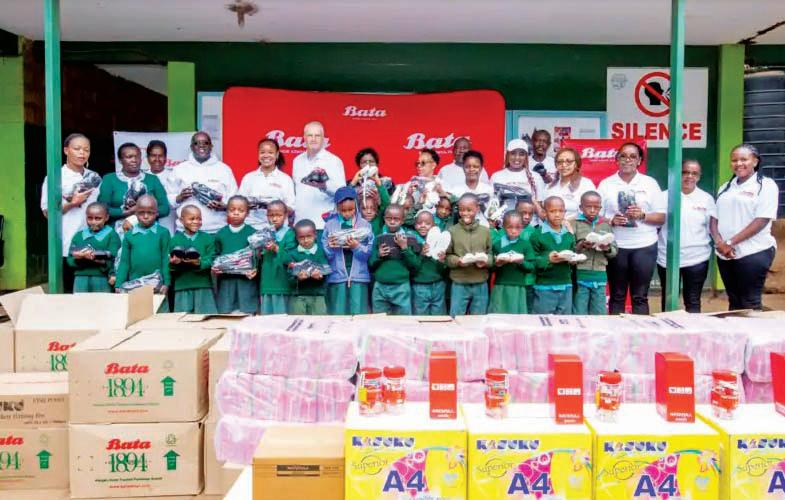


























A multi-stakeholder collaboration involving the Ministry of Energy and Petroleum, the Kenya Association of Manufacturers (KAM) through its Centre for Energy Efficiency and Conservation (CEEC), and the Energy and Petroleum Regulatory Authority (EPRA) is working to raise awareness and promote the adoption of energy management programs among industry players.
By Ronald Ketter, Eustace Njeru,
and
Ignatius Chirchir,
EPRA
For some time, energy efficiency had been relegated to the back burner in sustainability discussions. This is despite the fact that inefficient use of energy leads to both financial and environmental costs, in micro and macroeconomic space.
It is essential to reduce the energy used to produce goods and services. This is an easier path of reducing costs of production and related emissions and the capital cost requirements for construction of new power plants. Kenya has been on the correct path to achieve some of its energy efficiency goals. It is signatory to international treaties and has developed national policy instruments and strategies towards this.
Sustainable Development Goals (SDG) number seven (SDG 7) for example, is an international treaty that seeks to ensure universal access to affordable, reliable, sustainable and modern energy. To achieve this goal, several targets were prioritised, key among them being, increasing substantially the share of renewable energy in the global energy mix and doubling the global rate of improvement in energy efficiency by 2030.
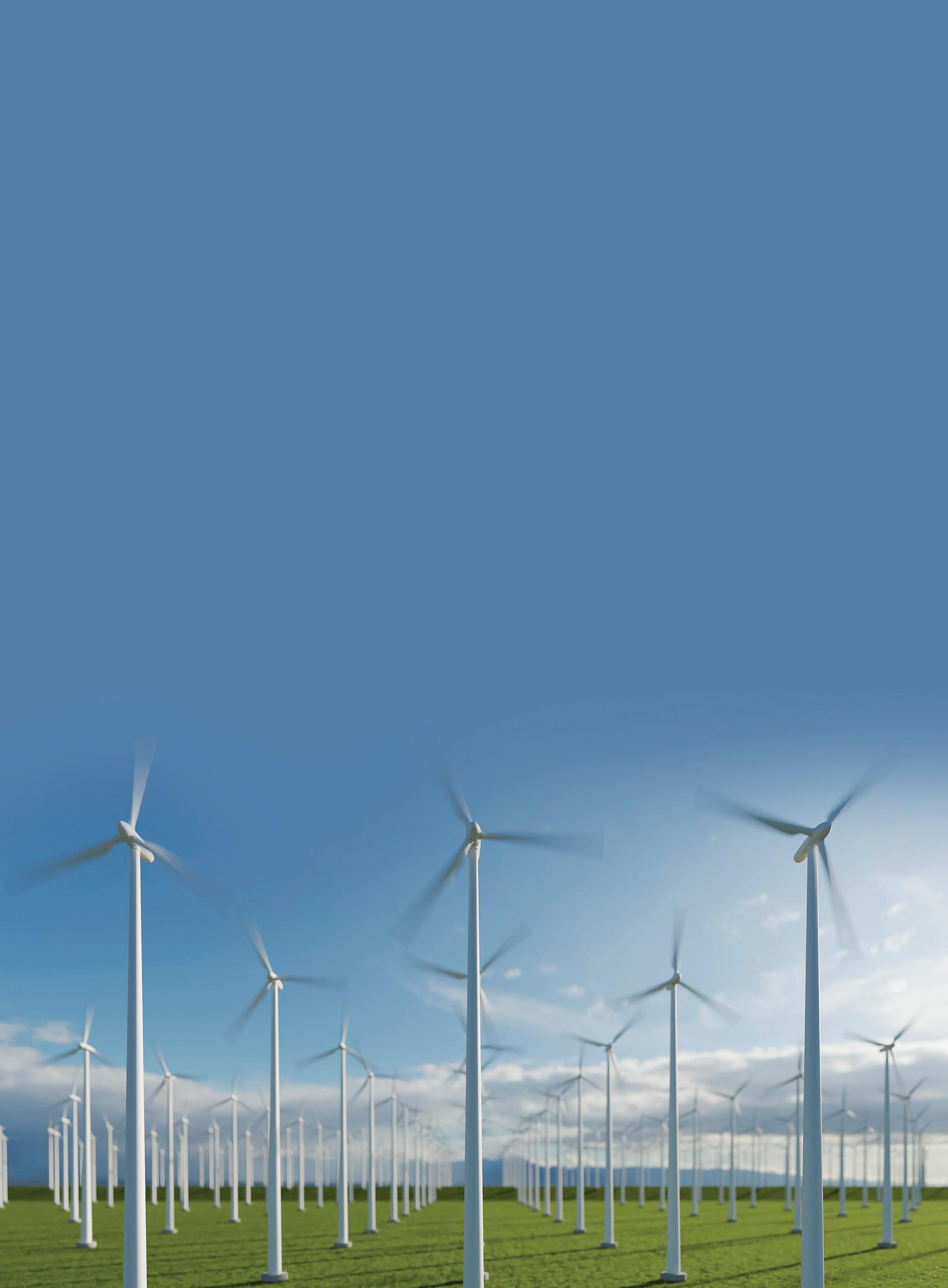
Through doubling the global rate of improvement in energy efficiency, energy consumption can be reduced while maintaining the same level of energy services. Energy efficiency will therefore make energy more affordable and accessible, bringing other benefits that extend across several SDGs.
The Paris Agreement of 2015, signed by 196 parties, is a legally binding international treaty on climate change that seeks to limit increase in the global average temperature to well below 2°C above pre-industrial levels, while pursuing efforts to limit the temperature increase to 1.5°Cabove preindustrial levels . Parties agreed to reduce the Green House Gases (GHG) emissions and pursue climate-resilient economic and social development pathways. The Agreement works on a five-year cycle of increasingly ambitious climate action carried out by Parties.
Kenya, being a signatory to this Agreement, submitted its first Nationally Determined Contribution (NDC) in 2016 and an updated NDC in 2020. In the updated NDC, Kenya has committed to abate its GHG emissions by 32% by 2030 relative to the business-as-usual scenario of 143 MtCO2eq.

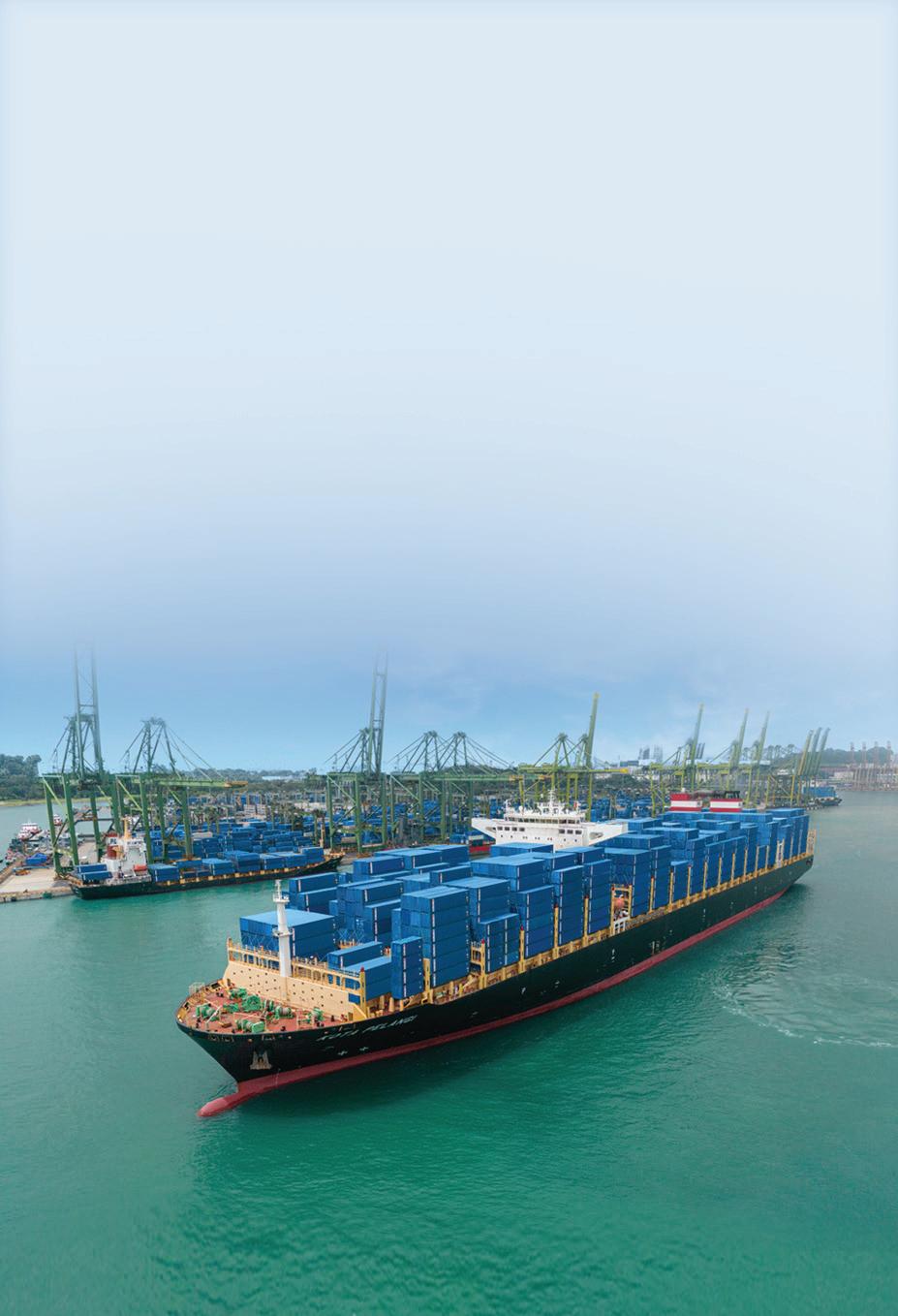














First fuel Energy efficiency is considered the “first fuel” in clean energy transitions, as it provides one of the quickest and most cost-effective CO2 mitigation options . Improving energy efficiency together with electrification, behavioural change and digitalisation will have a great impact in reducing the global energy intensity. It is for this reason that energy efficiency is currently gaining a strong global focus among policy makers in recognition of its important role in enhancing energy security and affordability, and in accelerating clean energy transitions.
The energy sector is responsible for three-quarters of global emissions, and transforming it is critical to tackling the climate change. 133 parties at the UN’s COP28 held in Dubai in December 2023 committed to the Global Renewable and Energy Efficiency Pledge, that seeks for an integrated strategy and international cooperation to combine energy efficiency with renewable energy.
The parties committed to doubling the annual average rate of energy efficiency improvements to 4% by putting energy efficiency at the core of policymaking, planning, and major investment decisions. Promotion of renewable energy without enhancing energy efficiency on both the supply and demand sides could result in energy waste and continued reliance on fossil fuels.
The combined approach of increasing renewable capacity and enhancing energy efficiency is crucial for reducing dependence on fossil fuels and achieving a cost-effective transition to renewable energy. Improving energy efficiency lowers the total demand for energy resources allowing for an increase in the proportion of renewables in the energy mix, thereby decreasing environmental impact caused by energy production and consumption. This will enhance energy security by making energy systems more resilient and less dependent on fossil fuels.

The global energy efficiency rates, according to IEA, improved by 2% in 2022. That was double the speed of gains the previous five years, but slowed to a 1.3% improvement in 2023. In terms investment growth in energy efficiency-related measures in 2023 there was a reduction in growth from 16% in 2022 to 4% in 2023 reaching USD 624 billion in investments. Under current expected and announced policies, efficiency-related investment is projected to rise by a further 50%, to almost USD 910 billion per year by 2030.
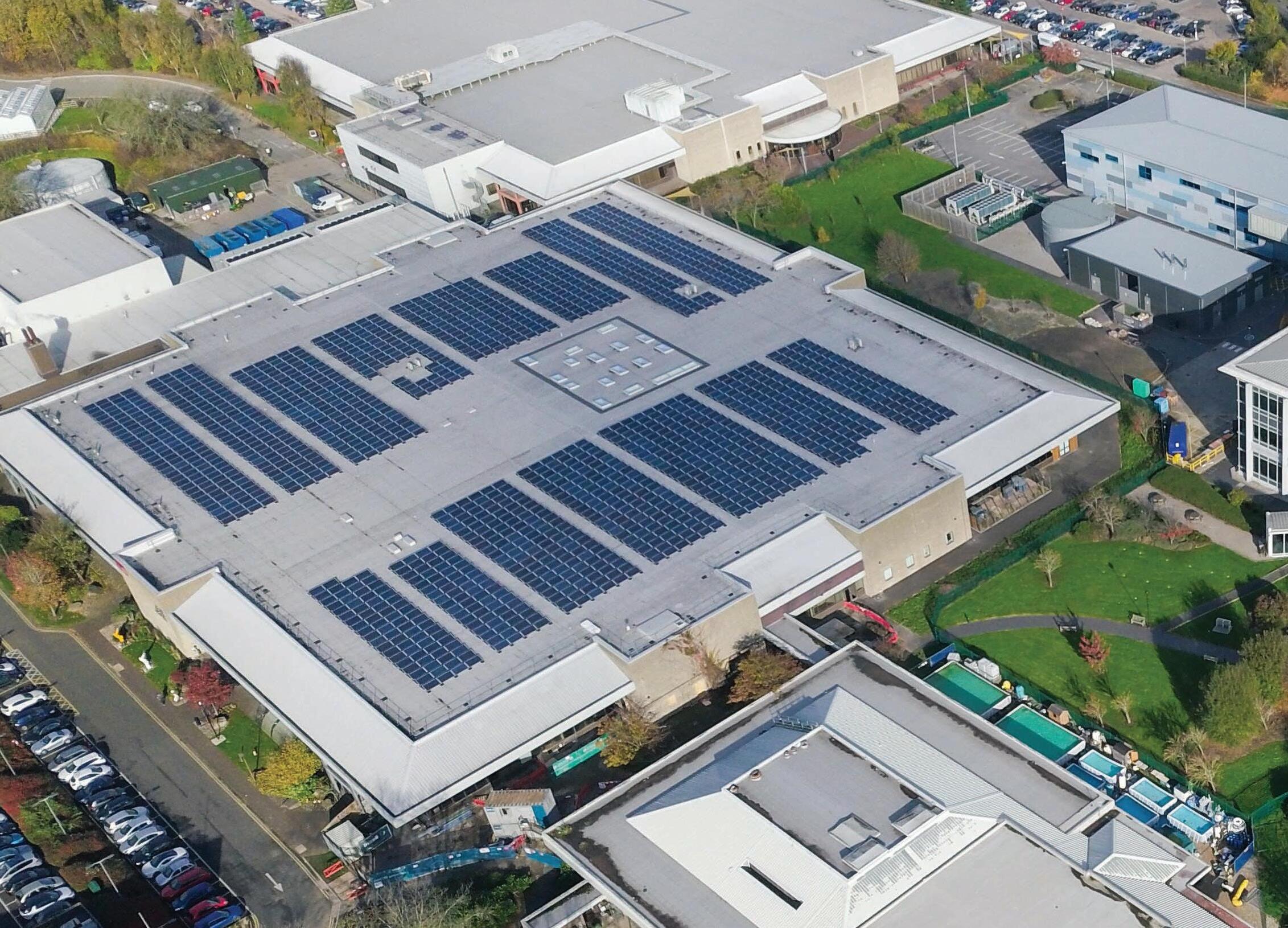
The global energy efficiency rates, according to IEA, improved by 2% in 2022. That was double the speed of gains the previous five years, but slowed to a 1.3% improvement in 2023. In terms investment growth in energy efficiency-related measures in 2023 there was a reduction in growth from 16% in 2022 to 4% in 2023 reaching USD 624 billion in investments. Under current expected and announced policies, efficiency-related investment is projected to rise by a further 50%, to
almost USD 910 billion per year by 2030. However, these levels are still around half of the energy efficiency-related investment needed in the second half of the decade to realise the Net Zero Scenario goals of over USD 1.8 trillion in 2030. According to IEA’s Net Zero Scenario, the doubling of energy efficiency improvement from 2% to 4% per year would reduce global energy-related CO2 emissions by almost 11 Gt CO2 in 2030. In addition to energy savings and carbon emission reductions, other benefits would accrue from continuing to increase energy efficiency. Around 12 million new jobs would be created on the energy demand side by 2030 to achieve the efficiency improvements laid out in the IEA’s Net Zero scenario. This includes mostly high and medium skilled workers in the professional, construction and manufacturing sectors to support renovations and new buildings, electric vehicle deployment and energy management.
Electrification holds a great potential to reduce final energy demand given that electric technologies are generally much more efficient than fossil fuel-based alternatives.
Electrified
The electrification of sectors such as transportation (electric vehicles) and heating (heat pumps) is leading to more efficient energy use, especially when combined with renewable energy sources. Fully electrified energy systems can cut final energy
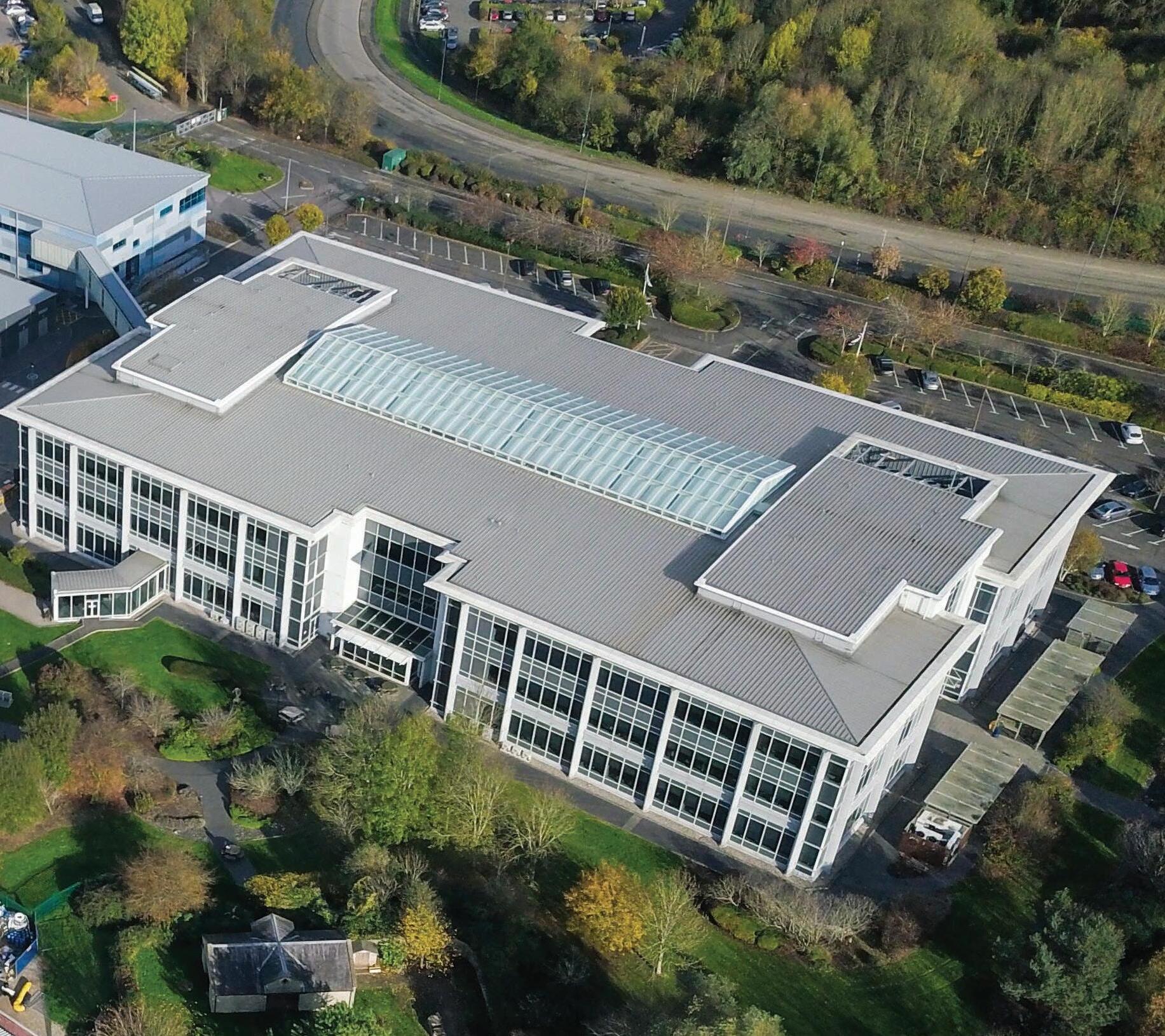
consumption by up to 40%. In 2023, electric vehicles (EVs) accounted for about 18% of all new vehicles sold globally, up from 14% in 2022. This trend is expected to accelerate further given governments policies, incentives and the cost competitiveness of EVs. Whereas the global heat pumps
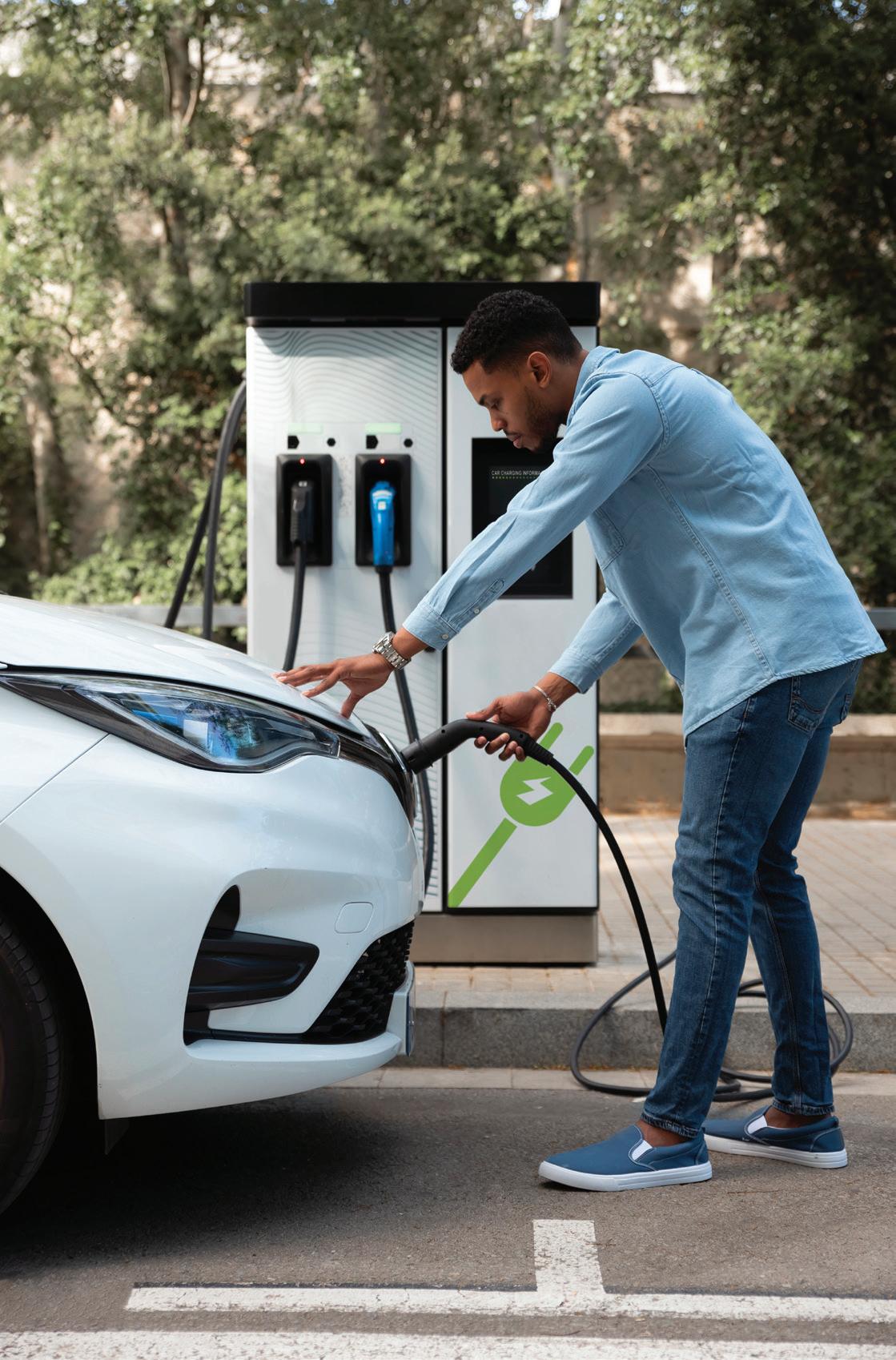
capacity additions in 2023 fell by around 3% compared to 2022, China saw a 12% increase. Technologies such as heat pumps and EVs not only shifts energy use to electricity that is increasingly coming from clean energy sources but also uses much less final energy than a conventional car or gas boiler to do the same job.
Green hydrogen is also emerging as a promising clean energy carrier that could be utilised in hard to abate sectors. Hydrogen can be used directly as an energy source or can be transformed into ‘hydrogen carriers’ such as ammonia and methanol. Green hydrogen can produce high-temperature heat to power industrial processes—all while emitting zero greenhouse gases. Hydrogen can also be utilised in transportation, power generation and heating buildings. There are ongoing efforts to improve the overall efficiencies of green hydrogen production and conversion technologies. The Energy Act 2019 mandates Energy and Petroleum Regulatory Authority (EPRA) to develop and implement national energy efficiency and conservation programmes. The Authority executes this mandate through regulations and initiatives on energy management targeting designated high energy consuming facilities, and establishing minimum energy performance parameters for key appliances.

The Energy (Energy Management) regulations, 2012, requires facilities consuming more than 180,000 kWh of energy to conduct energy audits at least once every three years and implement the identified energy saving measures, among other obligations. The Authority has executed this mandate in close collaboration with Ministry of Energy and Petroleum and Kenya Association of Manufacturers (KAM) through its Centre for Energy Efficiency and Conservation (CEEC). This close working relationship with the KAM-CEEC has contributed to increasing awareness and uptake of energy management programs among industry players.
The Authority, through the Energy (Appliances’ Energy Performance and Labelling) regulations,2016, has established minimum energy performance standards (MEPS) for appliances such as household refrigerators, non-ducted air conditioners, three-phase induction motors and general service lamps. The MEPS ensures that the least efficient appliances are excluded from the market while the labelling program provides consumers with accurate and comparable information on the appliance’s energy efficiency performance. This enables consumers to make informed decisions when purchasing these appliances.
There still exists a significant potential to improve energy efficiency rates in Kenya especially among the designated facilities as well as through setting of MEPS for more household appliances. The Authority is in the process of reviewing the two regulations with a view of incorporating additional regulatory tools such as establishment of energy benchmarks for various sectors, establishment of a framework governing operations of Energy Savings Companies (ESCOs), among others.
The adoption of these revised regulations is expected to revolutionise the energy efficiency sub-sector in Kenya, enabling the country to fast-track the achievement of its obligations under the Paris Agreement.
Despite the high benefits and low cost of energy efficiency as a major solution for reducing cost of production as well as mitigating climate change, a large number of energy efficiency opportunities remain untapped due to multiple barriers key among them being limited technical skills and inadequate financing.
The establishment of ESCOs in Kenya is expected to unlock the potential for implementation of energy efficiency projects through provision of structured financial products and technical expertise to the facilities. ESCOs will therefore play an important role in boosting private investments in the implementation of energy efficiency projects. The establishment of a Super ESCO by KPLC to address both public- and private-sector opportunities for ESCOs will also help in fostering the growth of ESCO industry in Kenya. It is expected that the Super ESCO will facilitate the development and implementation of energy efficiency projects (including the financing) but subcontract implementation to private-sector ESCOs.
The public sector entities have generally lagged its private sector peers in undertaking energy efficiency projects and KPLC’s Super ESCO could play an important role by establish a revolving fund to support implementation of these projects.
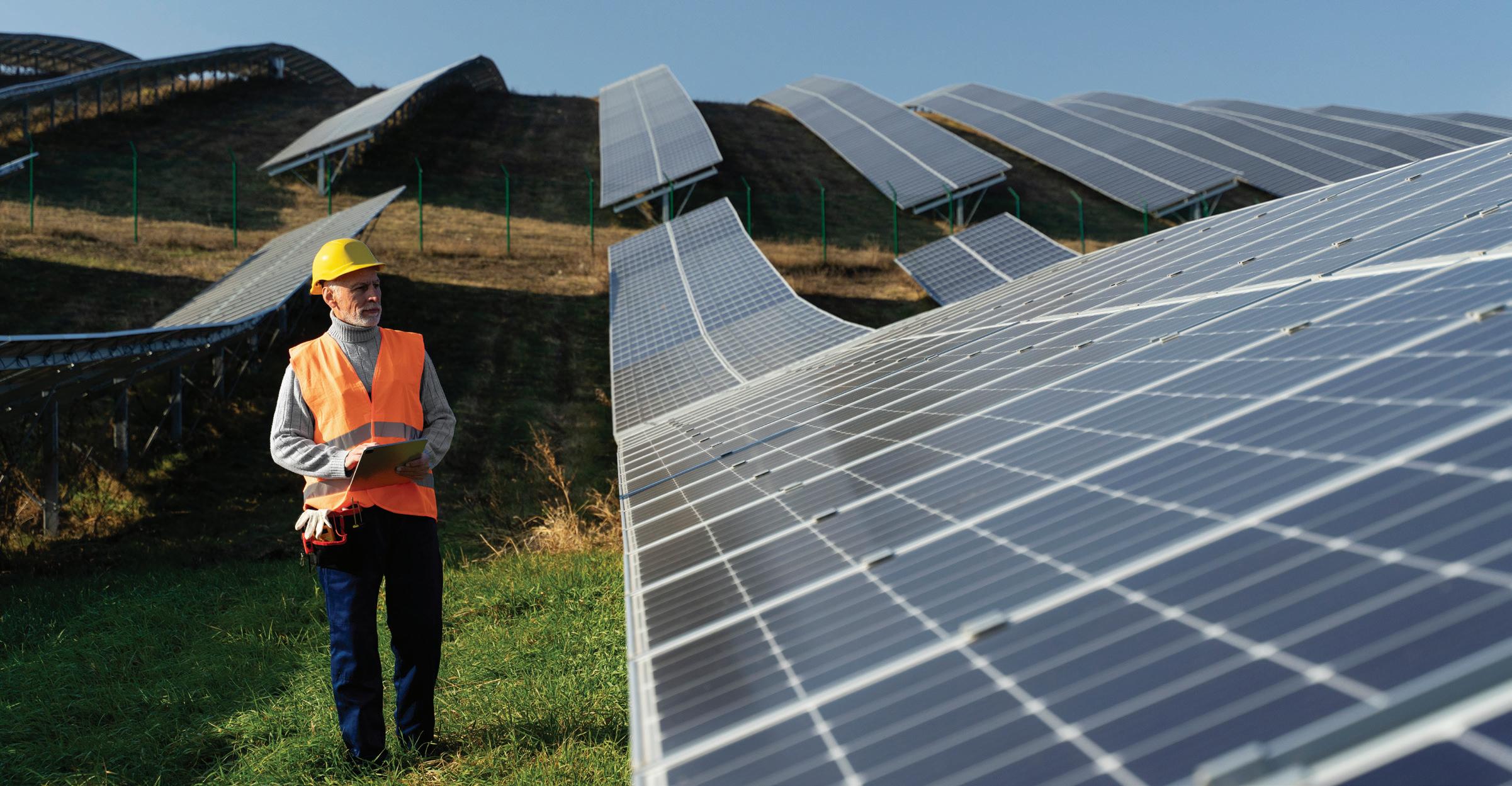

With a track record of introducing groundbreaking clean technology products tailored for local needs, Techwin Limited is at the forefront of promoting eco-friendly practices among dairy farmers, marking a new era in sustainable dairy processing.
By Queen L’ombaka Techwin Limited, Marketing and Corporate Affairs Coordinator
In the face of the global climate crisis, the manufacturing sector has often been cast as a villain, contributing significantly to greenhouse gas emissions.
However, a growing number of businesses are demonstrating that it’s possible to manufacture products sustainably and even play a positive role in mitigating climate change.
Kenya’s dairy industry, with its expanding local manufacturing sector, is a prime example of how innovation and sustainability can go hand-in-hand. At the forefront of this movement is Techwin Limited, a pioneering manufacturer that is transforming the dairy value chain through clean energy processing solutions.
Kenya’s dairy sector is one of the most significant contributors to the national economy with over 80% of dairy farmers being small holder farmers who live in villages. This industry faces numerous challenges related to energy inefficiency due to grid reach and post-harvest losses as dairy processing often relies on fossil fuels and the national grid, which can be both unreliable up country and harmful to the environment. However, with innovative local manufacturing on the rise, companies are developing solutions that leverage available renewable energy sources, particularly biogas and solar

power for cold storage and value addition including heat treatment and drying.
An organization like Techwin Limited, a Kenyan food processing equipment manufacturer, has been instrumental in integrating innovative technologies into dairy processing. Their focus on creating equipment that harnesses renewable energy not only addresses energy supply issues but also aligns with Kenya’s commitment to reducing greenhouse gas emissions. For instance, the company manufactures biogas pasteurizers that utilize waste from dairy farms, converting it into clean energy while ensuring the milk is processed safely and efficiently. This not only lowers dependence on the grid but also mitigates methane emissions, a potent greenhouse gas.
For the last few years, the company has introduced several groundbreaking clean technology products designed specifically for local conditions. Some of the standout innovations include:
• Biogas Pasteurizers: These units utilize biogas generated from dairy waste to pasteurize milk, providing a sustainable energy source while improving product safety. This not only reduces operational costs but also encourages waste management practices.

• Solar Milk Cooling Tanks: In areas where electricity supply is erratic, these tanks ensure that milk can be cooled quickly and stored properly, preserving its quality and extending its shelf life. This technology is especially beneficial for farmers in remote regions who previously faced significant losses due to spoilage.
• Solar Cold Rooms: These facilities enable farmers to store their produce for longer periods, allowing them to negotiate better market prices rather than selling immediately at a loss.
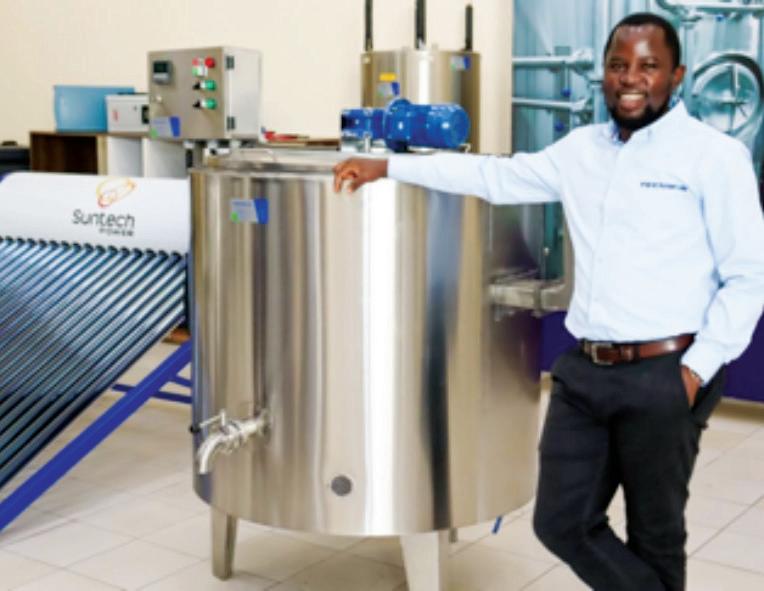
Working with government agencies and other development partners such as Kenya Climate Innovation Centre (KCIC), World Wildlife Fund (WWF), Global Alliance for Improved Nutrition (GAIN), and VSF-Suisse among other who champion the Net Zero agenda in Kenya, this manufacturing firm has been able to reach remote areas of Kenya in the bid to sensitize masses on the need to modernize our agricultural processes and incorporate sustainable solutions.
One of the most significant impacts of these innovations is on marginalized communities that traditionally have limited access to reliable energy sources. In places like Garissa, Wajir and Marsabit, where families keep camels for milk production, the introduction of solar-powered milk stations has been transformative. These stations not only provide a reliable means of cooling and storing milk but also facilitate value addition processes, allowing farmers to produce cheese and yoghurt, thereby enhancing their income.
Moreover, the ability to store milk for longer periods means that these communities can strategize their sales better, reducing the pressure to sell immediately at lower prices. This empowerment fosters resilience among families who have historically faced economic challenges due to post-harvest losses.
In areas like Garissa, Wajir, and North Eastern Kenya, where camel farming is prevalent, post-harvest losses of milk have been a significant challenge. However, with the introduction of solar milk cooling stations, farmers can now store milk for longer periods, allowing them to find better markets and add value to their products.
For manufacturers like Techwin, working with CBOs like Modogashe Women Self Help Group in Wajir County, Bangale Milk Aggregation Center in Tana River County, Karare Women Dairy Group in Marsabit, and Olderkesi Cooler Women Group in Narok among others not only help improve the planet but also ensure they impact the people in those communities.
The integration of renewable energy solutions in the dairy sector not only helps in combating climate change but also fosters economic empowerment in local communities. Organizations should shift their focus to sustainable manufacturing practices because this can lead to significant environmental benefits while addressing our socio-economic challenges.
With the global call for action against climate change growing louder, Kenya’s approach to local manufacturing in the dairy industry should serves as a model for other African nations. The launch of the Kenya Dairy Industry Sustainability Roadmap 2023-2032 by the Kenya Dairy Boad comes as a promise for support from the government and its agencies to organization such as Techwin Limited who are investing in technology and expertise to provide sustainable solutions in the food processing industry.
As we reflect on the interconnectedness of our actions, it is evident that innovative local solutions like those provided by Techwin Limited can lead us toward a more sustainable and equitable country. By leveraging our natural resources and supporting local manufacturing, we can not only combat climate change but also uplift communities that rely on agriculture for their livelihoods. The journey may be long, but the steps taken today will pave the way for a brighter, greener tomorrow.
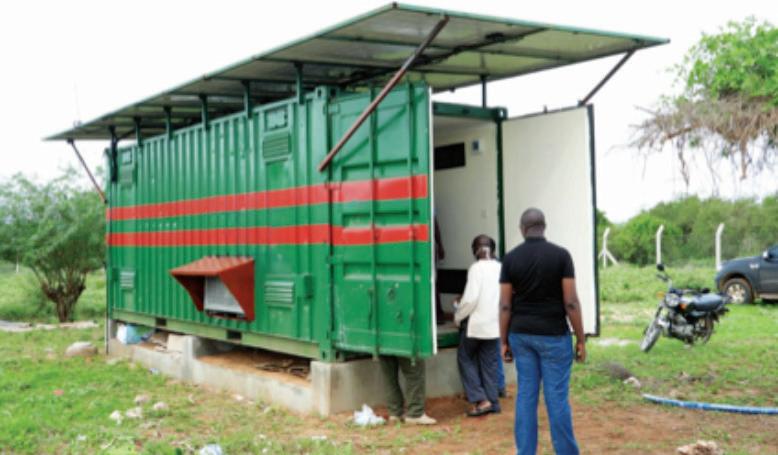




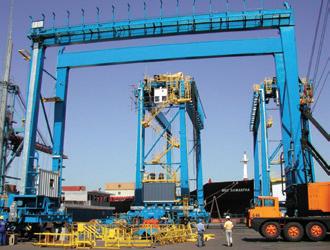


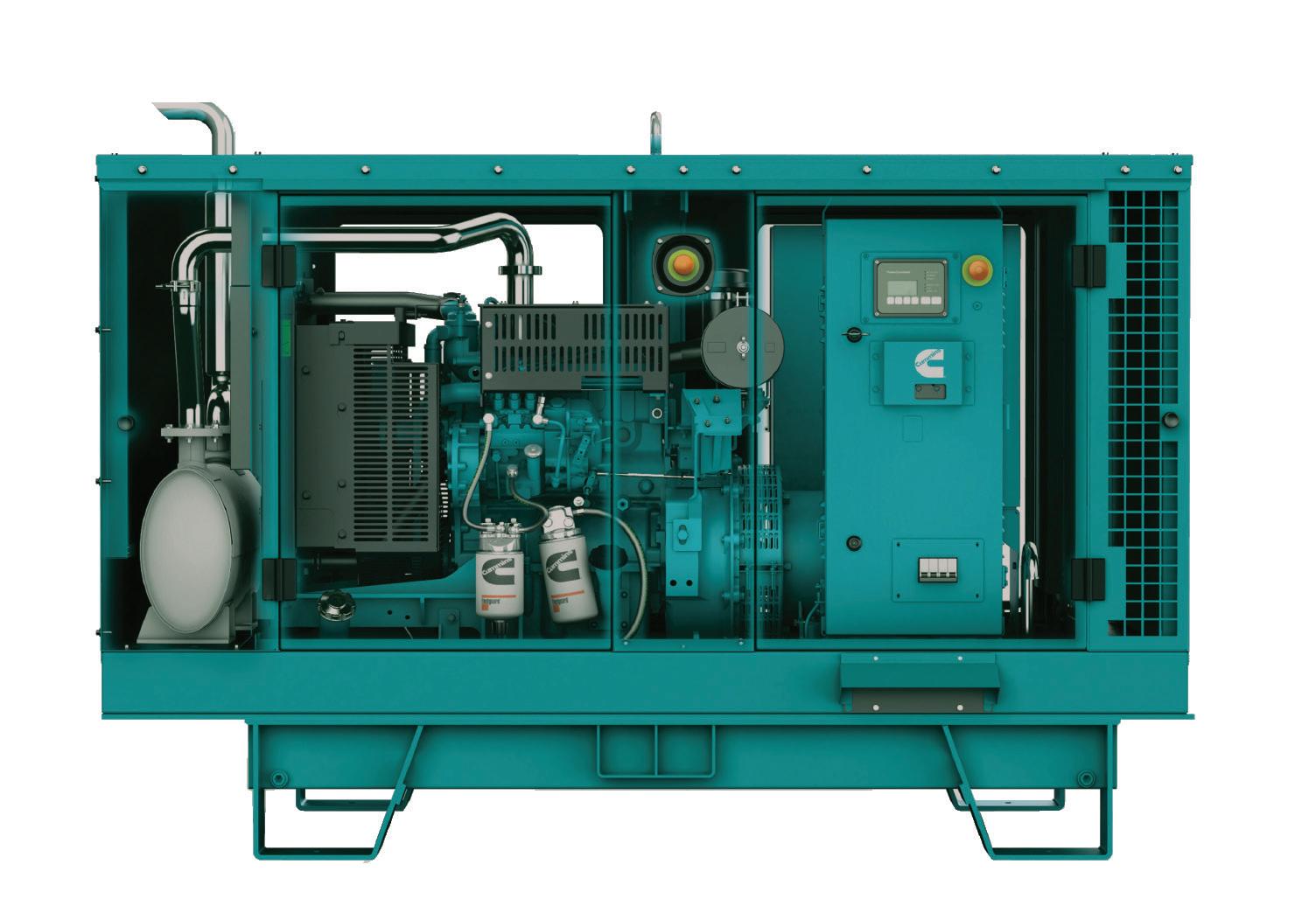

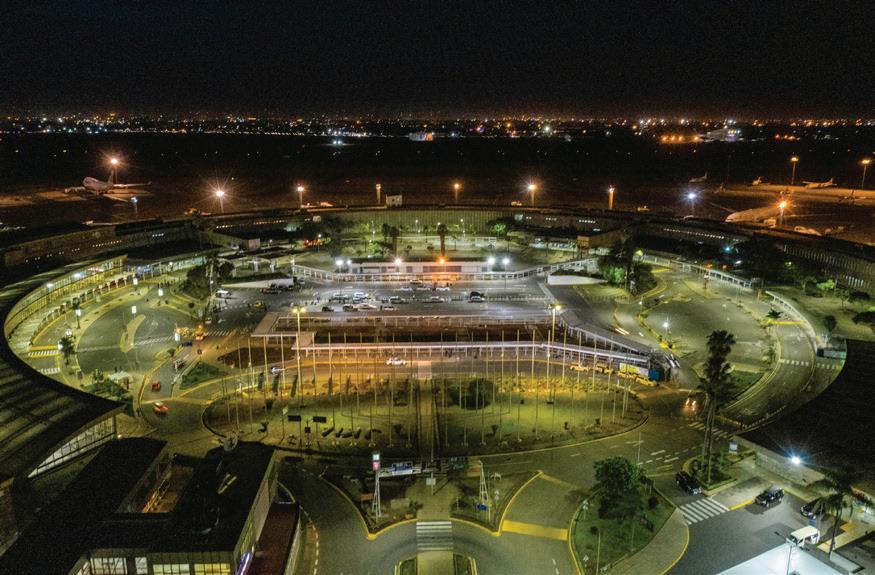


SUPPLEMENT FEATURE

For 70 years, KenGen has been more than just an energy company—it has been the heartbeat of Kenya’s industrial growth, illuminating homes, powering industries, and setting the pace for Africa’s transition to a sustainable energy future. Now, with a bold 10-year plan (2024–2034) aimed at cementing Kenya’s leadership in green energy, KenGen is transforming the nation’s energy landscape with a vision as dynamic and resilient as the geothermal power that fuels it.
By Conrad Onyango
Kenya Electricity Generating Company (KenGen) PLC is celebrating a historic milestone - seven decades of powering homes and businesses in Kenya while extending its influence across the African continent.
From humble beginnings to becoming the Nairobi Securities Exchange (NSE)-listed green energy giant it is today, KenGen has consistently pushed the boundaries of what is possible in renewable energy innovation and sustainability.
At the heart of its ambitions is a bold 10-year strategy to expand its generation capacity, focusing exclusively on clean energy. This includes the ongoing upgrade of Kenya’s oldest geothermal plant, the 45MW Olkaria I, boosting its output by 30% and reaffirming KenGen’s leadership in geothermal technology.
KenGen has embraced new technologies, such as the innovative geothermal wellhead technology, which allows for faster energy production, and has invested in expanding its geothermal capacity.
Eng. Peter Njenga
KenGen Managing Director and CEO
“KenGen’s long-standing commitment to environmental conservation, corporate governance, and diversification of its energy portfolio has cemented its leadership in the energy sector,” he added.


This journey into the future is anchored on a legacy of innovation, an unwavering commitment to renewable energy, and a promise to propel Kenya closer to its ambition of achieving 100% clean energy. At the core of this transformation is KenGen’s groundbreaking Green Energy Park, a beacon of sustainable industrialization that stands ready to redefine how industries operate in Africa. This is right in line with the Government Bottom-Up Economic Transformation Agenda (BETA) and will go a long way in improving the livelihood of people in the country.
There is no doubt that in the seven decades of its operation, having commissioned Africa’s first geothermal power plant in 1981 must have been one of its greatest milestones. That and for developing the world’s largest geothermal project, Olkaria (280MW), in 2015 which was later upgraded to 300MW thanks to plant operation and maintenance efficiencies.
Exploration for geothermal resources in Kenya began in the preindependence period and gained significant momentum as from 1952, headlined by the drilling of two geothermal wells at Olkaria in Naivasha, Nakuru County.
Since then, KenGen has been at the forefront of powering Kenya and East Africa region through a diverse energy portfolio that includes geothermal, hydro, wind and some thermal power.
Today, the company generates approximately 60% of the energy consumed in Kenya, substantially reducing reliance on non-renewable sources, enhancing energy security, and promoting regional development.
The company’s largest assets include geothermal (754MW) from several power stations - Olkaria I (Under rehabilitation), Olkaria I Additional Unit 4, 5 and 6, Olkaria II, Olkaria IV, Olkaria V and wellhead units, as well as (826MW) hydroelectric power from significant plants such as Masinga, Kamburu, Gitaru, Kindaruma, Kiambere, Tana, Turkwel, Sondu Miriu, small hydros and Sang’oro.
By the end of 2024, KenGen’s installed capacity reached 1,785MW, with over 93% derived from clean energy sources. This achievement solidifies KenGen’s leadership in the green energy sector and significantly contributes to Kenya’s economy through power generation, job creation, technology transfer, and infrastructure development.
KenGen’s success is anchored in its commitment to innovation, environmental sustainability, and operational efficiency.
The ongoing rehabilitation of its hydro and geothermal plants, such as Olkaria I, along with the development of innovative green energy projects, including a data center green energy park, illustrates its continuous commitment to technological advancement.
The company is currently working on operationalizing the
Green Energy Park, which spans 342 hectares in Olkaria, Naivasha, to propel Kenya into a new era of energy innovation.
KenGen is actively engaging with potential investors and stakeholders, including government entities and private companies, to promote the park as a leading destination for green industrialization.
KenGen has over the years played a crucial role in catalyzing industrial growth in Kenya by maintaining a stable energy supply, offering significant support to sectors like manufacturing and services, which depend on consistent power. But today and in the future KenGen is offering industries a new business opportunity to set up industries at the company’s green energy park in Olkaria in Naivasha.
By providing reliable, low-cost, and sustainable electricity, the park will attract manufacturing, processing, and dataintensive industries to the area, fostering economic growth and job creation
Eng. Peter Njenga
The Green Energy Park has begun operations in phases, with the first phase expected to be completed within the next two to three years, will offer industrial investors - such as those involved in data centers, manufacturing plants, and agroprocessing facilities - electricity at subsidized rates.
It will also benefit non-industrial operations, including commercial ventures, research and innovation centers, and logistical hubs, contributing to a wellrounded economic ecosystem. The park targets both local and international businesses as it will help lower operational costs, allowing industries to achieve higher profit margins. This cost advantage will be especially appealing for energy-intensive operations like data centers and manufacturing plants, which require stable and affordable power to remain competitive.
The development is expected to attract further investment from global technology companies, positioning Kenya as a strategic location for cloud services, AI research, and other digital industries.
“This initiative will contribute to reducing carbon emissions, aligning with global climate goals and enhancing Kenya’s reputation as a leader in renewable energy adoption,” said Njenga.
KenGen continue to play a crucial role in promoting environmental sustainability by generating 93% of Kenya’s electricity from renewable sources. As a pioneer in carbon emission reduction, it has registered six projects under the
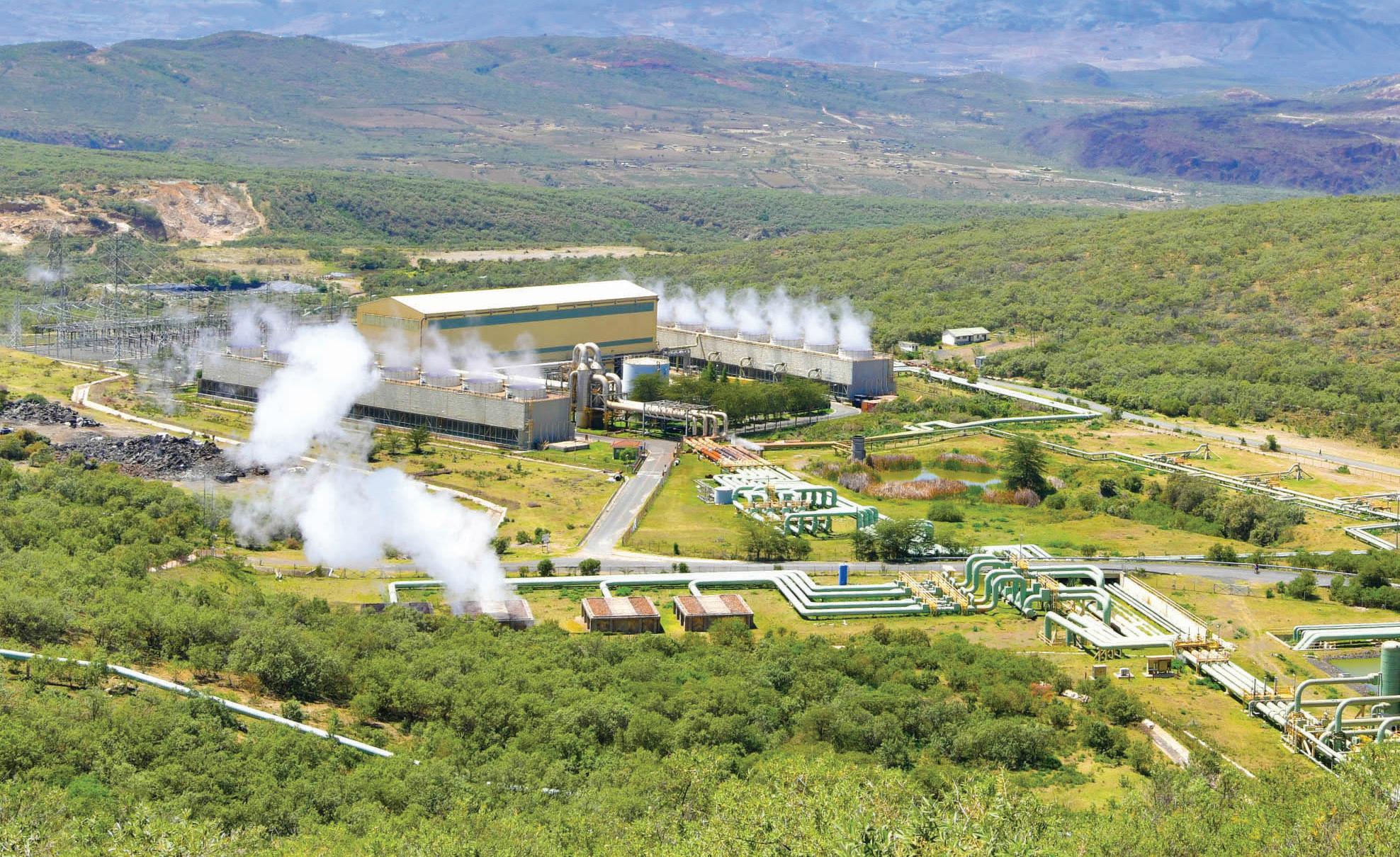
UN’s Clean Development Mechanism (CDM), successfully reducing over 1.5 million tonnes of CO2 emissions annually while earning carbon credits. Additionally, its tree-planting initiatives and water conservation projects support Kenya’s ambitious goal of planting 15 billion trees by 2030.
KenGen envisions a future where East Africa fully taps into its renewable energy potential to drive economic growth and industrialization. The company aims to become a regional hub for geothermal expertise and green energy solutions, contributing to sustainable development across Africa.
Today, KenGen has expanded its operations to Ethiopia, Tanzania, Eswatini and Djibouti, providing geothermal drilling services and reinforcing its role as a regional leader in clean energy.
Eng. Peter Njenga
The East Africa rift system has rich geothermal potential of which Kenya alone boast of an estimated 10,000MW and KenGen is leading the charge in tapping into these resources to generate affordable electricity to all and sundry.
The company demonstrates a strong commitment to corporate social responsibility (CSR) through its KenGen Foundation, which emphasizes education, health, and environmental sustainability.
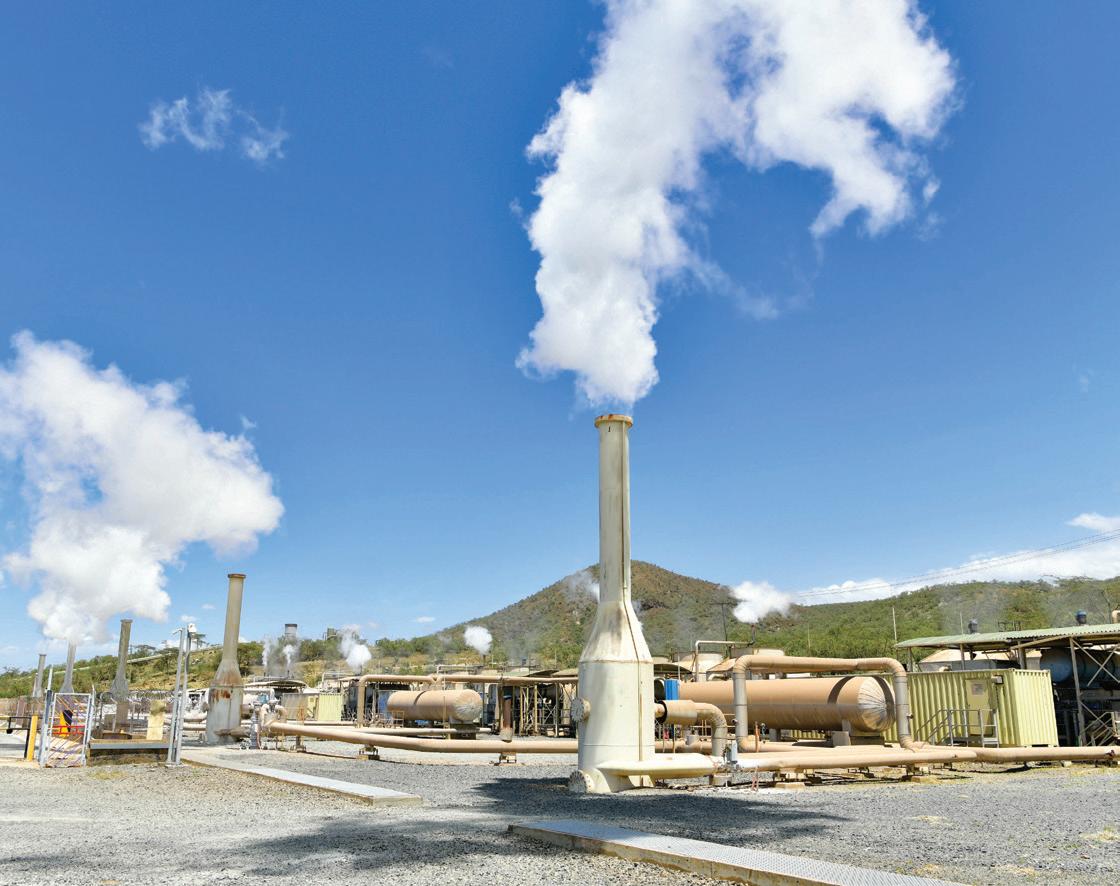
The foundation has supported numerous community projects, such as developing school infrastructure and upgrading health facilities, which have greatly improved the quality of life for communities around its operational areas.
“The company’s strategic investment in geothermal power has been crucial in mitigating these risks, enabling it to maintain a steady and reliable energy supply,” said Njenga.
In the next decade, KenGen plans to increase its installed capacity by 1,500MW through the addition of solar, geothermal, and wind power projectsas part of its commitment to lead Kenya’s transition to 100% renewable energy by 2030 and to continue its international expansion through geothermal projects in neighboring countries.







Broadband Communication Networks , is a communication Technologies Organization with over 23 years proven experience dedicated to provide Complete Communication Network Solutions for; Network Operators, Communication Regulators, Industrial Organizations, Utilities and the Aviation Industry.
Projects Implementation:
Maintenance and Support:




Telecom & IT Projects covering Network Planning, Building and Optimization.
Telecom, IT and Power, including Diesel Generator Fueling.
Enterprise Network: Enterprise, Industrial and Residential data Connections, LAN and WAN network Deployment & Support.
Network Solutions:
Quality of Service for ICT networks, Radio Frequency Spectrum Management, Conformance Testing, Network Monitoring, Performance management, Connectivity Solutions, SCADA systems and Industrial IT Networks.
Power Solutions:
Telecom & Data Centers Power, UPS, DCIM, Cooling, Green Energy solutions which Includes; Telecom & Industrial Solar, High Voltage DC(400V) power system, Battery Storage Energy System (BESS) and Complete Data Centers. Our Activities include;
The management and staff of Broadband Communication Network takes this opportunity to congratulate Kengen on the achievement of 70 years of operations. May you grow to blow 100 years and beyond.

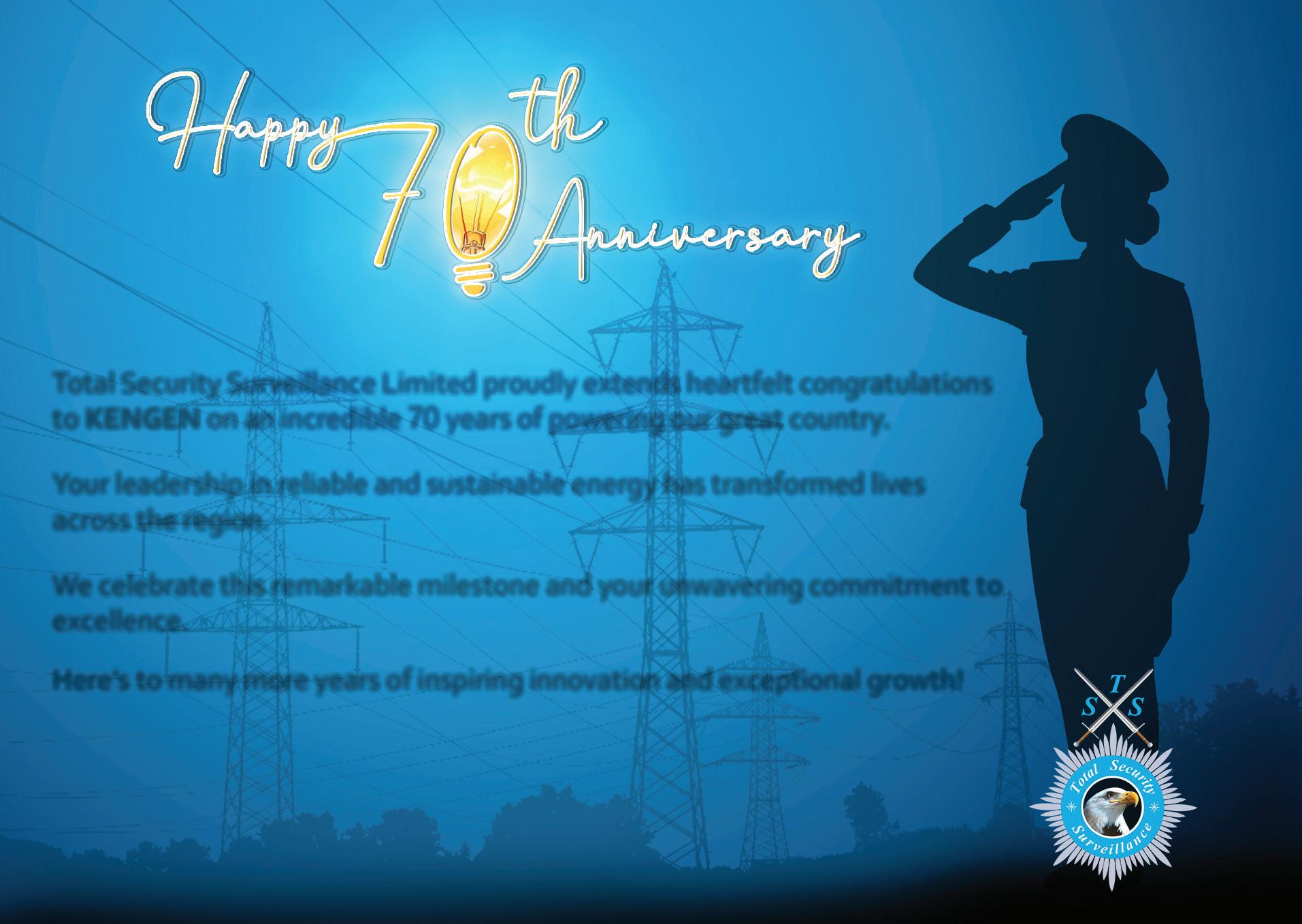
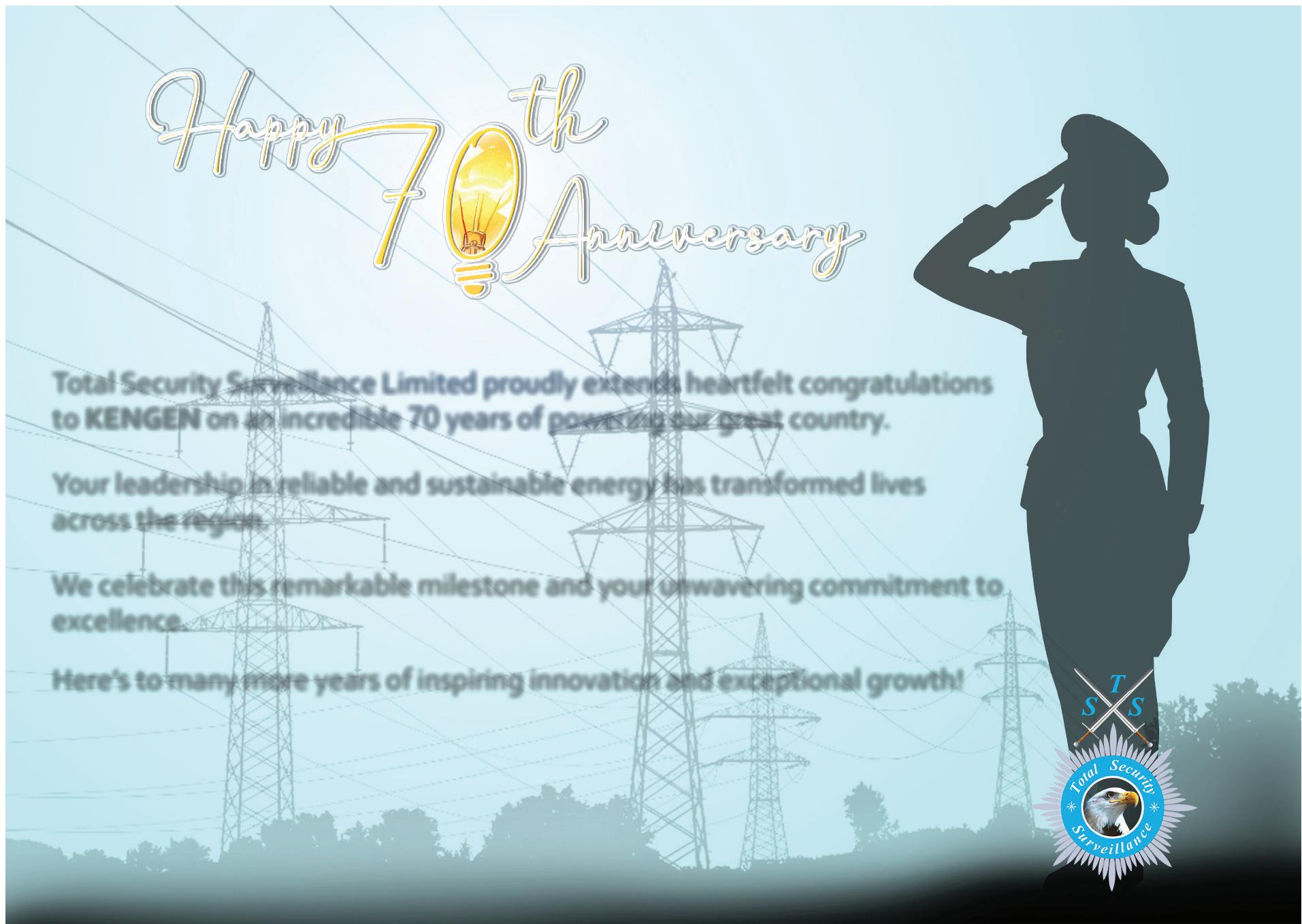





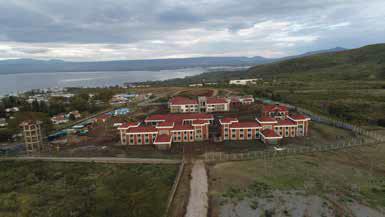

Image Registrar Limited was established in 1994 and we are the leading Securities Registrar and Secretarial services provider in the Eastern Africa Region.
We have invested in state-of-the art technology marshalled by a team of dynamic and dedicated professionals to offer practical, innovative remorse and world class service to our clients.
OUR PHILOSOPHY
We are guided by three strategic pillars (3Ps) built around People, Performance ad Partnership to enhance our customer centric approach to service delivery.
Securities Registrar Services Company Secretarial Services Investor Relations Services


Management of Publice and Private Securities Offers Poll Management Solitions Asset Re-Unification Solutions
Dividend Management Services and Solutions Corporate Governance Audit Services Board Evaluations Conference and meeting solutions (In-room, virtual and hybrid meetings)
GET IN TOUCH KENYA BRANCH 5TH Floor, Absa Towers, Loita Street P.O. Box 9287-00100 gpo, Nairobi, Kenya Tel: +254 709170000 info@image.co.ke | www.image.co.ke
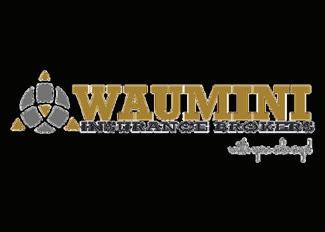

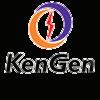




GET IN TOUCH UGANDA BRANCH Jubilee Insurance Centre Plot 14, Parliament Avenue, 1st Floor Kampala UG Tel: 07620804 (MTN) www.image.co.ke
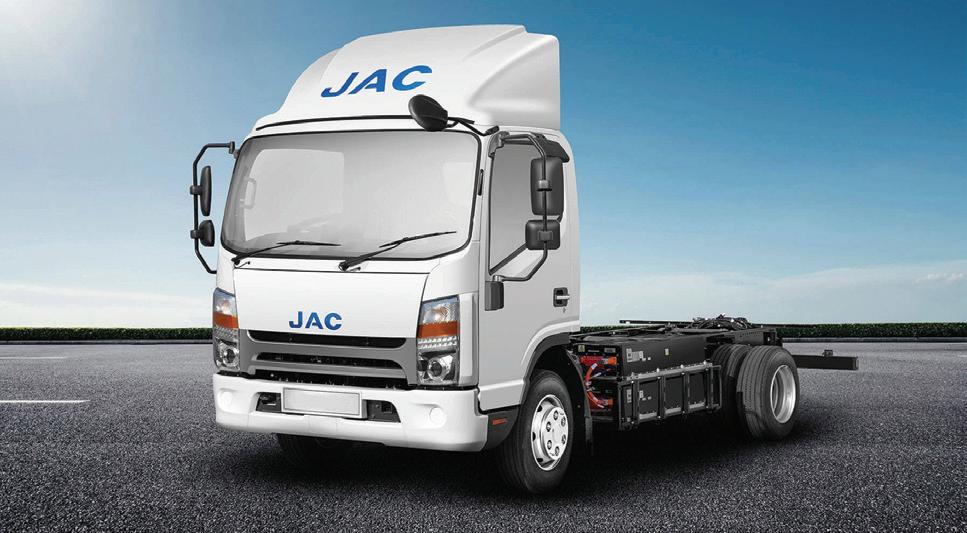











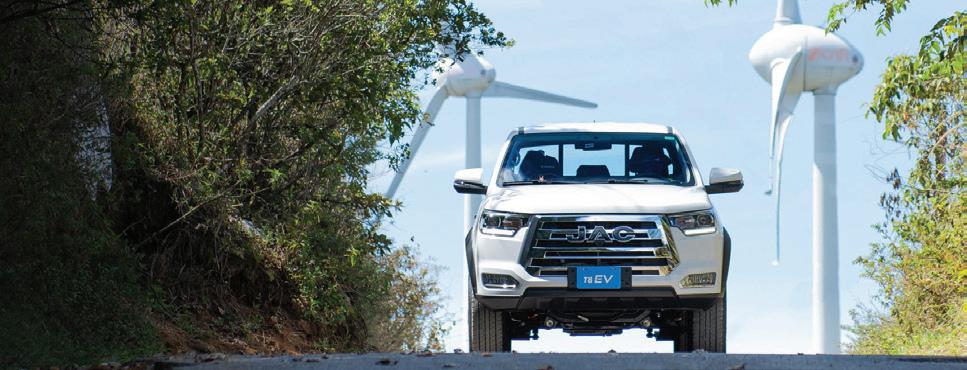






















As a trusted partner in Kenya's growth, we celebrate KenGen's remarkable journey in powering our nation for 70 years. Here's to continued success and innovation in shaping a brighter future for all Kenyans.
CISSL BUILDING, SABAKI STREET
P.O. BOX 80830, MOMBASA 80100 - KENYA
CONGRATULATIONS TO KENGEN ON 70 YEARS OF EMPOWERING KENYA! ON YOUR 70TH ANNIVERSARY IN POWERING THE COUNTRY
CELL: +254 (0)724 695 292/ (0)735 992 999
EMAIL: devialini@cissl.co.ke Web: www.cissl.co.ke

TEL: +254 (0)41 2496076/7, 2490397, CDMA: + 254 (0)20 2040322, 2040323 FAX: +254 (0)41 2490396,
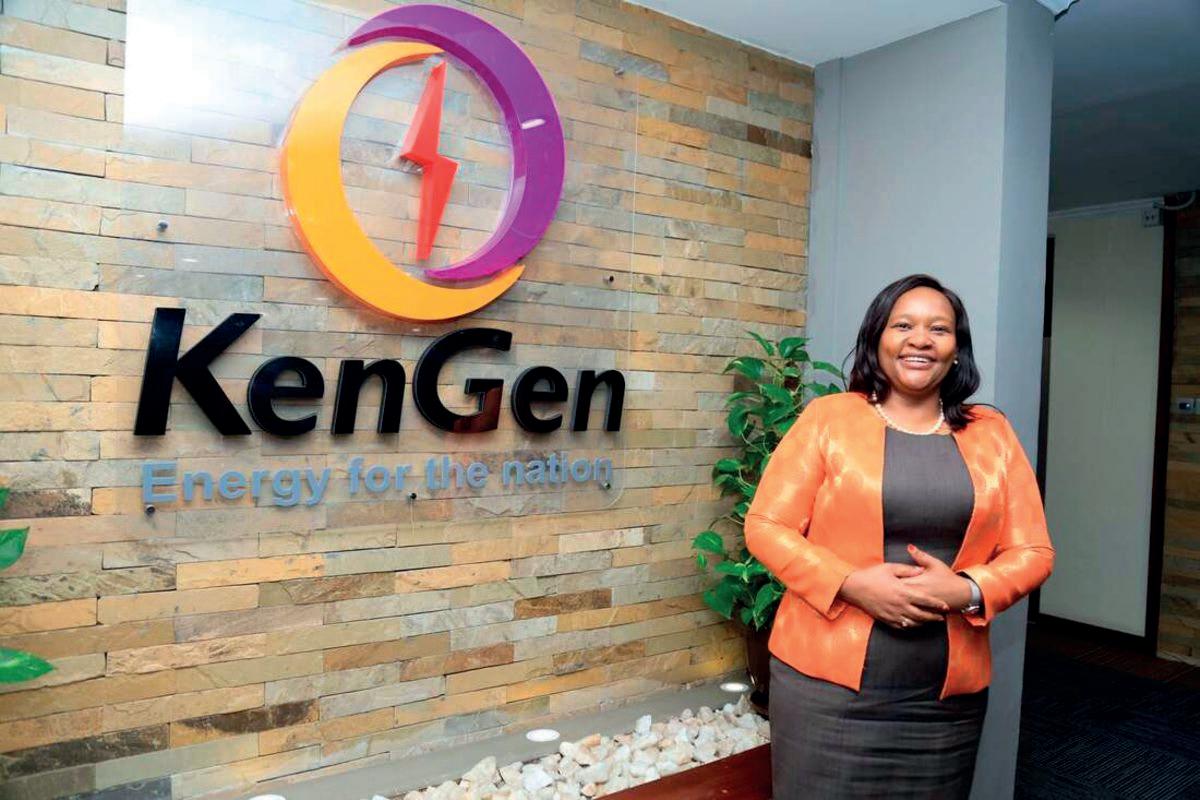
Our experience and knowledge in the insurance industry, enables us to deliver an extensive range of innovative products and services across a wide range of industries, including but not limited to:
For more information, contact us on 0714 044 000 | email info@minet.co.ke | www.minet.com
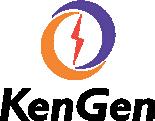




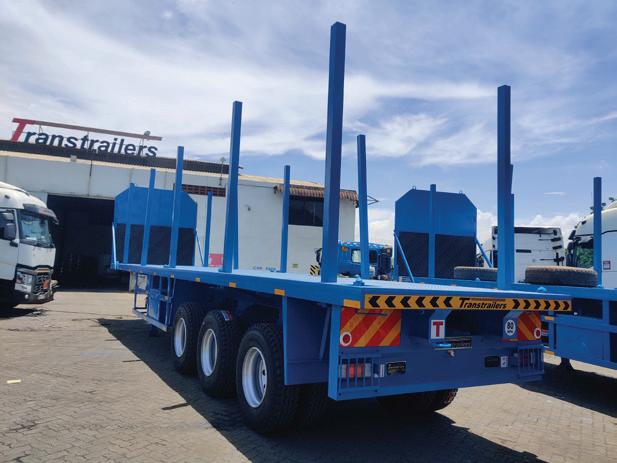

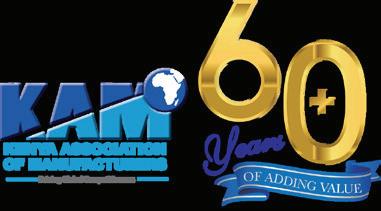





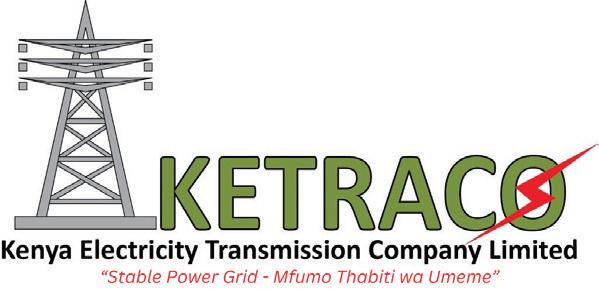
BUILT 4,863 KM OF HIGH-VOLTAGE TRANSMISSION LINES AND 42 NEW SUBSTATIONS
KETRACO, incorporated in December 2008 as a state corporation owned by the Government of Kenya, is mandated to plan, design, build, own, operate, and maintain high-voltage transmission lines (132kV and above) and regional power interconnectors in alignment with Kenya Vision 2030.
The company’s key objectives include power evacuation, enhancing system reliability, and connecting underserved areas.
Since its inception, KETRACO has made significant strides in advancing Kenya’s energy infrastructure and fostering socio-economic development, with a major achievement being the expansion of the national grid.
Over the past decade, KETRACO constructed 4,863 kilometers of high-voltage transmission lines and 42 associated substations with a total transformation capacity of 2,179MVA. These lines, ranging from 132kV to 500kV, have improved electricity reliability and expanded the grid's reach.
A flagship initiative is the 500kV Eastern Electricity Highway Project (EEHP), a High Voltage Direct Current (HVDC) line spanning 1,282 kilometers, allowing Kenya to import affordable electricity from Ethiopia and boosting regional power trade.
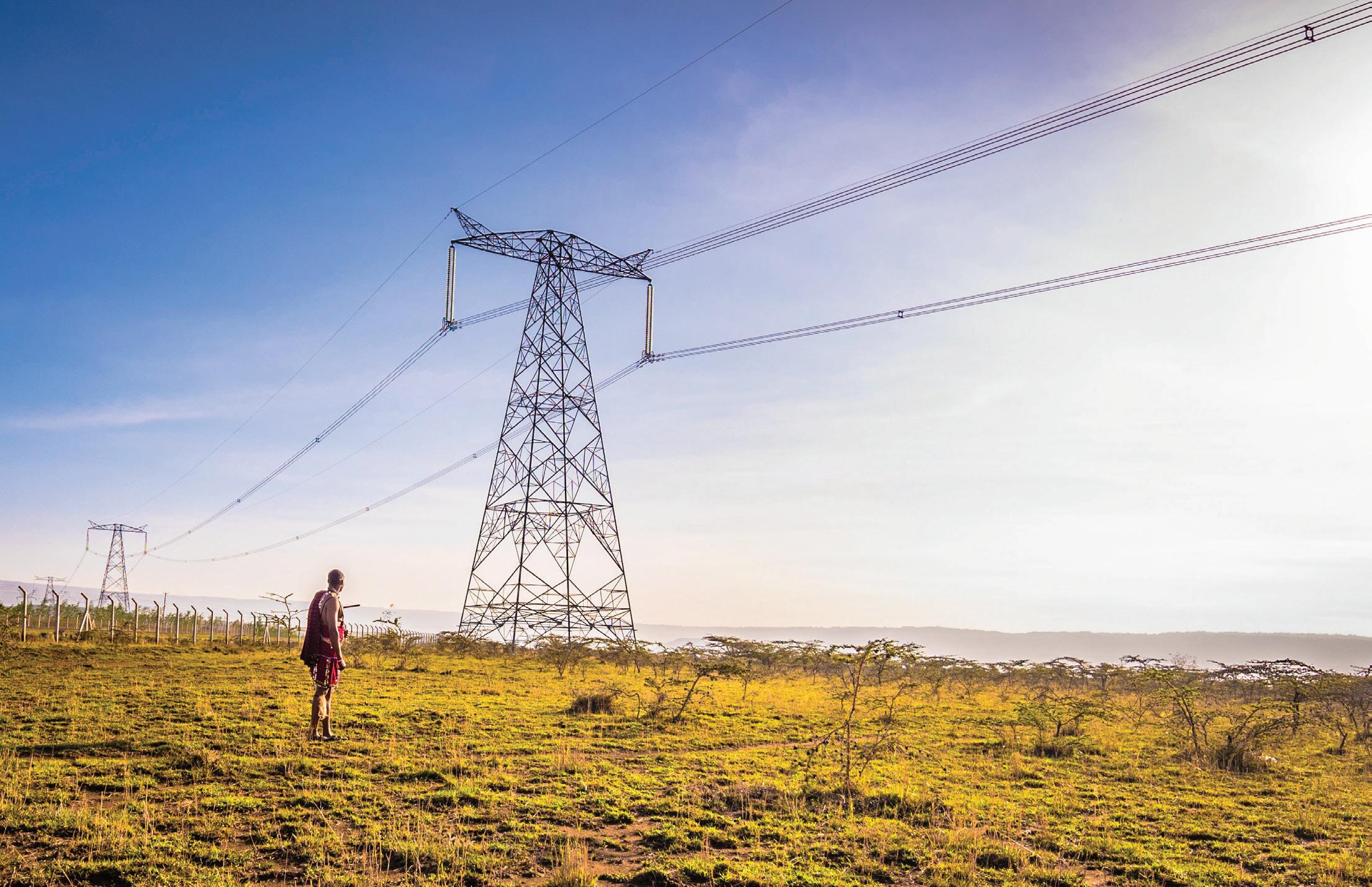
KETRACO has also completed the construction of the 400kV Kenya-Tanzania interconnection project to facilitate power exchange between Ethiopia, Kenya, Tanzania, and the Southern Africa Power Pool, enhancing regional integration and energy security. Kenya aims to generate 100% of its electricity from clean energy by 2030, with renewable energy already making up about 90% of the national grid.
KETRACO has been vital in integrating renewable sources such as geothermal, wind, and solar. The 400kV Suswa-Isinya transmission line evacuates power from Africa’s largest wind farm, while the 500kV HVDC line supports the Grand Ethiopian Renaissance Dam.
In 2014, KETRACO was licensed as a second-tier Network Facilities Provider for fiber optic communication, marking a key milestone. Optical fiber cabling strung atop new high-voltage transmission towers serves as both grounding and communication. KETRACO uses Optical Pilot Ground Wire (OPGW) with 48 optical fibers. These cables facilitate voice communication between power dispatchers and maintenance crews, enabling efficient power system operations. Remaining dark fibers are available for lease by Telecom Service Providers, supporting services crucial for the government’s Bottom-Up Economic Transformation Agenda (BETA).
KETRACO congratulates KenGen on 70 years of leadership and innovation in Kenya’s energy sector. As a pioneer in renewable energy, KenGen has significantly shaped the future of sustainable energy in the nation.
KETRACO is proud to partner with you in enhancing
electricity transmission and advancing renewable initiatives that drive economic growth and benefit communities.
Here's to our continued collaboration and a future powered by clean energy!

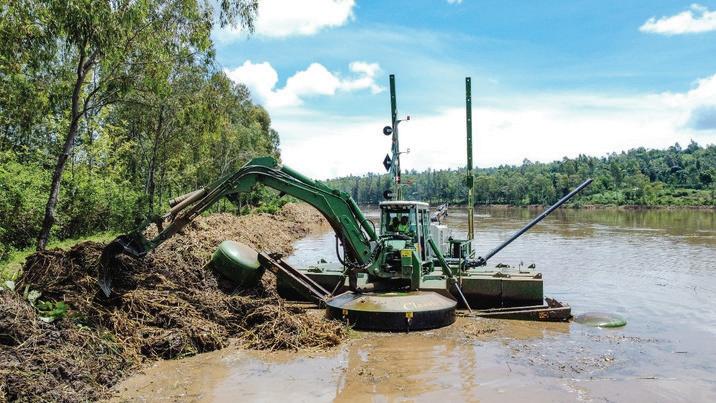
Kenya's dams perform vital functions, from supplying irrigation water and generating hydropower to controlling floods. However, these aging dams, some of which were constructed over 60 years ago during the colonial era, now grapple with significant challenges such as serious siltation, invasive aquatic vegetation, and pollution. These issues considerably compromise their performance and safety. Answering these challenges, bainridge is employing Watermaster's cutting-edge technology, already in use in over 80 countries worldwide.
Bainridge’s goal is to revolutionize water management in kenya and breathe new life into its water bodies.
Bainridge Construction Company has been at the forefront of environmental restoration and sustainable development, focusing on the crucial aspects of water resource management and climate change mitigation. Specializing in desilting reservoirs, restoring old dams, clearing irrigation canals,
and desludging sewage ponds, the company is making significant strides in supporting the United Nations' Sustainable Development Goals (SDGs) in Kenya..
In line with SDG 6 (Clean Water and Sanitation), SDG 7 (Affordable and Clean Energy), and SDG 13 (Climate Action), Bainridge Construction has adopted state-of-the-art technology from Finland, utilizing its newly launched amphibious dredging machine to desilt and restore critical water infrastructure in Kenya. This innovative machinery enhances the efficiency and speed of desilting operations, reducing environmental impact while providing sustainable solutions for water management
The company's efforts have proven pivotal in addressing the challenges posed by sedimentation in reservoirs and dams.
Sedimentation can reduce water capacity, affect the quality of water, and decrease the efficiency of hydropower generation. By using advanced dredging technology, Bainridge has successfully tackled these issues, contributing to both climate change adaptation and mitigation.
One of Bainridge’s landmark achievements is the successful desilting and restoration of the Sondu Dam Over time, the dam had accumulated significant amounts of hippo grass vegetation and sediment, reducing its water holding capacity and affecting power generation efficiency. Bainridge mobilized its amphibious dredging technology to remove over 500,000 cubic meters of sediment and hippo grass vegetation, restoring the dam's optimal capacity.
The benefits of this restoration are multi-fold. Firstly, the increase in water holding capacity has led to improved efficiency in power generation by Kenya Electricity Generating Company (KENGEN), aligning with SDG 7 by ensuring a more reliable and clean energy source for Kenya. Secondly, the desilting has improved access to the dam for the local communities, providing better domestic water supply, which supports both SDG 6 and SDG 11 (Sustainable Cities and Communities).
Bainridge’s desilting and restoration activities have a direct impact on food security and environmental conservation in Kenya. Clearing irrigation canals of silt and sediment ensures a reliable water supply to farmlands, which is essential for agricultural productivity and food security (SDG 2: Zero Hunger). By ensuring these canals remain functional, Bainridge is playing a pivotal role in supporting sustainable agricultural practices, which is a key factor in adapting to climate change and its unpredictable effects on farming
The restoration of water reservoirs also plays a significant role in flood management and drought mitigation, which are critical components of climate change adaptation in Kenya. A well-maintained dam can absorb excess water during rainy seasons and retain water for use during dry periods, ensuring a steady water supply year-round
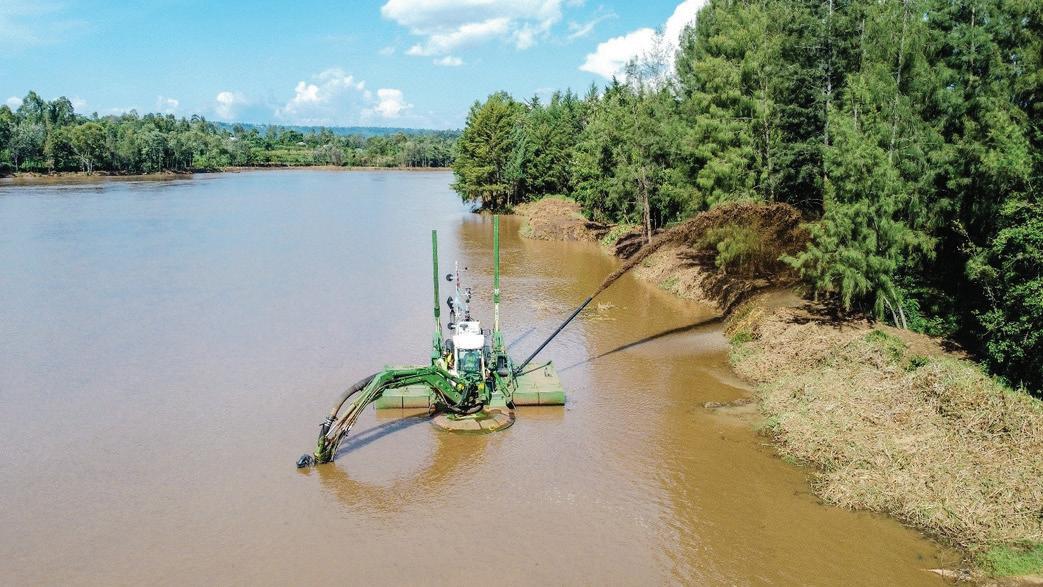
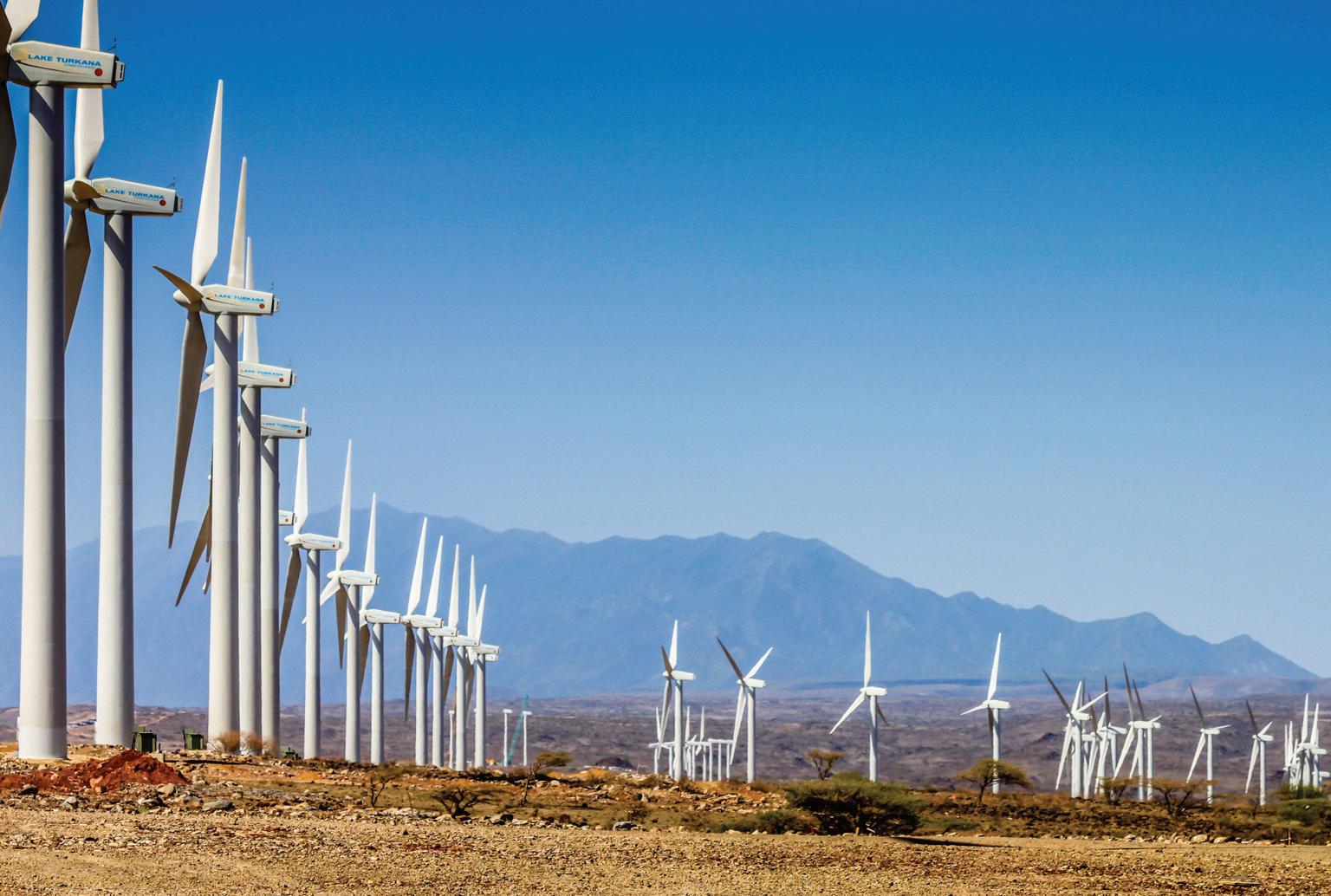
Bainridge Construction Company’s focus on water resource management, climate change adaptation, and environmental conservation places it at the forefront of sustainable development in Kenya. The company's advanced technology and dedication to the environment reflect its commitment to fostering a greener, more sustainable future in line with global and national development goals.
By tackling key issues like sedimentation in water bodies, Bainridge is not only restoring crucial infrastructure but also enhancing the capacity for clean energy production, securing water access for communities, and supporting sustainable agriculture – all of which are vital for Kenya’s progress toward the UN Sustainable Development Goals.

As Kenya faces the challenges of climate change, Bainridge Construction Company’s efforts in restoring and maintaining water resources provide a beacon of innovation and hope for a sustainable, resilient future.
Congratulations once again to KENGEN on this momentous occasion. We look forward to continuing our collaboration and contributing to Kenya’s sustainable development.

Ramco Court, Block B Room 32
Opp. Capital Centre Mombasa Road +254 705 888 877
+254 725 888 877
info@bainbridgeconstruction.co.ke
sales@bainridgeconstructions.co.ke
Dubai Office
Barsha Heights
Dubai, UAE
P.O Box 449793
+97 50 6416250
aamer@bainridgeconstruction.co.ke
KAM Corporate Golf Event- Coast Edition, 2024



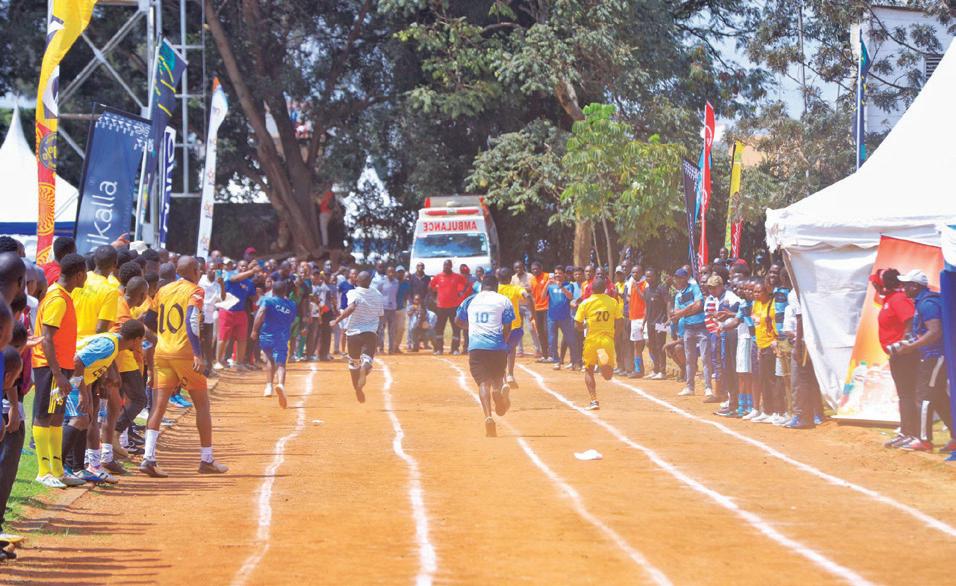
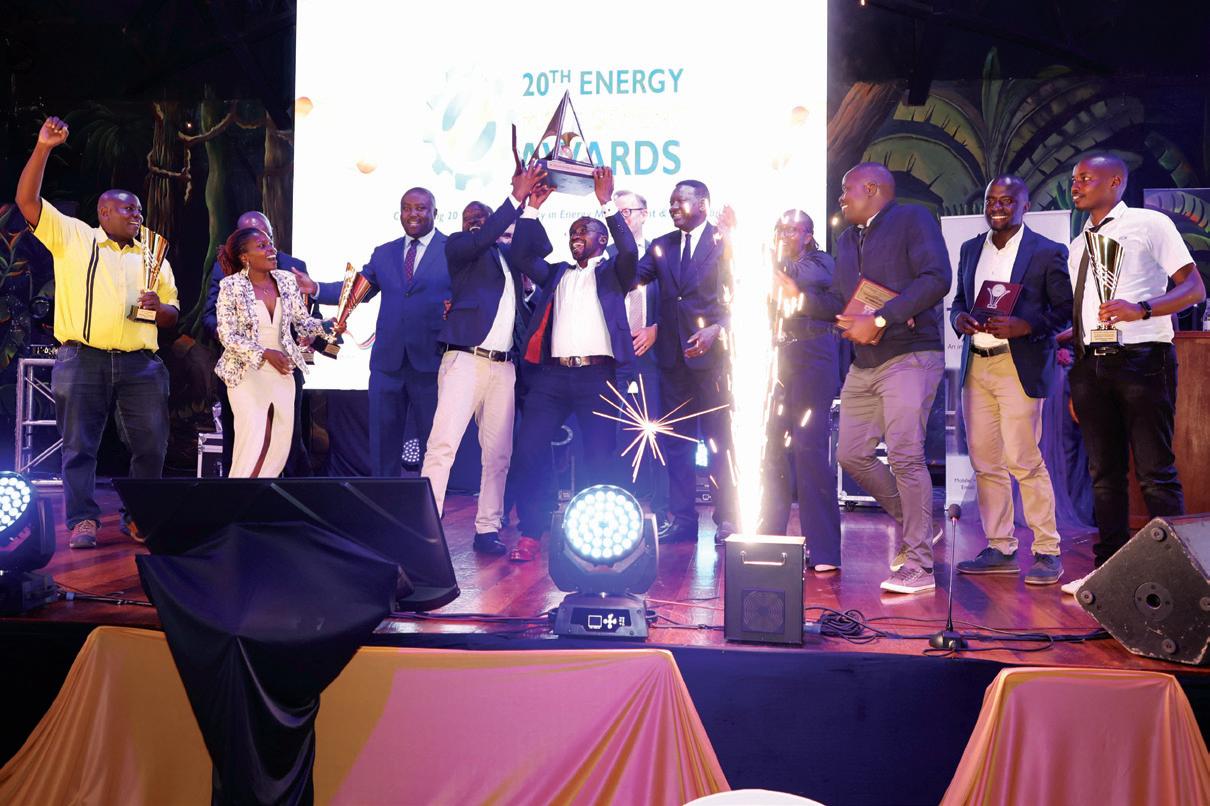




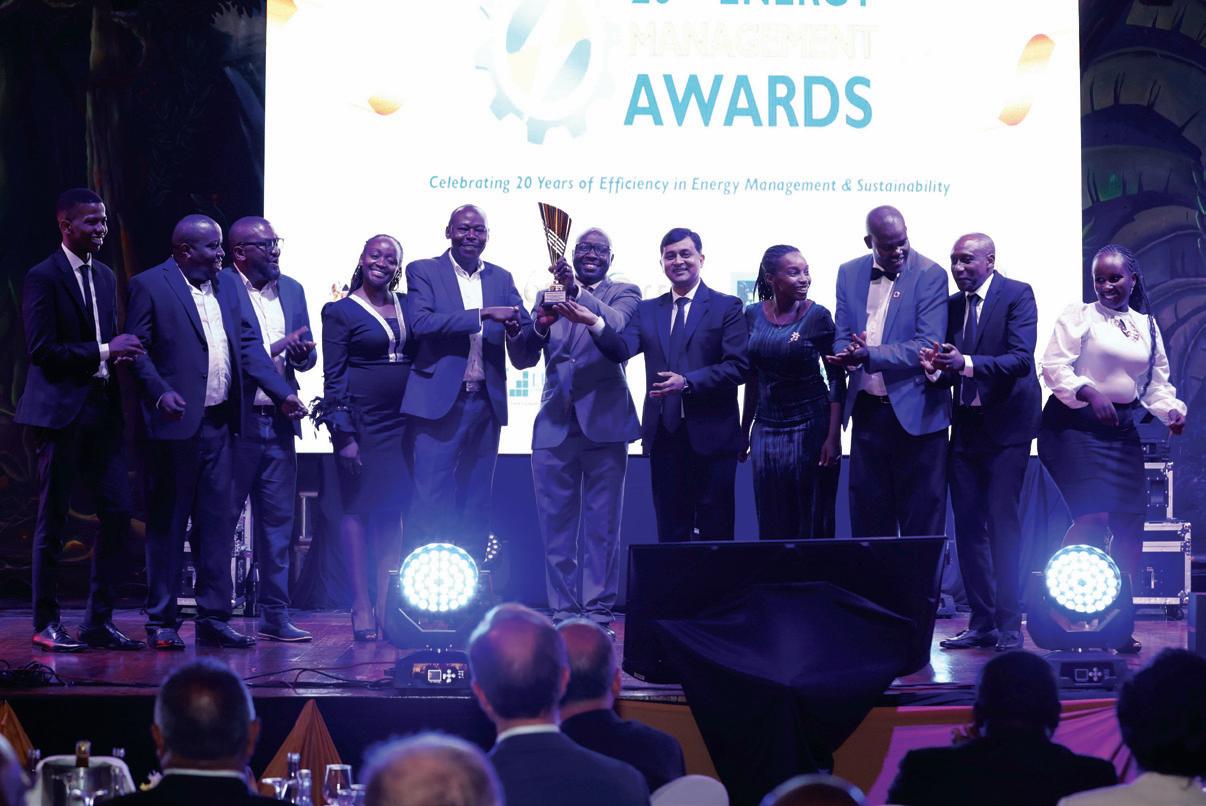
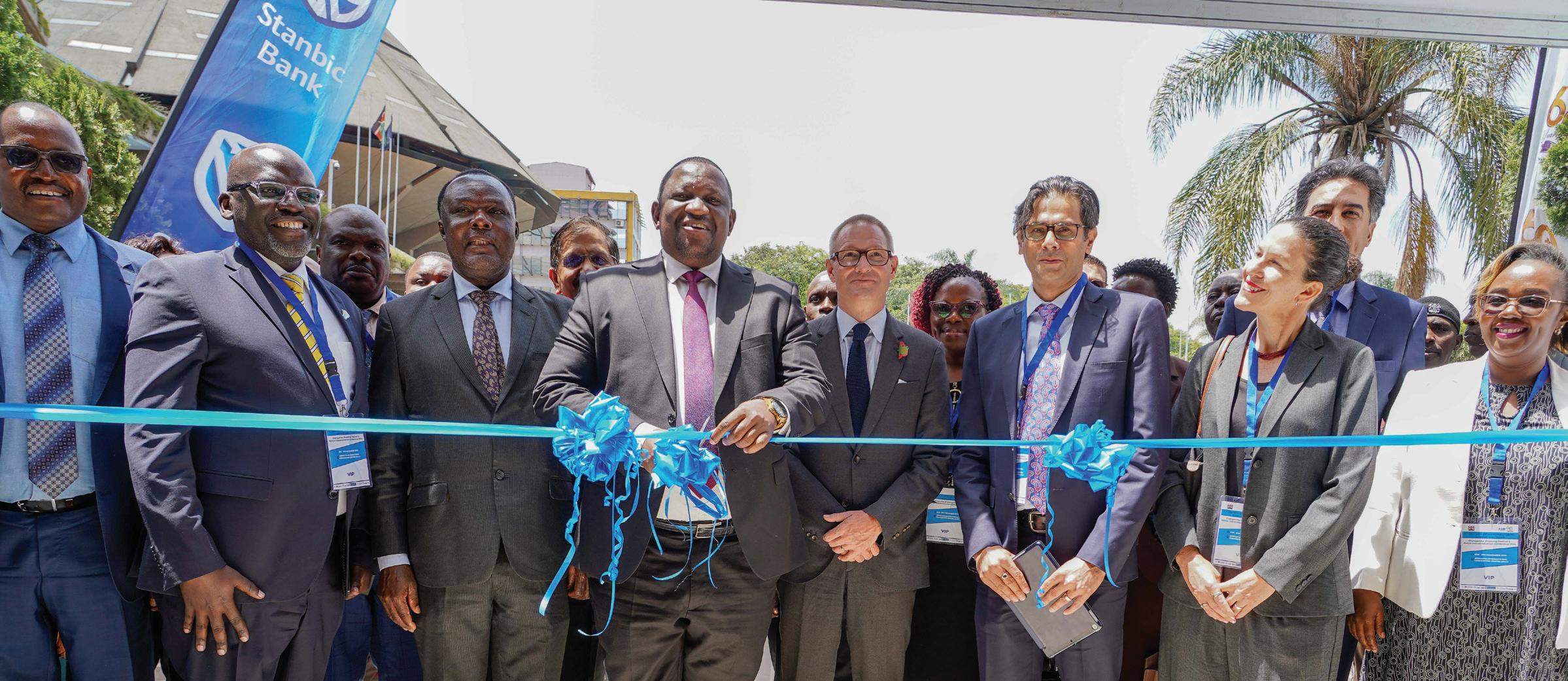
Headlined by far-reaching policy reforms to enhance production standards, expand export capabilities, and promote innovation, government and manufacturing stakeholders seek to elevate the presence of made-in-Kenya products at home and on global market shelves.
By Conrad Onyango
The Kenyan government and manufacturing stakeholders are collaborating on an ambitious initiative aimed at enhancing the visibility and accessibility of made in Kenya products in local and international markets.
This comprehensive plan seeks to develop strategies for improving production quality, expanding export capabilities, and facilitating market entry for local manufacturers.
By fostering innovation and encouraging investment in local industries, the initiative will not only boost the Kenyan economy but also promote the richness and diversity of Kenyan products on a global scale.
During the Seventh Edition of the Changamka Festival in Nairobi, the Cabinet Secretary for Investments, Trade and Industry, Salim Mvurya, affirmed the government’s unwavering commitment to supporting and creating a conducive business environment for manufacturing, highlighting some of the government policies that seek to prioritize investment, foster competitiveness, and uphold sustainability.
“We are working with all manufacturing stakeholders and all Kenyans to ensure that these products are not just called Kenyan products, but they also meet the international standards,” Mvurya said.

A United Nations Industrial Development Organization (UNIDO) backed Competitive Industrial Performance (CIP) Index Report 2020 ranked Kenya position 115 out of 152 - placing the country lower than other competitor African countries but high compared to its East African counterparts.
Kenya’s manufacturing sector currently contributes 7.6% to the nation’s GDP, with the government targeting to increase the manufacturing sector’s contribution to 15% by 2027.
“When we are talking about Buy Kenya Build Kenya, we are not just saying Kenyans to buy their products. We are also asking the international population to look at Kenya not just as a manufacturing country, but also as a country that is producing high-quality products in the market,” said Mvurya.
KAM, whose larger share of its membership (62%) are small and medium enterprises (SMEs), said the industry still faces significant challenges, including high capital costs, limited market access, and regulatory burdens.
“Our government must challenge itself to enact policies that not only lower the cost of production but also make Kenya the lowest cost producer,” KAM Vice Chair, Hitesh Mediratta, emphasised.
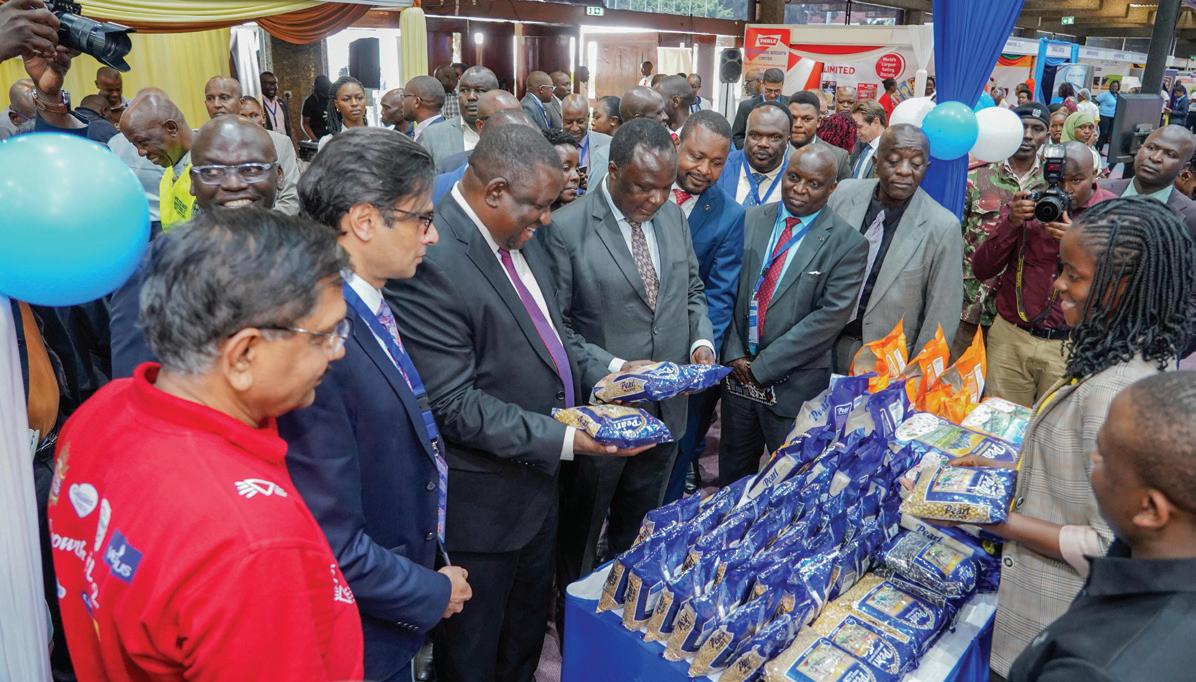
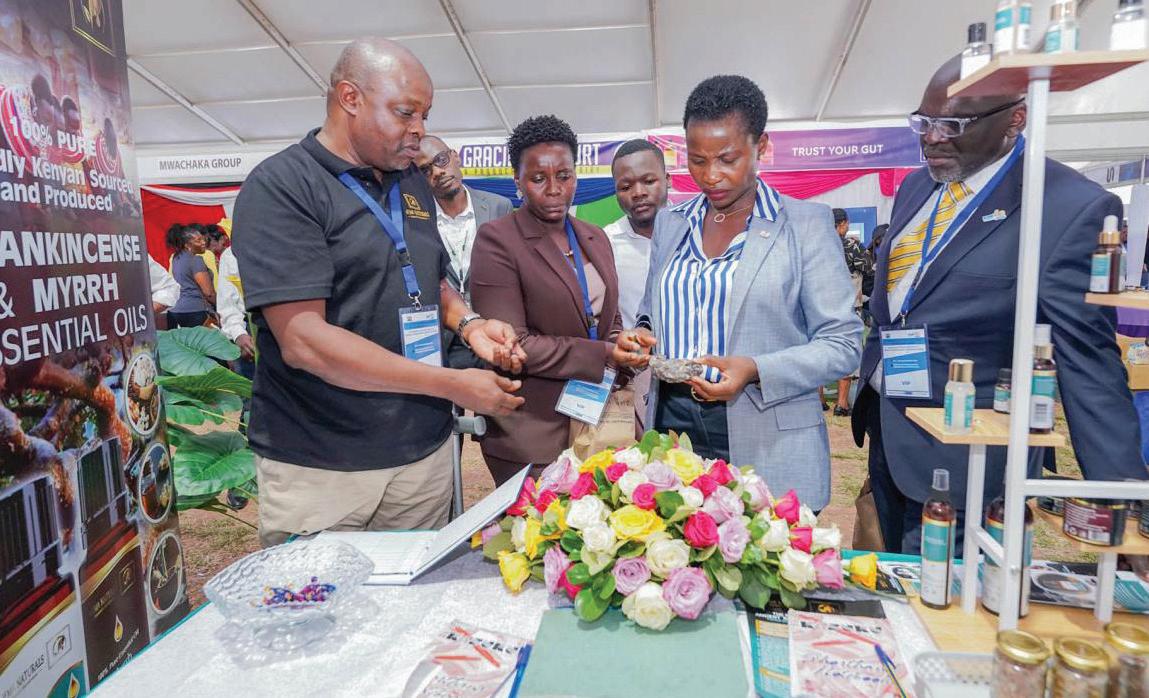
In a raft of policy reforms, the government is putting together a Business Laws (Amendment) Bill - an omnibus bill - with 57 sections amending 18 Acts of Parliament to improve the operating environment for local manufacturing.
Among the key policy reforms highlighted is the provision for Buy Kenya Build Kenya.
“We have amended the procurement law to allow the purchase of products manufactured in Kenya. So, there will be no choice once it is in law,” said Mvurya.

Ultimately, government agencies will soon be required to buy 40% of their requirements from local manufacturers as the policy becomes law under the Business Laws (Amendment Bill 2024.
The KAM Vice Chair said the Association and Government have jointly formulated a list of items that would be afforded preferential treatment, and he called on the state to be very deliberate in its procurement of locally manufactured products.
“It must move from being preferential and renamed to mandatory, with regulations enacted to achieve this status. It is a misdeed to export taxpayers’ money to purchase finished
products where we have capacity investments to add value to Kenya,” said Mediratta.
Through the support from the UK Government, a National Industrialization Policy Framework has been developed. The National Automotive Policy is also tied with the Automotive Bill, while Cotton, Textiles, and Apparels Policy has been formulated in efforts to revive the cotton and jewellery industries.
There is also the Metrology Bill, which looks at matters of calibration, cryptography, and indexing to kickstart a process of patenting products from different regions. The Warehousing Financing Bill will examine aggregation issues and trade distribution.
“We have quite a lot of proposals in place, and this is aimed at ensuring that we have a conducive environment to do business,” said Mvurya.
The Special Economic Zone Authority legislation has also been amended to clarify the tax benefits and predictability of benefits for 10 years.
Other proposals in the amendments include registering investment facilitators to equip them with information and proper accreditation to protect foreign investors from rogue agents.
To bolster wider acceptance of made-in-Kenya products through mindset change and increasing market access for locally produced goods, KAM is banking on events like the Changamka Festival, bringing together over 200 exhibitors to showcase incredible Kenyan products.
Mediratta said the platform is an opportunity to connect manufacturers and consumers directly and to challenge any misconceptions that locally produced goods are inferior to imports.
“We are here to dismantle that notion and showcase the high quality, innovation, and diversity of Kenyan-made products,” he said.
State Department for Industry Principal Secretary Dr. Juma Mukhwana called on Kenyans to embrace a culture that champions and celebrates locally produced goods, saying it will truly elevate Kenyan manufacturing.
“There is an urgent need for every citizen to explore and support Kenyan-made products, recognizing the unique craftsmanship and ingenuity that define them,” said Dr. Mukhwana.
KAM Acting Chief Executive Officer Tobias Alando said the festival, targeting 50 million people in the country, offers a massive platform for dialogue with the policymakers on
different issues affecting industries and plays an integral role in creating awareness and educating local citizens in terms of understanding industries beyond demonstrating the ability and the agility of the local industries.
Under the theme “Celebrating the Ingenuity of Kenya’s Manufacturing Sector,” the festival aims to elevate the visibility of local manufacturers while adhering to the Buy Kenya Build Kenya Strategy.
KAM said the changing regional landscape, headlined by free trade agreements, including the African Continental Free Trade Area (AfCTFA), provides an enormous opportunity for Kenyan goods to be exported within Africa and sends a strong signal that markets are opening and liberalizing quickly.
Mediratta called on the country to embrace these changes and support continental integration.
“We encourage government that as it plans tax measures to protect local industry, to ring-fence AfCFTA, COMESA, EAC, TFTA, and other FTAs within Africa and protect them from regional distortions imposed by countries within our FTAs,” said Mediratta.
Beyond Africa, the government is banking on economic partnership agreements to open markets in Europe, the US and the United Arab Emirates (UAE) for value-added agriculture products.
The British High Commission said it is committed to working with the Government of Kenya to reverse a trend where Kenya’s companies struggle in an increasingly competitive global market. The Commission further noted that they aim to build successful companies and an atmosphere where British and other foreign companies can come in and invest and contribute to the success of the Kenyan economy.
Among key initiatives of the British High Commission is a corporate programme, Manufacturing Africa, which since 2020 has supported Ksh. 54 billion (US $420 million) in financial closures and 18 deals across different sectors, ranging from Pharmaceuticals, Apparel, and Electric Vehicles to Plastic Recycling.
“These investments will create over 15,000 direct jobs and around 60,000 supply chain and indirect jobs in the next few years. And we want to do much more,” said British High Commissioner to Kenya, Neil Wigan OBE.
Over the next two years, the Commission targets to close another Ksh. 64.5 billion (US$ 500 million) worth of deals and create 1,000 more jobs. The UK will provide an additional 670 million shillings to support the development of a listed SME debt fund, hoping to mobilise Ksh. 13 billion shillings of finance from development finance institutions and Kenyan pension funds for onward lending to SMEs.
Manufacturing stakeholders are also looking towards adopting innovative practices and sustainable models leveraging advancements such as Artificial Intelligence (AI) and powering their operations using Kenya’s over 90% renewable energy stock to drive green industrialisation.
The British High Commission announced a new UK-Kenya partnership on AI aimed at helping implement Kenya’s AI strategy and fostering responsible technology adoption in manufacturing.
This initiative complements Kenya’s efforts to embrace advanced manufacturing technologies and strengthen its position in Africa’s tech sector. It positions Kenya favourably within the Africa Green Industrial Initiative and aligns with global sustainability trends.
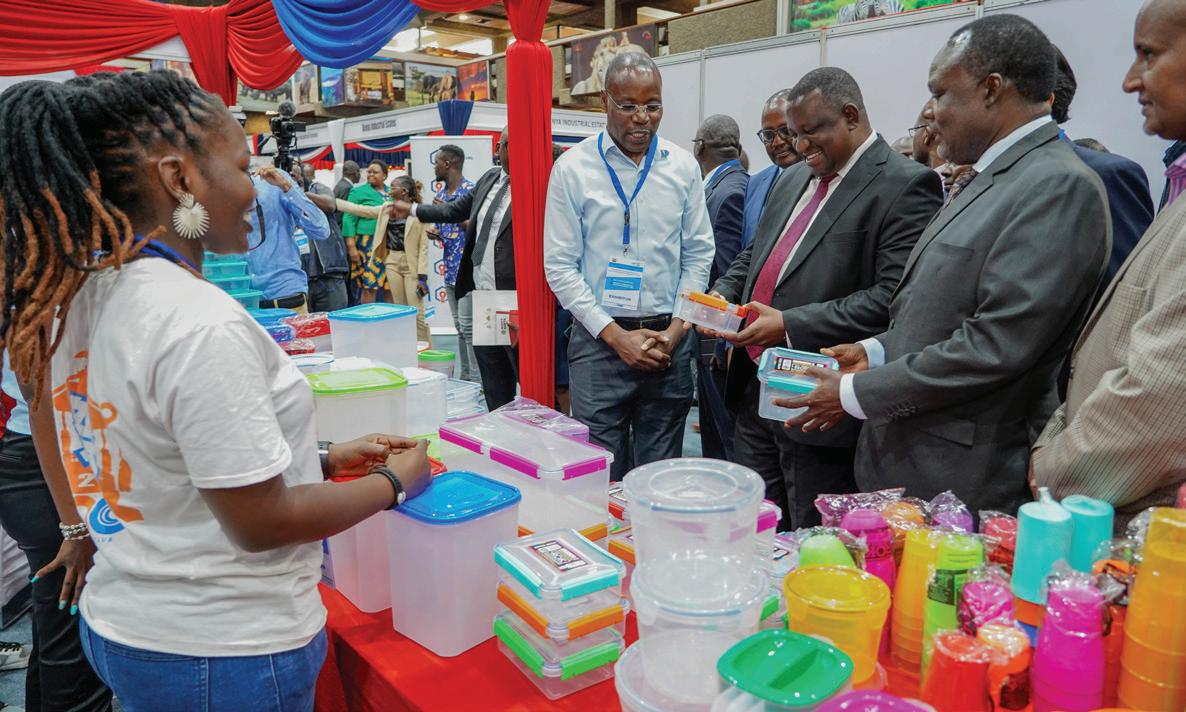
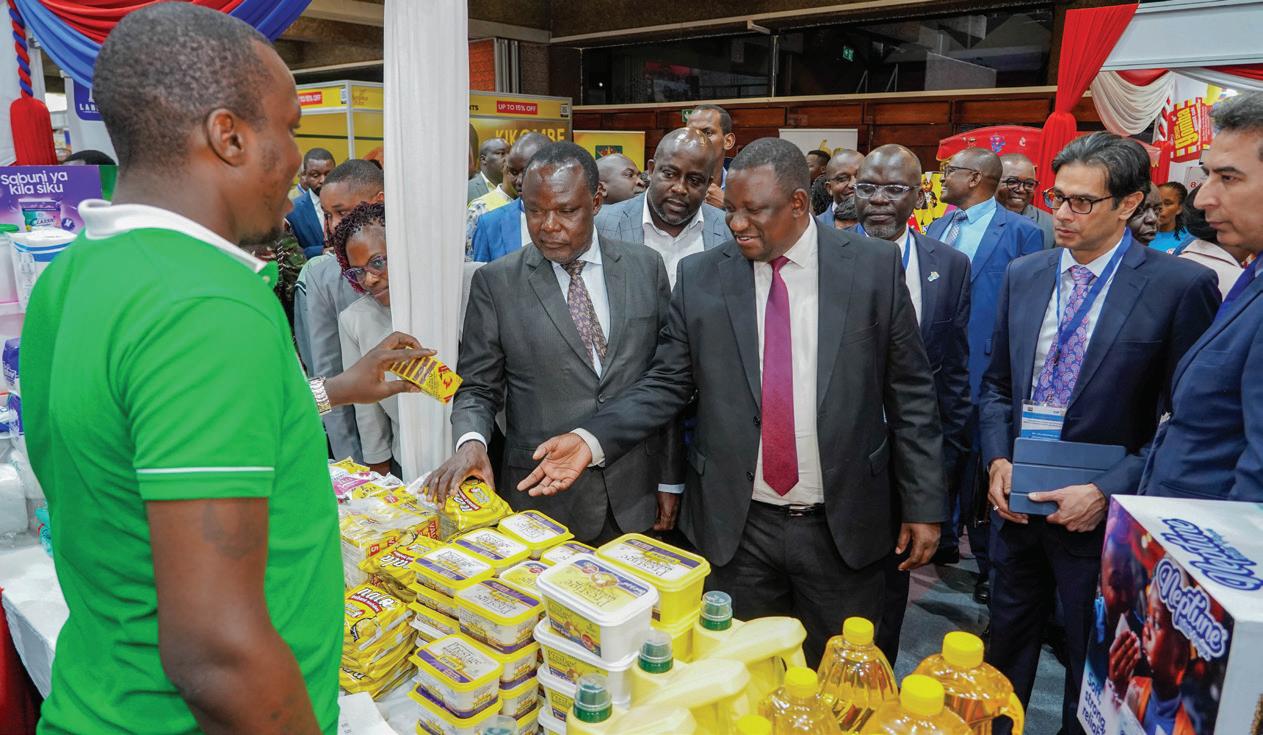
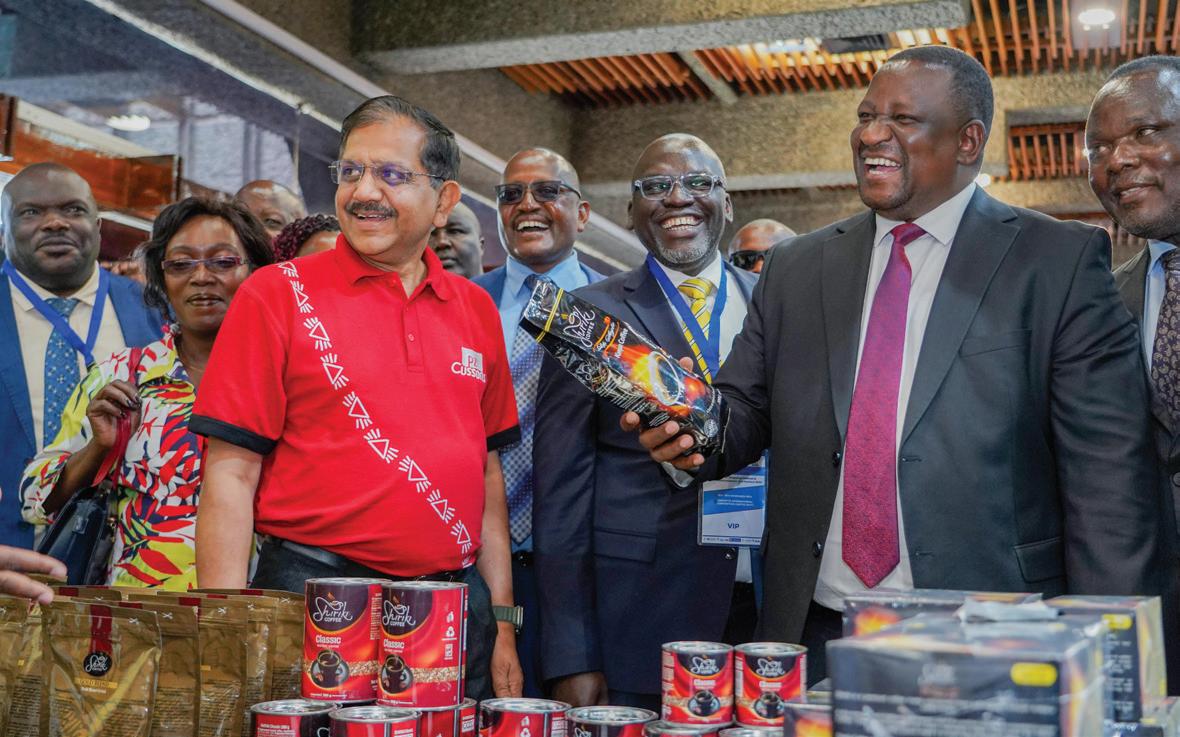


Introduction of export levies on raw wood veneers and adoption of cutting-edge technologies, could unlock the potential of previously underutilized younger trees, ensuring sustainable trade practices within the sector.
By Industry Today
The Kenya Association of Manufacturers is pushing for the imposition of levies on the export of raw wood veneers. The emerging technology that enables extraction of value from younger trees, that was previously underutilized, is good as it has the potential to drive sustainable trade in the sector. However, blanket adoption will lead to unintended consequences including eroding efforts towards improvement of tree cover and income losses by tree growers.
KAM’s Timber, Wood, and Furniture Sector Chairperson, Kaberia Kamencu, wants the government to introduce a levy that will be charged to those seeking to continue with the export of raw veneers.
He adds that money raised from the collections should be channeled to the Development Bank of Kenya for onward lending to build the capacity of Small and Medium Enterprises (SMEs), saying it would facilitate their mechanization and the transition towards exporting finished products rather than raw materials.
We have new technologies emerging every day that allow us to extract value from younger trees that we couldn’t before. As we are coming in, let’s not cut our nose to spite our face. We must consider the bigger picture of sustainability across the entire value chain.
Mr. Kamencu
Raw veneer is cut from a log and dyed if necessary. Once dyed, the sheets are laminated together to form a block. They give great finishes to doors, tops, panels for cabinets, parquet floors, and parts of furniture.
Kamencu emphasized the need for the private sector to collaborate closely with the government to ensure that the adoption of these new technologies aligns with broader sustainability goals across the entire value chain.
“We have the raw materials; what we need to do now is support SMEs and ensure mechanization at their level so that we can add value and make more money instead of selling raw products or trees,” he said.
In August 2024, the Ministry of Environment, Climate Change, and Forestry announced the suspension of raw veneer exports to protect forests and support reforestation efforts in line with the National Landscape and Ecosystem Restoration Strategy, which aims to restore 10.6 million hectares of degraded land by planting 15 billion trees.
The government aims to ensure trees mature and contribute to the country’s ecological restoration, with a commitment to achieving 30 percent tree cover by 2032.
Approximately Ksh. 20 billion worth of raw veneer left the country between January and July 2024, with Ksh. 7.5 billion of the total in merchant shipping levies realized from these exports.
“No one is benefiting. Let us explore how to put in a levy of sorts for someone who wants to send our own material out. Let the country benefit,” paused Kamencu. Farmers are reportedly being paid low amounts for the logs, particularly targeting very young trees between four to seven years old.
Farmers are reportedly being paid low amounts for the logs, particularly targeting very young trees between four to seven years old.
Starting in 2025, the Energy Management Awards (EMA) will undergo a major transition by becoming sector-specific after 20 years.
The change has already begun, as evidenced by the 2024 awards which highlighted the services, tea, textile, and apparel sectors as individual categories.
The Acting Chief Executive Officer of the Kenya Association of Manufacturers, Mr Tobias Alando, has expressed enthusiasm for the future of the EMA Awards.
Beyond the 20-year milestone, we have great ambitions for EMA. We look forward to having sector-specific awards. We truly appreciate what the government has done and KAM for taking the lead in this initiative.
Mr. Tobias Alando
In 2004, the EMA project was implemented by the government with the support of the Global Environment Facility and the United Nations Development Programme, UNDP, from 2001 to 2006, following recommendations from the Global Environment Facility and Calm Industrial Energy Efficiency Project.
In 2006, the Ministry of Energy and Kenya Association of Manufacturers entered into a memorandum of understanding to implement a national energy efficiency programme through the Centre for Energy Efficiency and Conservation.
Through this public-private initiative, the Ministry has been supporting this annual event year.
The significant shift in the Awards commemorates two decades of exemplary energy management and serves as a testimony to remarkable achievements in energy efficiency and costsaving endeavours across various sectors.

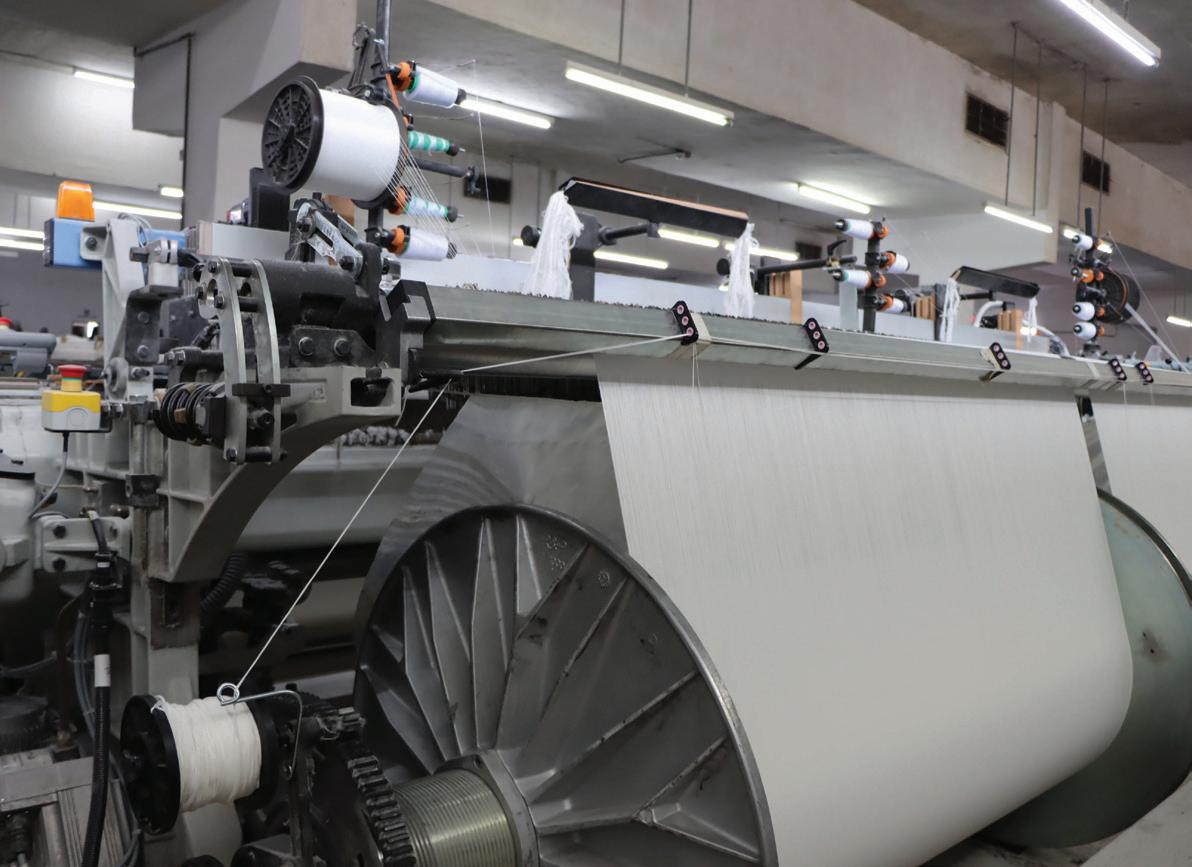
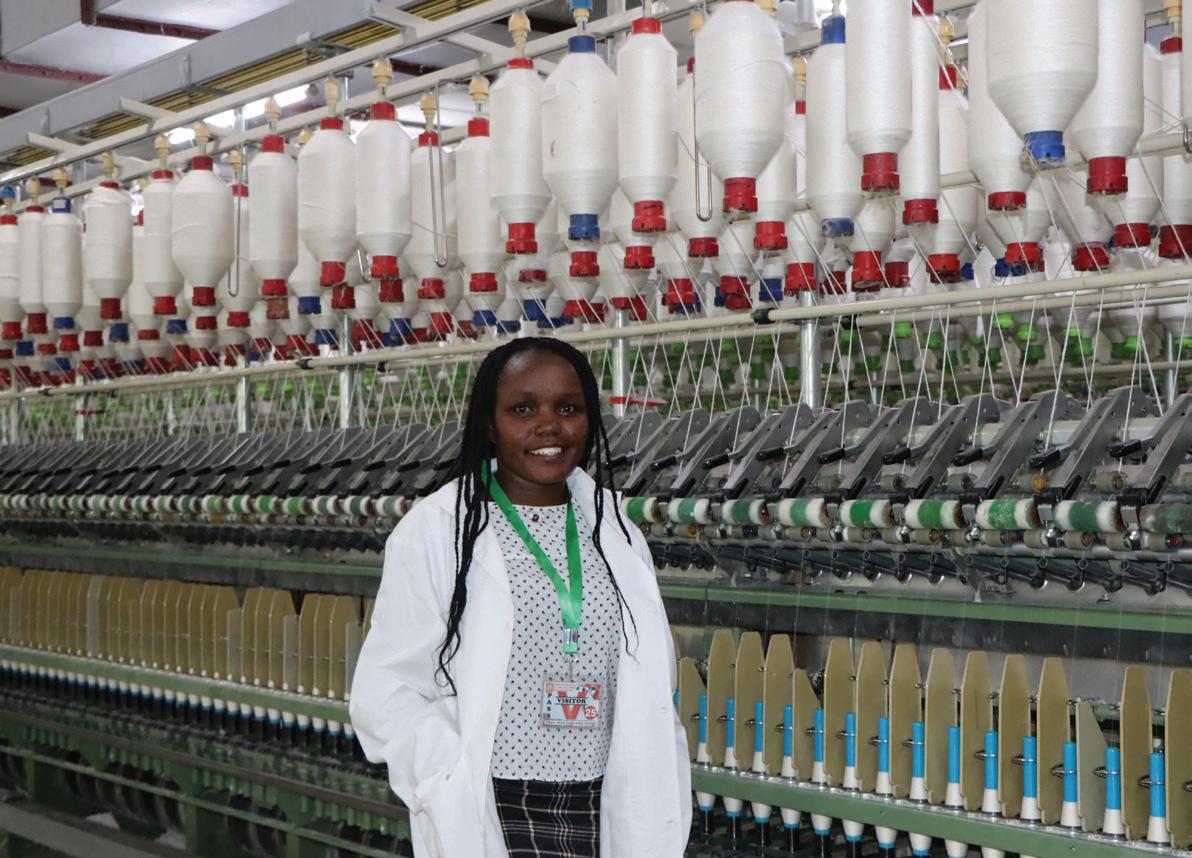

Textile manufacturer Spin Knit Limited, the longest participant in the Energy Management Awards (EMA), has been consistently working to reduce its energy consumption by 10% each year through cost-effective energy efficiency measures.
Spin Knit’s energy management strategy focuses on identifying, reducing, and eliminating energy waste from its production processes. The company encourages employee involvement through suggestion boxes and an established energy management committee led by an energy manager.
According to Spin Knit’s Chief Operating Officer, Ashutosh Srivastav, energy management is discussed at all company levels, from the board and management to departmental meetings and reviews.
The company also encourages employees to identify and continuously work on energy-saving projects through its unique


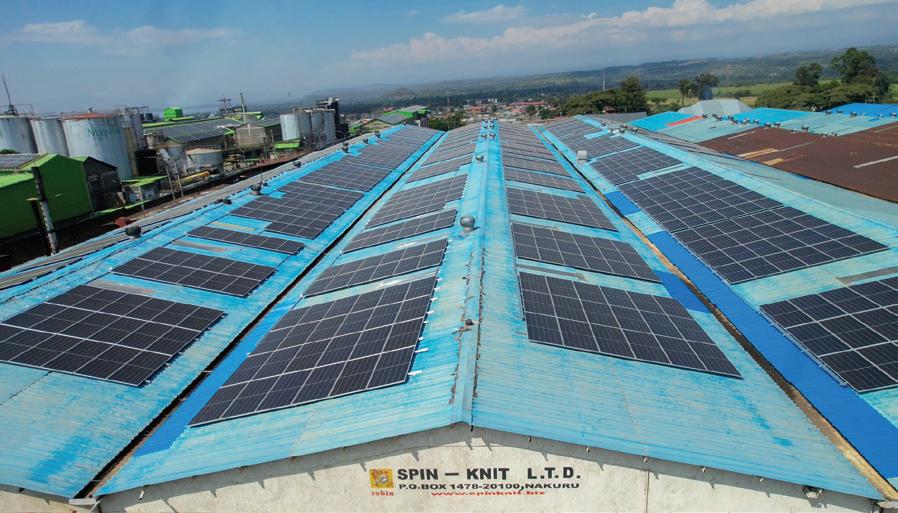
Pamoja Tutaweza Initiative and has implemented reward and recognition schemes to motivate employees in this effort.
Spin Knit’s electrical energy consumption has decreased from 6,570,000 kWh (six million five hundred and seventy thousand units) per annum in 2003 to 3,960,000 kWh (four million units) per annum in 2024, despite similar or increased production levels.
In 2017, Spin Knit invested in a biomass steam boiler, resulting in approximately KSh 18 million in annual savings compared to furnace oil. In 2022, the company invested in 720kWp solar PV modules, which yielded a 25% return on investment.
During the 20th EMA awards, Spin Knit received the Participation Consistency Award and the Best Energy Management - Textile and Apparel Sector Award. The company was also a runner-up for the Renewable Energy Award in both Band I and Band II Energy Consumers categories.
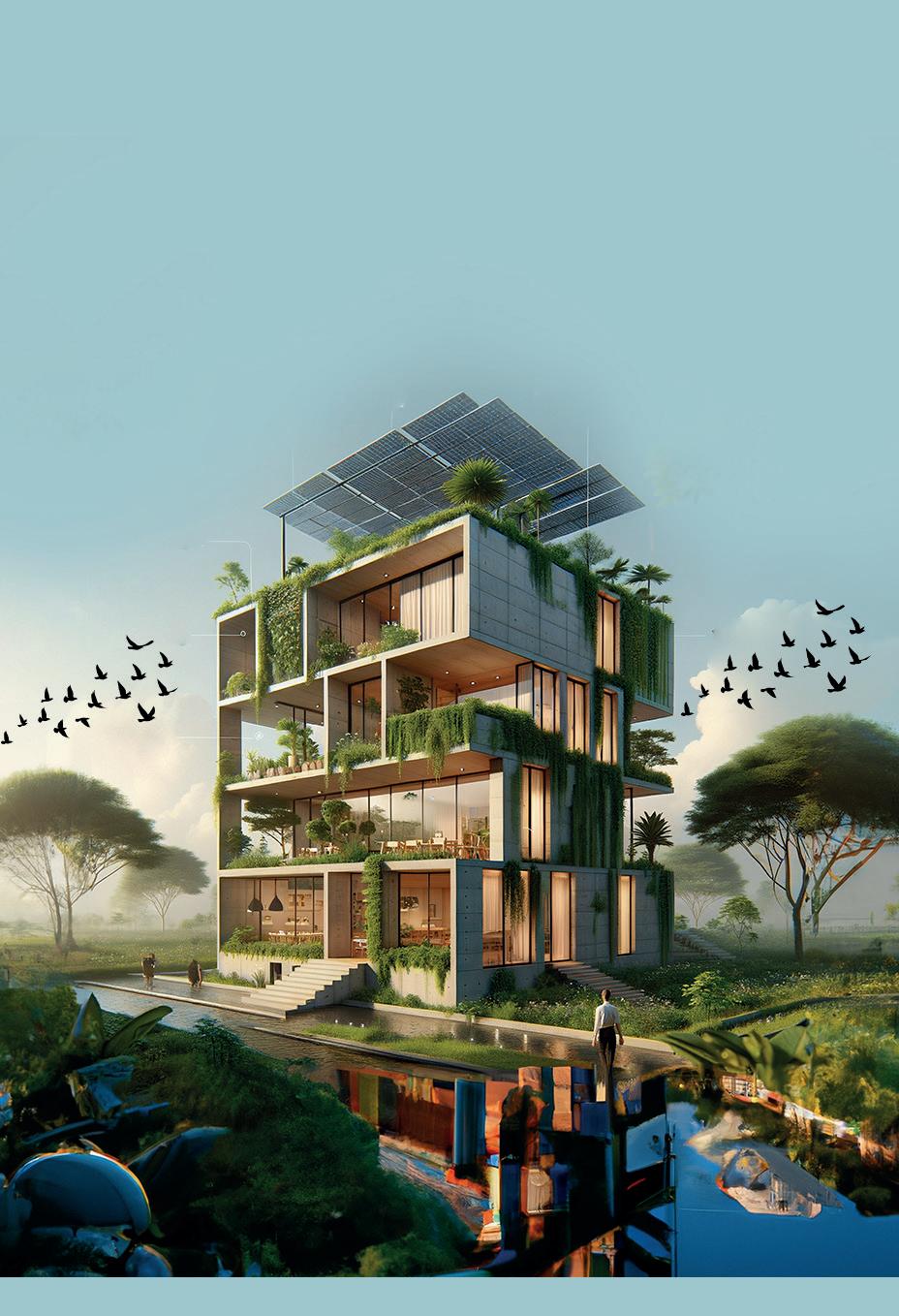






Isuzu East Africa upholds sustainability to a brighter future through ensuring high levels of energy efficiency. Energy management is an important component as it draws to our sustainability pillar (Planet) which implies commitment to environmental responsibility.
We build a sustainable future through:
As part of this initiative, Isuzu East Africa has replaced the fluorescent lighting with LED equivalent. This ensures there is low energy consumption thereby cutting on cost. The LED lighting presents a long life span therefore promising value for money. Isuzu East Africa has also replaced the fluorescent lights with fewer LED High bay lights in LCV with the aim of managing energy consumption. Additionally, the installation of light control timers and motion/occupancy sensors are efficient energy management strategies because they allow for lighting activation only when required. This reduces power wastage as the timers are fashioned in line with the company’s operational needs. Isuzu East Africa initiative to install skylights on high roofs such as the factory roof, LCV Assembly roof and Parts and Accessories warehouse roof allows for maximum use of natural lighting therefore reducing power consumption.
Isuzu East Africa’s commitment to energy management includes efficiency in compressed air management. To begin with, the VSD Compressors allow the adjustment of the compressor output thereby saving energy and reducing equipment wear. The initiative of zero air loss auto drains and the prompt to report leaks and repair air leaks help us reduce compressed air and energy wastage.
Isuzu East Africa optimizes every component in reduction of energy use and performance enhancement. The right sizing of motors, fans and pumps ensures that there is no energy wastage and this presents sustainable operations at Isuzu East Africa. Through ensuring regular maintenance, cleaning and scrubbing of the equipment and vibration monitoring, Isuzu East Africa prevents additional energy demands.
Isuzu East Africa commits to leveraging on the use of alternative energy sources to safely manage energy. These alternative energy sources are; 550 Kwp Solar PV, use of skylights for natural lighting, 2000 litre Solar Water Heating system and other Solar Hybrid water heating systems. Through the alternative energy sources, Isuzu East Africa reaffirms its role as a sustainability leader in the industry by reducing the carbon footprint.
Isuzu East Africa integrates process optimization enhancements as an initiative in its sustainability journey. Isuzu East Africa incorporates PQCS, F-Series Sub Assy Station, Paint Shop Oven Baking timer and Power Monitoring Expert to increase the overall productivity and enhance sustainability through energy efficiency.
At Isuzu East Africa, push taps, sensor taps, urinals with sensors reduce daily water volume consumption. These initiatives reduce energy consumption due to low pumping rates for the water. To add on this, recycling of Reverse Osmosis Drinking Water Treatment Plant Concentrate for use in washing bays and gardening, as well as recycling ED RO for use in other processes reduce the pumping needs which require energy.
Isuzu East Africa’s efficient energy management initiatives embody its commitment to sustainability. As the most trusted logistics partner, Isuzu East Africa is dedicated to creating a positive change through advanced sustainable initiatives.
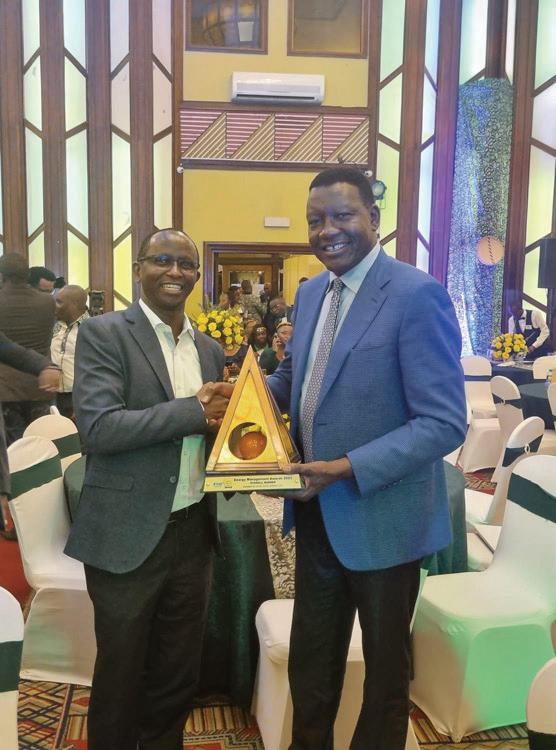
Isuzu EA’s Energy Management Committee representatives pose for a photo with the trophies won during the Energy Management Awards.The company scooped the prestigious Energy Management Award as the Overall Winner.
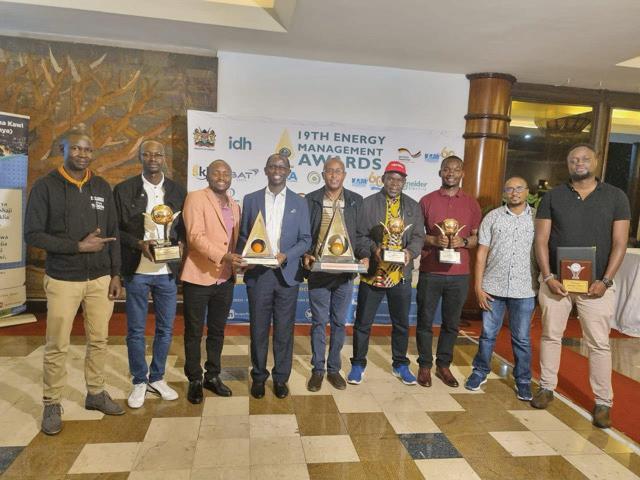

By Peter Scott

Over 900 million people in Sub-Saharan Africa lack access to clean cooking. The reliance on inefficient stoves and open fires bankrupt families, destroy forests, and increase indoor air pollution, leading to the death of 600,000 people, mostly women and children, every year.
The outlook is equally grim. In Africa, unlike every other region of the world, the number of people relying on traditional biomass stoves is projected to grow, reaching 1.67 billion by 2050.
I’ve been working in the clean cooking sector for the last 28 years - the last 14 as CEO and Founder of BURN – and up until a few years ago, it seemed that this crisis couldn’t be solved, at least not at scale. Then suddenly, everything changed.
With carbon credits - and carbon credit pre-financingwe could finally bring a clean cooking appliance to every household on the continent, by discounting the cost of a stove to a customer by 60-100%. In the last 18 months, BURN has provided ~$60 million of such discounts, allowing families to access lifesaving technology that would otherwise have been unattainable. In the next 18 months, we expect to provide an additional $110 million in discounts. (In fact, more is possible as we have built the manufacturing and home delivery infrastructure across the continent to utilize $250 million of carbon finance each year).
Today, BURN leverages carbon finance to bring a range of clean cooking appliances including electric, LPG, and biomass stoves to 10 countries in Africa and growing.
We use it to bring induction cooking to the 600 million people who currently have access to electricity, helping them make the leap from charcoal to electric cooking on Africa’s mostly renewable-powered grid. At the same time, we use it to bring our best-in-class wood stove to the ~700 million rural people in Africa who rely on firewood and can’t afford purchased fuels such as LPG, electricity, ethanol, or pellets.
Carbon credits are not a ‘niceto-have’. They are a matter of life or death, quite literally for the 600,000 women and children who might still die this year because they
could not access a clean cooking appliance.
No one disputes that clean cooking appliances reduce CO2 and black carbon emissions into the atmosphere. The challenge for clean cooking appliances, as with every climate-positive technology, is to ascertain exactly how many tons per year. Quantifying this relies on hundreds of inputs and formulas but comes down to 2 critical questions: how much non-renewable biomass (fNRB) is used in the baseline? and how much fuel does the new technology save?
First, while there is heated debate on what the exact fNRB should be in every m2 of Africa, there is at least an established floor for the fNRB, with many country-specific fNRBs landing higher.
Fortunately, for investors with concerns about fNRB, even with the floor, we can generate enough carbon credits to provide meaningful discounts to end-users and a viable return to our public and private capital investors for some of our projects.
Second, our consumption and usage rates are established. In addition to audits put in place by the registries, we have independent third-party findings, for example, Wharton and University of Chicago Economists Berkouwer and Dean recently conducted an independent Randomized Control Trial of 1000 of our users in Kenya and found a match to our usage and consumption measurements, finding a fuel savings of 39% against the baseline (their recent update to the study found these savings to be robust for 3 years and counting, with 98% of the stoves still in use). This study was peer-reviewed and published in the world’s leading economics journal, The American Economic Review (AER).
Of course, monitoring through surveys and home visits has its limitations as it’s not feasible to have an auditor live in someone’s house for 7 years. Fortunately, we now have the ability, through recent technological advances in thermal sensors and IoT connectivity, to digitally monitor every single cooking appliance at a nominal cost. Digitally monitored credits (dMRV), such as those generated by our IoT/SIMenabled induction cooker using Gold’s Standard’s new metered methodology, have a higher value, recently fetching $25 per ton on CYNK.
Work is ongoing to factor these new technologies and inputs into updated methodologies. We are actively engaging and applauding these efforts, but there is no need for us to wait for the registries to develop the perfect methodology. At BURN, we are executing carbon credit projects that utilize the most conservative methodologies such as TPDDTEC (Technologies and Practices to Displace Decentralized Thermal Energy Consumption) and MMECD (Methodology for Metered and Measured Cooking Devices).
The key to creating a cookstove sector that generates highquality credits is to make commitments to buy high-quality credits today. There are many players, BURN included, that offer ‘forward sales’ contracts on future MMECD and dMRV credits. Commitments to buy these credits will cause billions of dollars of new investment to flow, with the knowledge that there is a committed off-taker on the other side.
Today, carbon finance alone can generate the capital needed to lead the clean cooking transition. The amount needed is less than people might imagine, for example, a $1 billion investment can deliver ~30 million stoves. These stoves can then generate enough carbon credit revenue over a 7-year crediting period to repay the principal investment and still subsidize an additional 50 million stoves, or about the number of stoves that Africa needs each year.
The writer is the Chief Executive Officer of BURN
After doubling its collection to Ksh 1 billion, primarily through its own revenue sources without burdening taxpayers with additional taxes, the Murang’a County Government is building on the successes of mutually beneficial collaborations with farmers and manufacturers and making land available for industrial use.
By Conrad Onyango
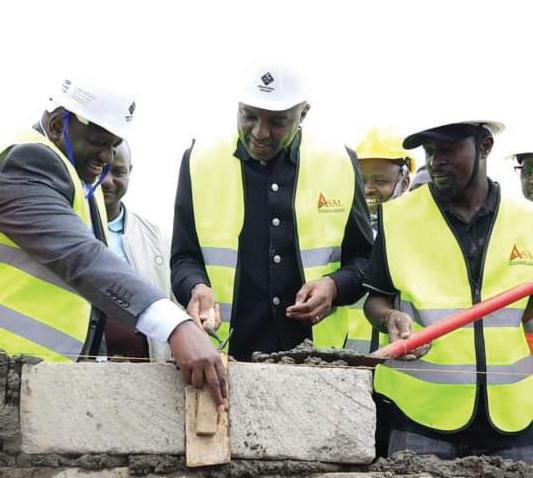
Murang’a County has begun opening thousands of acres of land for local industries to establish businesses.
The devolved government sees this initiative as a significant opportunity to boost economic growth and revenue and to create sustainable employment opportunities for the youth through agro-processing.
A flagship project for the Export Processing Zone (EPZ), valued at Sh495 million, is set to commence operations in November 2024 in Gatanga Constituency.
This industrial hub, spanning 500 acres, is part of the 1,200 acres of land that Delmonte Kenya Limited had ceded to the county government and is expected to bring significant transformation in the manufacturing sector.

“We have land where you (manufacturers) can come, and we give you space to set up your business. That includes 1,500 acres right next to the main Thika-Nyeri Highway at Ruma Kenji,” Murang’a County Governor Irungu Kang’ata told manufacturers on the sidelines of the Kenya Association of Manufacturers Annual General Meeting.
He added, “We want to make it exclusively for manufacturing.”
The County Government is betting big on MoUs between farmers, the county government, and manufacturers to revolutionize the manufacturing sector and socio-economic transformation.
“We have realized that the trick in pulling people out of poverty is not for the government to establish enterprises. Because if we do so, we will open ourselves to corruption and mismanagement,” he explained.
We have collaborated with key manufacturers, particularly in agroprocessing, where we sign MoUs, without putting up any factory. Our work as a County is simple. We mobilize farmers, take farm produce to the manufacturers, who do the value addition. Then the company pays us, and we pay the farmers.
Already, the County has recorded several successes through these MoUs, helping farmers earn more from their produce as manufacturers gain a consistent supply of raw materials for their processing.
For instance, the Governor recalled that when he took office, mangoes grown in Murang’a were sold by farmers at two shillings per kilogram. The County Government entered into an agreement with Kevian Kenya Limited in Thika and Sunny Mango, in Kabiti, Murang’a, and secured a Ksh 16 per kg deal. The government sweetened the deal by topping up a ‘small support’; now, the mango farmers are getting Ksh 23 per kg.
The County Government also agreed to contract farming with East Africa Breweries Limited and now the sorghum farmers earn Ksh 14 per kilogram.
Recently, the government also entered into another MoU with a company called Joy Millers, where the County Government is to mobilize farmers to deliver maize to them for value addition.
“And they will buy our maize at Ksh 3,590 per 90-kilogram bag. The market price in Murang’a was about Ksh 2,000 per bag. By a simple MoU, you can see we are at 3,500,” said Kang’ata.
Murang’a County seeks tremendous success with the Ksh 495 million flagship project for the EPZ in Gatanga.
The Investments, Trade and Industry Cabinet Secretary, Salim Mvurya, termed the launch critical to the country’s economic growth and emphasized that it would create direct and indirect jobs for thousands of young people in agriculture.
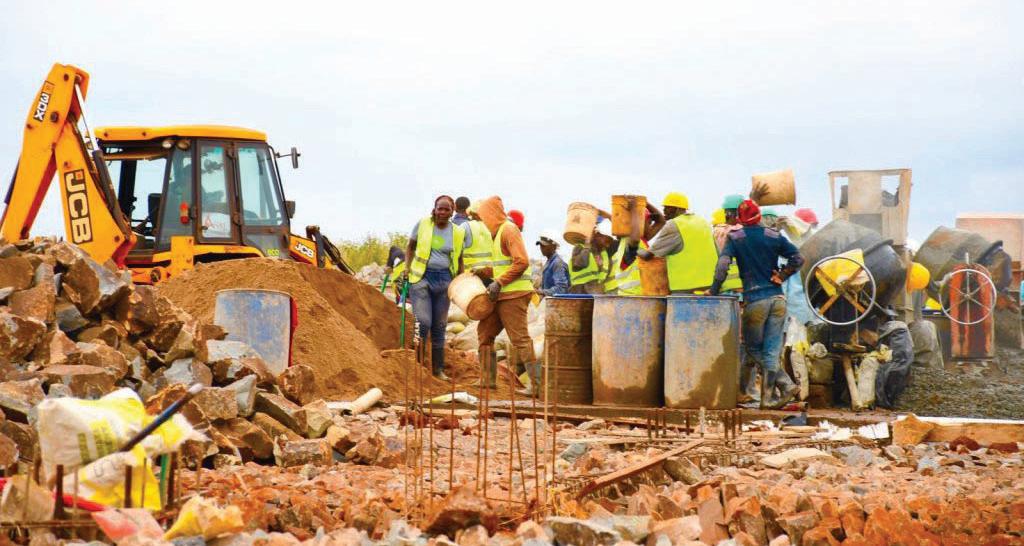
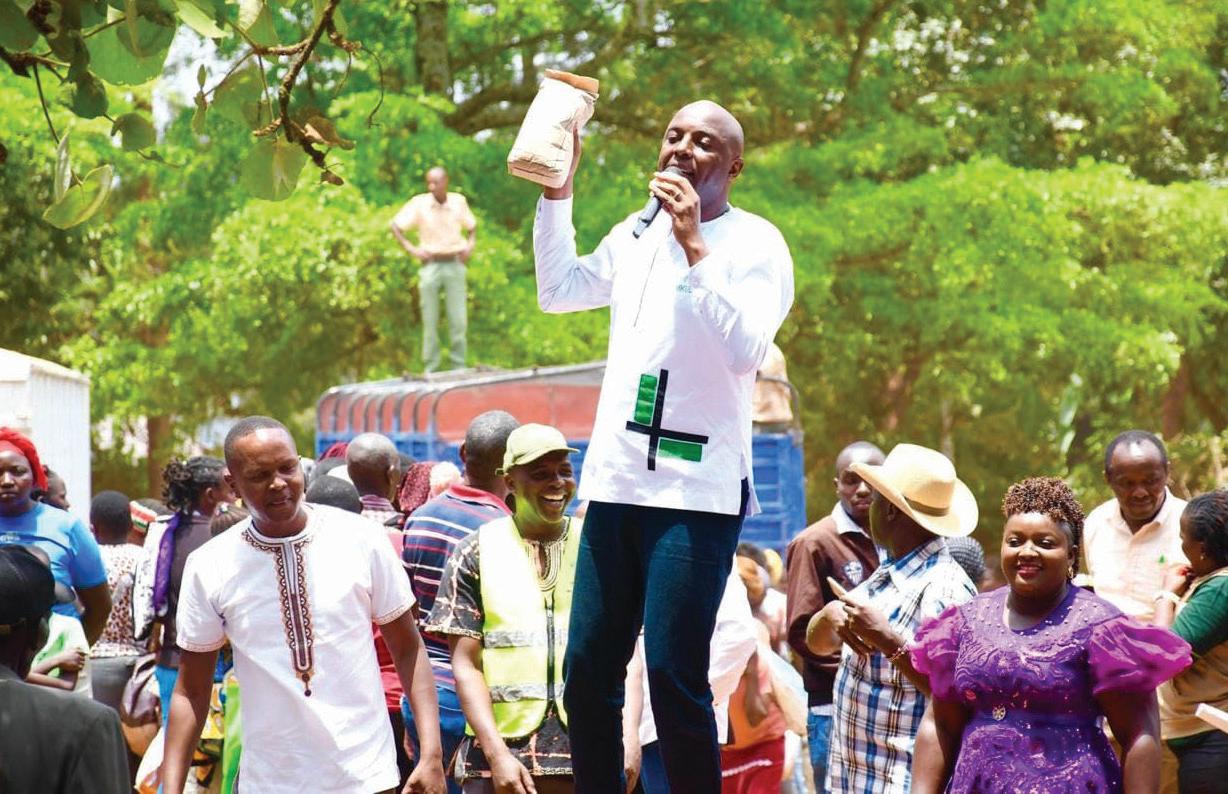
“This project is well placed in the national government plan and is very critical in the Bottom-Up Economic Transformation Agenda, which has set priority for manufacturing,” said Mvurya.
The industrial hub is expected to attract new investments and strengthen Kenya’s position in the global market.
Governor Kang’ata said the land will be used for industrial purposes. A few acres will host other essential amenities, including a teaching and referral hospital, educational institutions, county offices, affordable housing, and a public park.
“We had the option of subdividing this land for private purposes, but we decided to make it an industrial hub where we will set up factories which will open up our county and create massive employment for our people,” Kangata said.
According to a two-year devolution scorecard by survey firm Timely Kenya, Governor Kang’ata is ranked at the top of a list of 10 performing governors with a score of 62 per cent. He topped in the health and education sectors due to his notable flagship projects, including Kang’ata Healthcare and TeleMedicine.
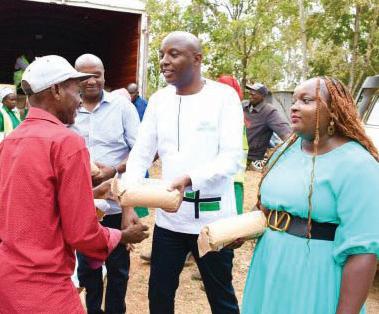
He said the project would provide an avenue to foster domestic and foreign private investment that will bring critical contributions to the country’s economic growth as farmers get a vast market for their farm produce.
The county celebrated a new milestone after collecting over Sh1 billion, twice as much as the previous government, of ownsource revenue during this financial year, which ended June 30, without necessarily increasing taxes that could overburden the taxpayer.
We have achieved that with technology. We decided to employ software engineers to develop our systems.
Governor Kang’ata
The national government has committed to supporting the growth of local industries in the manufacturing sector to increase its contribution to GDP to 20 per cent by 2030.
From pioneering Kenya’s first commercial winery and evolving from an importer and distributor to a leader in local alcohol production of a diverse range of alcoholic beverages, KWAL is raising a glass to a legacy of trust, quality, and community impact.
By Victor Kwabe
Kenya Wine Agency Limited (KWAL) takes pride in providing both Kenyan and East African consumers with award-winning, high-quality beverages as it celebrates its 55th anniversary, marked by growth and innovation.
Founded in 1969 as a government-owned entity under the Industrial and Commercial Development Corporation (ICDC), now known as the Kenya Development Corporation (KDC), KWAL initially focused on importing and distributing wines and spirits.
Over the five decades, however, the company has transformed into a key player in the local production of alcoholic beverages. Driven by a commitment to quality and a spirit of innovation, KWAL has diversified its offerings and established itself as a leading manufacturer of ciders, vodka, gin, whisky, brandy, and wines.
KWAL Managing Director Lina Githuka notes that prioritization of consistency in quality and service has built a strong trust among its partners and consumers.
Milestones
Since KWAL established Kenya’s first commercial winery in 1982, it has marked a significant turning point for the wine industry and has since made substantial progress, becoming
a leader in the Eastern African beverage market. In just a span of just two years, KWAL has achieved two transformative milestones that underscore its unwavering commitment to growth and innovation. The first was the company’s relocation to Tatu Industrial Park, a state-of-theart facility that significantly expanded its production capacity.
The move has enabled KWAL to meet the increasing demand for its wide range of beverages, positioning the company to scale operations and cater to a growing consumer base. The second milestone was KWAL’s integration with HEINEKEN Beverages, a step that opened new doors for both the company and its employees, which provided the firm access to global expertise, resources, and opportunities, aligning KWAL with international standards and strengthening its foothold in the regional market.
KWAL takes pride in its unique and diverse multi-category portfolio, which features a mix of cherished local brands and world-class international offerings. The company’s extensive range includes popular homegrown names such as Kibao Vodka, County, and Hunter’s Choice, alongside internationally acclaimed products like Savanna Cider, Viceroy, Heineken, Amarula, and Nederburg Wines.

We take great pride in being a trusted brand that consistently meets the evolving tastes of consumers, while continuing to contribute meaningfully to the community and society. This trust has been instrumental in establishing our strong reputation in Kenya.
Githuka.
Lina Githuka, KWAL Managing Director

A pivotal moment for KWAL occurred in 2014 when the Privatization Commission finalized the sale of a 26% stake in the company to Distell Group, which is now part of HEINEKEN Beverages. This strategic partnership significantly changed the game for KWAL, leading to a doubling of production output and notable improvements in its financial performance.
Githuka, emphasizes that the company’s operations are guided by a clear purpose: “craft the joy of true togetherness to inspire a better world.” She highlights the importance of creating products that foster connections and leave lasting memories.
“We ignite moments that bring people together, whether it’s a shared toast with friends over a bottle of Hunter’s Choice or a refreshing Savanna Cider enjoyed on a warm afternoon,” she notes.
Since it pioneered the country’s first commercial winery, local wine production in Kenya has reached new heights, and wine appreciation has become more accessible, integrating into the cultural fabric of the nation.
In its early years, KWAL took a bold initiative by producing wine from locally grown fruits such as pawpaw and passion fruit, sourced from Kenyan farmers. The company’s first locally produced wine, Papaya, gained international acclaim, winning medals for quality and excellence at the prestigious International Monde Selection.
This achievement was a proud moment for both KWAL and Kenya, demonstrating the immense potential of locally sourced ingredients on a global stage.
Innovation has been central to KWAL’s success, with one of its most impactful breakthroughs being the introduction of Tetra Pak packaging for wine. This innovative approach made wine more accessible, affordable, and convenient, broadening its appeal among Kenyan consumers and enabling the company to reach a wider market.

To support this evolution, KWAL has implemented several initiatives aimed at fostering wine education and enthusiasm. These initiatives include wine training programs for the hospitality sector and hosting wine tasting and pairing events for consumers.
These efforts are designed to deepen the understanding of wine’s versatility and its ability to enhance dining experiences, ultimately helping to cultivate a sophisticated and thriving wine culture in Kenya.

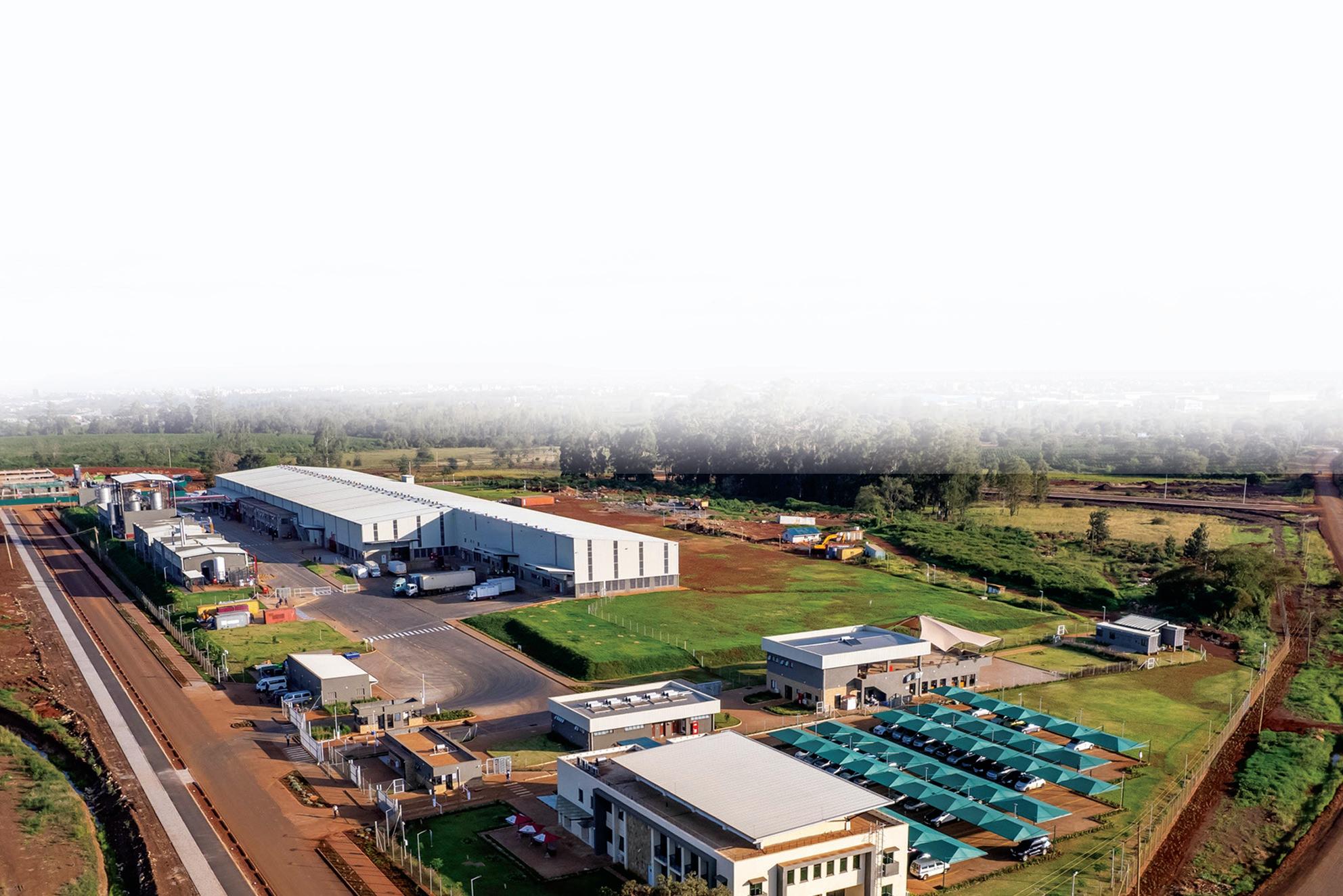









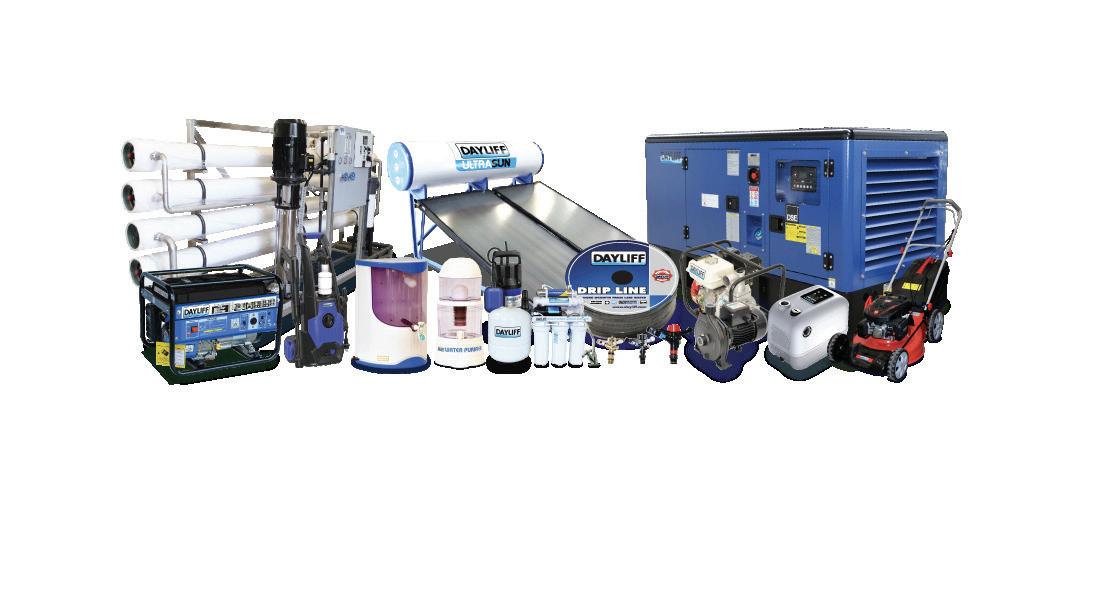


Desbro is proud to join you in celebrating this incredible milestone of 55 years. Your dedication to quality, innovation, and growth has set a remarkable standard in the industry. Here’s to many more years of success and impactful achievements!






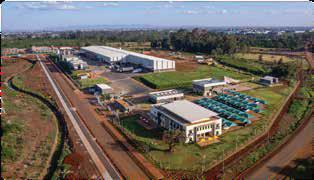


D.Manji Construction Ltd congratulate KWAL on their 55 Years of Excellence.
As proud Main Contractors of their new facility at Tatu City, we pride ourselves in delivering world class facilities for KWAL from the specialist floors (FM2 concrete floors and Epoxy/PU) to the Interior Fitout of all buildings. We wish KWAL the utmost success for many years to come.
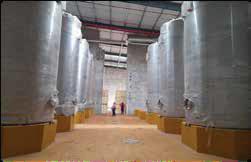

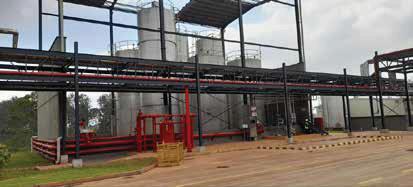
At Multi Colour Corporation Kenya Limited, we are thrilled to celebrate this incredible milestone with you. Your journey has been a beacon of excellence and innovation, and we are proud to be your premium label supplier.
Together, we’ve crafted labels that not only enhance your brands but also tell your unique story with every bottle.
Here’s to many more years of partnership, innovation, and shared success. May your future be as bright and distinguished as the past 55 years!
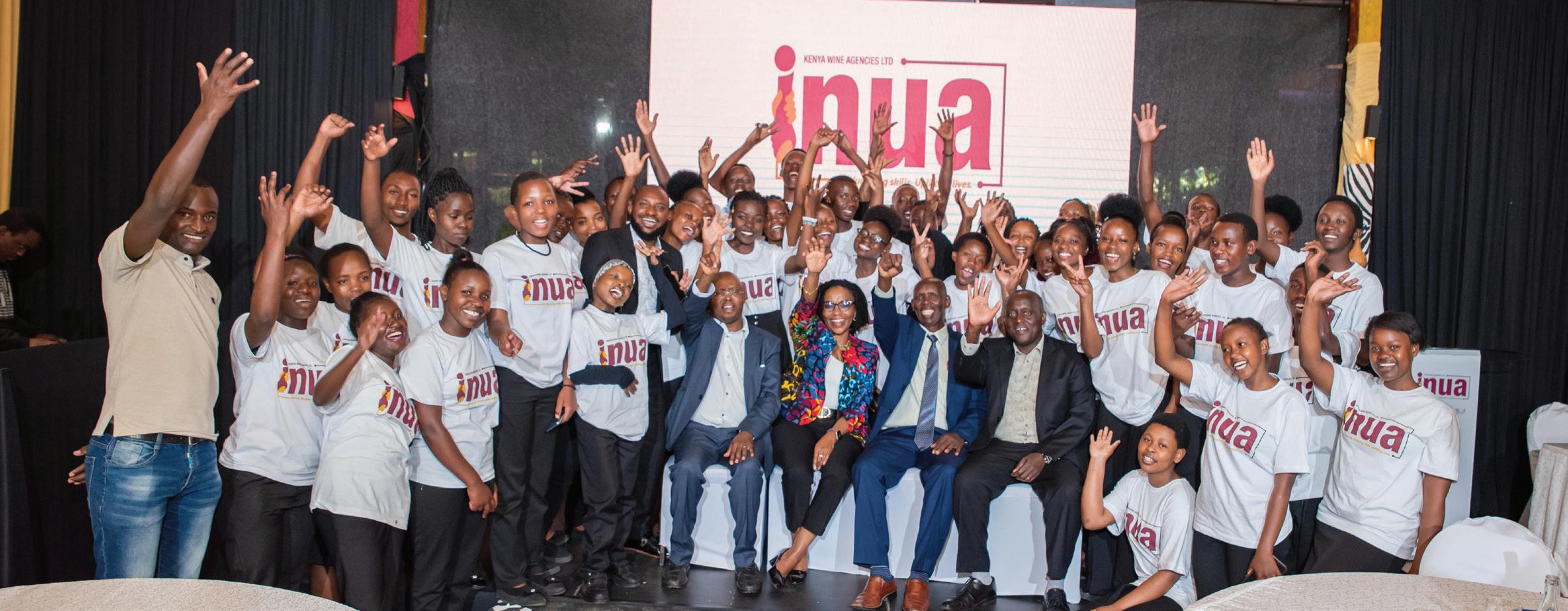
Githuka emphasizes that sustainability and integrity are foundational to KWAL’s operations.
“We are committed to creating a positive impact across three key pillars: environmental sustainability, social responsibility, and responsible business practices,” she explains.
These principles guide KWAL’s actions, ensuring that the company contributes meaningfully to the well-being of society, the environment, and its business ecosystem.
With over five decades of operation, the beverage company recognizes its opportunity to act as a force for positive change. One of its flagship social impact initiatives is the Inua Program, a vocational training effort targeting youth from informal settlements.
The program, run in partnership with the Mukuru Promotion Centre (MPC) and the Tamarind Group, provides culinary training to equip young people with marketable skills.
In March 2024, we signed a Memorandum of Understanding to invest KSh 10 million over three years in the Inua Program. This sponsorship supports trainee activities at MPC, giving them valuable opportunities to build better livelihoods.
Earlier this year, during the devastating floods caused by torrential rains, the company provided relief support to affected communities. The company also engages in initiatives that promote environmental conservation and gender empowerment, reinforcing its commitment to creating a more sustainable and inclusive society.
“Beyond these specific initiatives, our greatest contribution to society lies in the jobs we create, the enterprises we support, and the taxes we pay,” Githuka adds.
Today, the company offers direct and contracted employment to over 400 people, with thousands more benefiting from its extended value chain.
The company’s KSh 5 billion investment in the Tatu Factory was designed to support Sustainable Development Goals (SDGs) like affordable and clean energy (SDG 7) and responsible production and consumption (SDG 12).
In addition, KWAL is working towards EDGE Certification for energy efficiency and is enhancing water management through rainwater harvesting and wastewater recycling. As a member of Packaging Producer Responsibility Organization (PAKPRO), KWAL also contributes to waste reduction and recycling initiatives, reinforcing its role in advancing a circular economy.
The company promotes a collaborative and inclusive work environment, providing wellness programs and opportunities for career growth. One highlight is the opening of ‘The Good Vibes Bar’ at the Tatu factory, where employees can socialize and relax. Additionally, KWAL supports its diverse workforce through initiatives like the KWAL Women Chat Lounge and The KWAL Bro Code, which focus on mentorship and professional development.
In the next five years, KWAL plans to enhance its local production, with the Tatu facility playing a central role in this growth. The integration with HEINEKEN presents exciting opportunities for exploring new markets and adopting global best practices, utilizing their expertise to help KWAL innovate and strengthen its leadership in Kenya’s beverage industry and beyond.
Committed to its purpose of crafting the joy of true togetherness, to inspire a better world KWAL continues to foster connection and celebration, one drink and one cheers at a time.

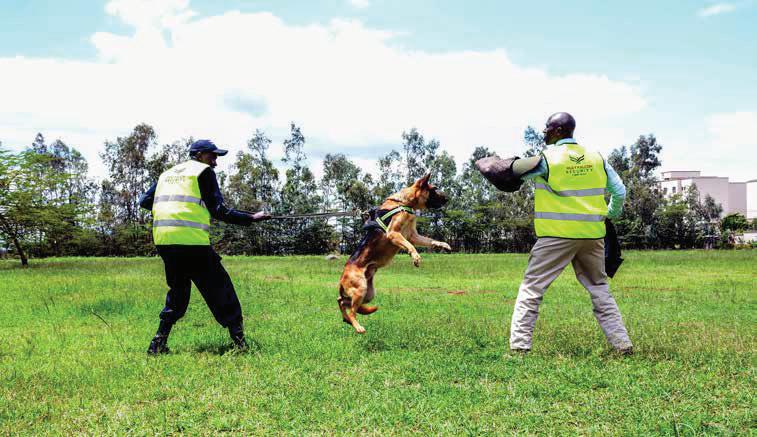
• Manned Security Guarding
• Manual and Intruder Alarm Systems
• Dog and Handler Services
• Courier Services
• Cash in Transit Services
• Access Control Systems
• Electric Fencing
• Back up response
• Fire Alarm
• Automated Gates/Barriers
• Events Management
• Private Investigations
• Security Consultancy

Congratulations on Your 55th Anniversary, KWAL!
Celebrating 55 years of excellence and innovation. Here’s to many more years of success and impact!
• CCTV Installation Riley House, 26 Masaba Road, Off Bunyala Road, Lower Hill P.O.Box 56152 – 00200 Nairobi Tel: (020) 2518906/7 Mobile: 0722 716581 / 0733 617817 Email: info@rileyfalcon.co.ke

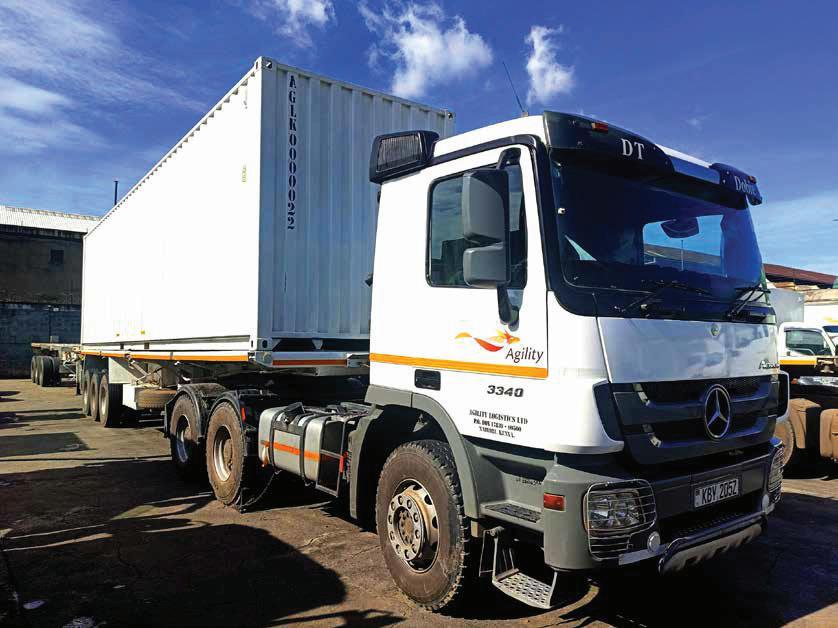













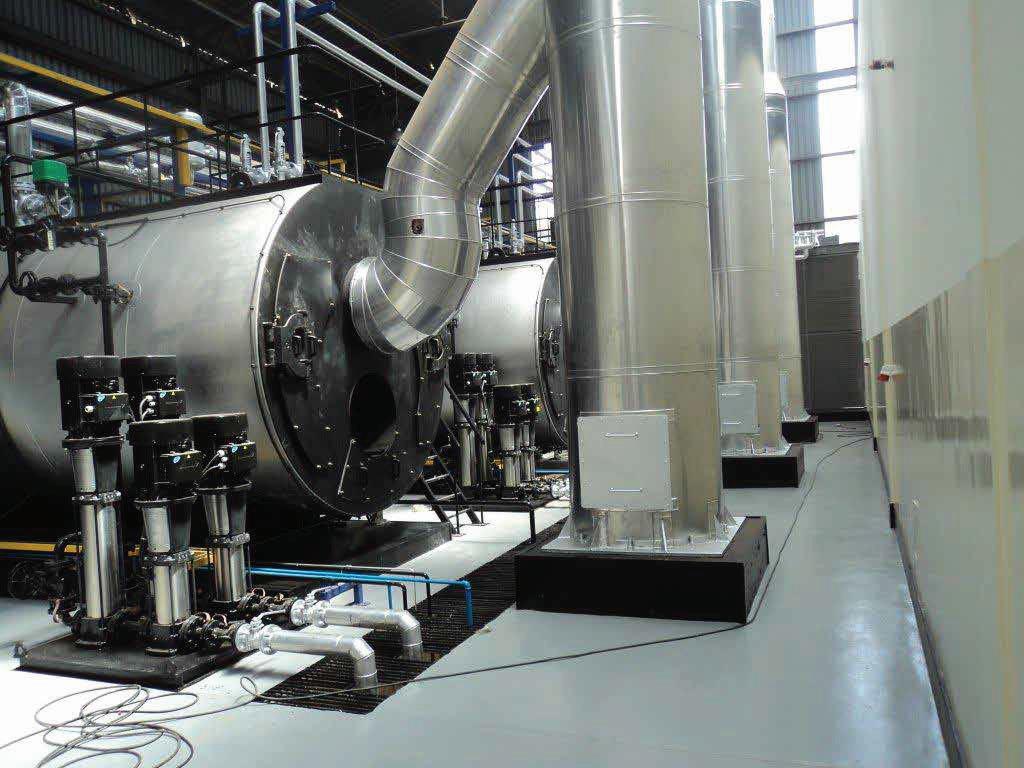

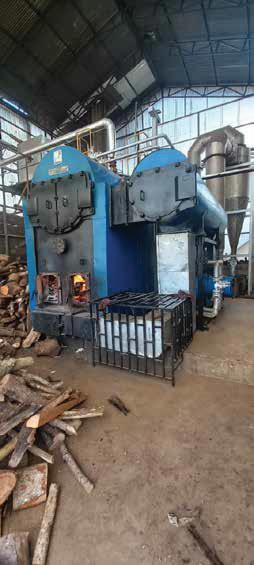


Commemorating this milestone is a testament to your enduring resilience and commitment. Our journey together is a beautiful story, filled with lessons that inspire us all. Thank you for being a valued client and for your continued trust and support. Happy anniversary! Here’s to many more years of happiness and achievements.
With heartfelt congratulations from CET Industrial Ltd.












By: Nancy Mwari Green Growth and Climate Change Officer at KAM
One of the remarkable outcomes from COP 28 was the pledge to double the global average annual rate of energy efficiency improvements from around 2% to over 4% every year until 2030. This decision highlights the vital role that energy efficiency plays in the climate change discussion.
Energy efficiency is the use of less energy to perform a given task and often involves a technology upgrade. At household level, energy efficiency could entail use of LED lamps rather than incandescent bulbs and the use of high star rated refrigerators. In an industrial setting, energy efficiency could include the use of variable speed drives, high efficiency motors and compressors. Energy conservation on the other hand focuses on the use of less energy through change of behavior and habits, such as turning off the lights when not in use.
There are opportunities for energy efficiency across different sectors. The Kenya National Energy Efficiency and conservation Strategy (KNEECS 2020) identified five key sectors: Buildings, Utilities, Industry & Agriculture, Transport and Power Utilities. These priority sectors were chosen based on their high demand and hence high potential to contribute to low carbon development.
In Kenya, it is mandatory for facilities consuming more than 180,000kWh units a year to conduct energy audits once every three years and to implement at least 50% of the recommendations. While facilities could conduct energy audits for compliance purposes, the business case for energy efficiency is quite compelling. For a typical industry, energy efficiency has the potential to reduce energy consumption by up to 10 to 30%. In the Annual Energy Management Awards, we have witnessed over KSh 15Billion saved in the last 20 years from a total of about 500 companies, which is testament to the power of energy efficiency.
Energy Efficiency requires concerted efforts. At industry level, energy efficiency seems to have been well embraced because of the business case that it presents. At the power utility level, ambitious targets have been set, with the utility committing to reduce the current losses from 23% to 16%. However, at household level, there is need for more sensitization on the need to embrace energy efficiency and conservation as a way of life.
It is often said that the cheapest energy is the energy that is not consumed. Beyond saving costs, efficient energy use cuts greenhouse gas emissions, creates jobs, and helps meet growing energy demands—ensuring energy security. As global and national energy prices fluctuate, it is tempting to expect governments to lower energy costs. However, the most reliable way to protect ourselves from rising energy costs is by looking inward and embracing energy efficiency and conservation.
In its Nationally Determined Contributions, Kenya commits to becoming a net-zero emitter by 2050. Achieving this goal requires every sector to embrace efficiency. Energy efficiency, though often overlooked, is a vital tool for reducing our carbon footprint. It is easy to dismiss the importance of energy conservation with the mindset, “I can afford to pay for power, so I’ll use it as I wish—I won’t be disconnected.” But embracing energy efficiency is not about financial limitations; it is about our responsibility to future generations and ensuring a sustainable, livable world.
Our complacency may seem harmless, but inefficiency leads to a higher carbon footprint and increased demand on an already strained electricity grid. While the benefits of energy efficiency can be challenging to measure, the impact is undeniable. We simply cannot afford to ignore it.
The world is in a climate crisis, and every sector has a role to play in mitigating it. It is easy to fall into the trap of thinking that the responsibility lies solely with global leaders, but the truth is, meaningful change begins with all of us. Whether it is large industries or individual households, energy efficiency can be as simple as switching to a more efficient light bulb or optimizing the way we use power. If we all act within our capacity, the cumulative effect will be a cooler, more sustainable planet.
Energy efficiency, while often overlooked, is one of the most impactful tools in combating climate change. By embracing it, we can cut down on harmful emissions, reduce energy costs, and decrease our reliance on imported energy, securing not just economic benefits but also a greener, more resilient future for Kenya and the world. It is about more than saving money and more about safeguarding our environment for future generations.
The time to act is not sometime in the distant future—it is now. Every small step matters in our collective fight against climate change.

By: Wesley Kirui Digital Marketer & Media Planner, All Seasons Communication
“What are your climate action goals?” “What are your green goals?” “What is your company doing in terms of sustainability?” These and many more are the top questions asked when you get into a panel conscious about sustainability. Ever since the adoption of the Sustainable Development Goals in 2015, companies have become more focused on synergizing their plans with the goals, but one goal has always stood out based on how critical it is, SDG 13 (Climate Action).
What is it about climate action that has raised such significant concern? Over the past decades, climate models from agencies like the Intergovernmental Panel on Climate Change (IPCC) have indicated a spike in global temperatures attributed to human activities. Historically, we have experienced warmer and colder periods, but the current rate of warming is accelerating at an unprecedented speed. For the past 10 years, a city somewhere in the world has recorded the highest temperatures ever observed. Wildfires have worsened, flooding has become the norm, and extreme weather events have become a monthly occurrence in some regions. This reality emphasizes the critical importance of addressing climate change, as its impact affects all sectors.
As marketers, how can we help our planet overcome the strife we have created that is making many communities across the globe vulnerable each year? There are many things we can do in terms of climate change adaptation and mitigation. For adaptation, we can invest more in helping the communities we market to, that are vulnerable, through community service projects. For mitigation, we can document how we use resources and work out plans to reduce our carbon footprints in the long run.
Advertising agencies play a critical role in our market, as most of them are the custodians of marketing strategies from their inception to execution. Unfortunately for most agencies, without a sustainability component mentioned in a client’s brief, many marketing efforts—including the “big ideas”—will be geared towards meeting the campaign goals. Speaking of big ideas, there are many ways marketers can improve their sustainability initiatives, from partnering with various companies championing change to streamlining their processes based on opportunities that can reduce their carbon footprint daily.
At All Seasons Communications, one of Kenya’s leading advertising agencies, we are committed to reducing our carbon footprint both internally and within our marketing strategies. Our multinational clients are particularly focused on sustainability, presenting a valuable opportunity for local agencies to
develop ideas that help them achieve their marketing goals while minimizing their environmental impact. For sustainability projects to succeed, it is essential to understand local needs, as these are key indicators that inform the effectiveness of execution.
In Kenya, agriculture has been the top emitter, as is the case in many countries worldwide, closely followed by the transport sector. This situation has created various advertising opportunities for brands like Spotify, Brookside, Carrefour, Nice & Lovely, and many others. According to the Climate Watch 2023 report, the transport sector has experienced a 239% increase in emissions compared to the annual figures from the 1990s, and this trend is projected to rise further as the industry continues to grow.
As we execute our campaigns leveraging the opportunities presented by this sector, how can marketers best assist in reducing its annual emissions? This is a question the All Seasons Communications Ltd team has consistently asked itself whenever we implement a campaign utilizing transit media. One of the insights gained from this reflection has informed our strategy for mitigating our marketing carbon footprint.
As Friends of Karura Forest, we commit to planting one tree for each bus used in our transit media campaigns, with plans to increase our planting efforts annually as our business grows. While our oceans serve as the largest carbon sinks, we cannot simply fill them with water to enhance their capacity for carbon sequestration. However, we can choose to plant trees every day. Trees are exceptional carbon sinks; studies show that most trees live between 30 and 300 years and that each tree can absorb an average of 0.025 tonnes of CO2 per year. Given this, while it may not be enough, each tree we plant can offset the carbon emitted by a branded bus over its lifetime.
In a world facing the irreversible realities of climate change, marketers today have the opportunity to go beyond traditional product selling. We can influence, educate, and inspire meaningful change. Let us embed sustainability into every campaign and collaborate with brands dedicated to reducing their carbon footprint. For agencies like All Seasons Communications, this is not just the right choice; it is a powerful business strategy that benefits both the planet and the bottom line. Let us plant the seeds of change today for a greener tomorrow!
Adieu to petroleum-laden nail beauty products. This trailblazer is embracing the lush bounty of nature, offering plant-based alternatives - that promise nurture and adorn - and leveraging power of education to enlighten its clientele about the art and science of beauty nail care.
By Conrad Onyango
In 2018, Janet Mwangi started a nail beauty business by importing press-on artificial nails and selling them to women because she was simply, broke.
“Let’s be honest, you start a business because you’re broke, not because you’re a businessperson,” she shared during a recent interview with Industry Today.
A year into the business, customers began complaining that their natural nails were becoming weak, peeling, splitting, and breaking after removing the artificial nails.
These complaints didn’t initially concern Mwangi, and she continued importing and selling until about a week before Mother’s Day in 2019, when having a conversation with her mother. She realized they (Mwangi and her mother) all suffered from weak nails and her mother had eczema too.
“That was the first time I had a keen interest in my mother’s nails and noticed they were peeling. They had layers. My nails also had layers, but I thought that was normal because of constantly removing the artificial nails,” recalls Mwangi.
Mwangi, an Industrial Chemist specializing in natural nail care cosmetic formulation, decided to create a plant-based nail care product as a gift for her mother. She named it Jada Peeling Serum, now renamed Jada Strengthening and AntiPeeling Serum.

Both Mwangi, then a chemical engineering student, and her mother used the serum for three months, and the result was stronger, healthier nails with no peeling.
This inspired Mwangi to start a commercial venture, giving birth to Habiqo Investments (HI) Limited, a premium and natural nail care company that manufactures organic, clean, and effective nail care products curated specifically for the ethnic nails and well-being of its users.
“All our raw materials are plant-based, which means we extract them from different plants and then combine them with different oils to create a natural nail care product,” said Mwangi, now the Chief Executive Officer of Habiqo Investments.
In the first phase of the business in early 2019, Mwangi procured 10 bottles, pre-filled them with the serum, labeled them with a sticky note and cell tape, and started marketing them on Instagram. All of them were sold out, and she was in business.
“One mistake I made was formulating products for the Internet community, rather than for the local consumers here in Kenya, such as Janet, Wangui, and Muthoni,” she expressed regrets.
The beauty industry she affirmed is rapidly growing, but there is an alarming prevalence of petroleum and fossil fuel-
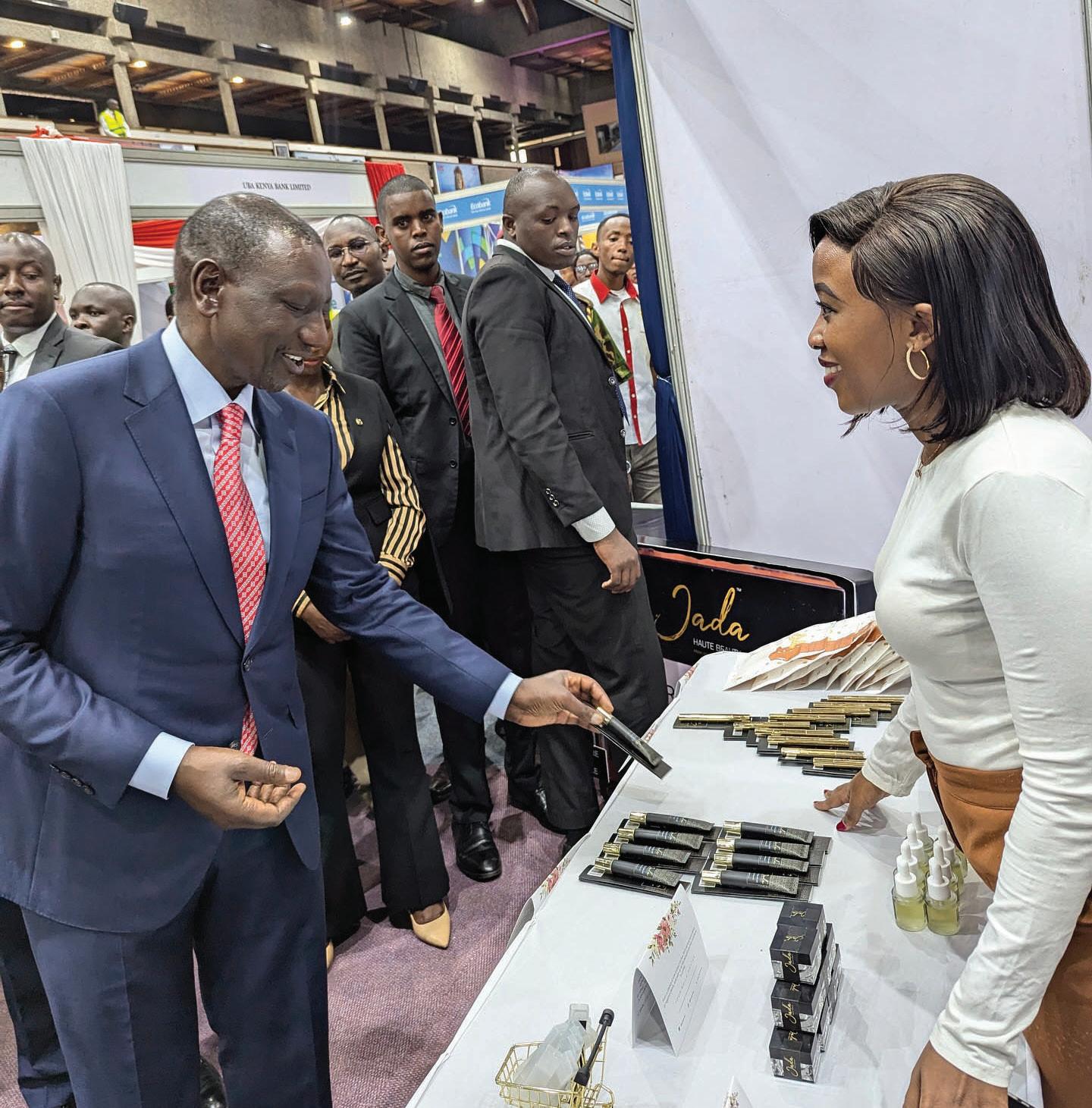
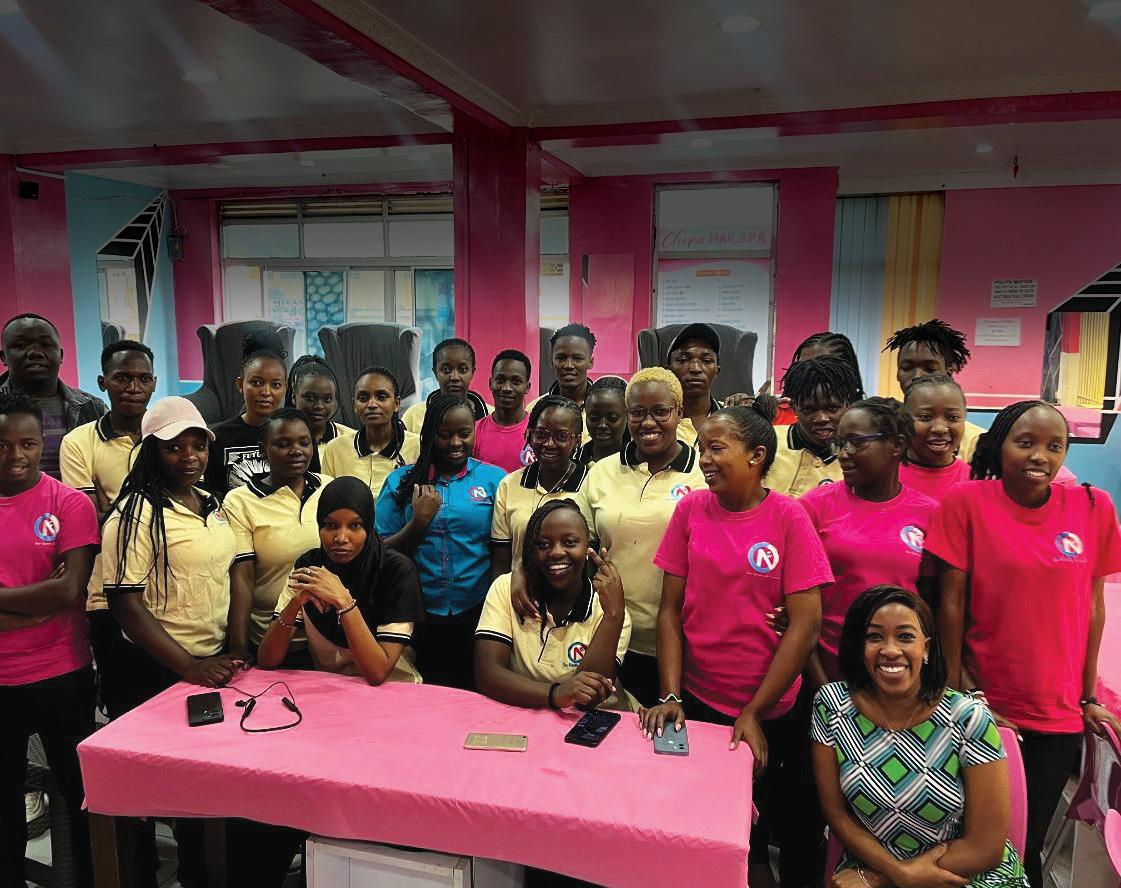
based chemical products with little consideration for health and safety impacts, making it difficult for consumers to make informed decisions.
Over its first six years, Mwangi realized that Habiqo had been focusing on selling products rather than providing a solution. This led to challenges in the startup’s initial stages, such as low business traction and a lack of understanding of real consumer needs, despite having the potential to disrupt the market.
“We’ve realized that people don’t care until they experience issues such as losing a nail or ending up in the hospital due to these products. We needed to change our whole approach,” said Mwangi.
Initial data from the startup reveals that one in every three individuals has some form of nail damage, including peeling, splitting nails, fungal infections, and other issues.
Upon this discovery, the company stopped selling artificial nails two years ago to focus big on natural care.
Today, Habiqo is proud to be the first natural nail care company in the country, aiming to change the conversation around nail care from just beauty to overall awareness and health.
The startup has expanded its customer base to over 3,000 through partnerships with beauty schools, nail technicians, and institutions to enhance knowledge and awareness of natural nail care.
“We teach you about the chemistry and biology of the nails from a medical perspective. From a nail therapist’s perspective, we teach how to identify certain nail conditions and provide the best advice to the consumer or recommend the best products to clients,” she explains.
From a business perspective, nail technicians are given insights into the number of clients they are losing due to wrong advice and corresponding lack of trust.
In Nairobi, where the company is headquartered, it is working with 1,000 nail technicians with a plan to grow this number to 100,000 countrywide over the next three years.
Habiqo offers six products under Jada brand, with its flagship item being a cuticle salve that moisturizes cuticles and helps users avoid pulling them. This product is popular among both men and women.
Other products include the Jada Ultra Soothing Cream for people with eczema, Jada Strengthening Serum (a nail strengthener), the Go Cutie Pen for on-the-go straightening, a custom-made Jada nail file, and the latest addition, a plantbased gel polish pack called Be Natural, which includes massage gels and gel polishes.
The company sources 90% of its raw materials locally, 3% from Germany, and the remaining from the United States of America. Additionally, 100% of its branded packaging is sourced from China.
Research firm, Statista, estimates revenue generated in the Kenya’s nails market to be Ksh 4.3 billion (US$33.48m) in 2024, driven by an increasing popularity of nail art and the demand for high-quality nail products.
KENAS is celebrating substantial growth over the past 15 years, transitioning from a departmental unit within Kenya Bureau of Standards (KEBS) to operating under its legal framework, championing and shaping global standards to spur trade within and across borders as well as assure quality, health and safety and environmental concerns.
By Conrad Onyango, Joyce Gichuru and Mutetei Mutisya
From initially operating as a unit within Kenya Bureau of Standards (KEBS), the Kenya Accreditation Services (KENAS) has made significant strides over the past 15 years.
It has transitioned to operating under its own legal framework and is now responsible for accrediting organizations that provide services in testing for medical, agriculture, materials among others, calibration, proficiency testing, inspection and verification, certification of persons, products, persons and validation and verification for greenhouse gas emissions for aviation and agriculture sector...
KENAS is the sole accreditation body in Kenya and is domiciled in the State Department of Industry under the Ministry of Investments, Trade and Industry. Today, KENAS prides itself of operating in six sectors: healthcare (equipment, laboratory, and healthcare providers), manufacturing and industry, infrastructure (road safety and transport), housing, agriculture, environment and climate change and digital superhighway and creative economy.
KENAS Chief Executive Officer, Dr. Walter Ongeti, has expressed confidence the organization is now primed to significantly impact the quality of services and products in local, regional, and global markets.
“It’s extremely exciting. mostly, because surviving year one, year two, year three, all the way to year 15 is not a walk in the park for any organisation,” said Dr. Ongeti.
Birth of KENAS
The history of KENAS dates back to 1984 when the National Calibration Service was established under the Metrology Department at KEBS. This was followed by the creation of a Quality Systems Assessment Committee (QSAC) and the appointment of the first Chairperson to the committee in
1995. The term “KENAS” was coined in 2004 by a Kenyan delegation during a meeting of the East African Community (EAC) Technical Subcommittee on Quality Assurance and Accreditation in Tanzania.
“At Bagamoyo, we were doing the third milestones of accreditation (international assessment) for what initially was supposed to be East African Accreditation Board, not Kenyan,” recalled Founding Chair of Kenya Accreditation Services, Joel Kioko.
During the meeting sponsored by the German government, the Kenyan delegation was the most active compared to those from Uganda and Tanzania and successfully convinced the technical subcommittee they had a working accreditation system called Kenya National Accreditation Service.
Dr. Walter Ongeti
KENAS Chief Executive Officer


Kenya Accreditation Service was then managed by the Metrology Department ofKEBS, with Joel Kioko as the Director of Metrology and Testing laboratories. The system was used to accredit within the Bureau and was compliant with the ISO 17025 standard at that time. It was modelled after South Africa’s Council of Science and Industrial Research for industrialization and property rating, as well as for the use of science, research, and standardization. This model was also utilized in Canada and Australia.
When Kioko was appointed as the acting Managing Director of KEBS, he wrote a paper for the Ministry of Trade and Industrialization advocating for the separation of accreditation from the KEBS and pushed for its registration as a separate entity.
“Within a year, we had KENAS registered as an entity. But it operated from the KEBS for about a year,” said Kioko.
Kioko would later become a member of the first Accreditation Appeals Tribunal after it became a requirement by the National Board of Health to have an arbitration committee.
In 2005, the Kenya Accreditation Service Regulation No.
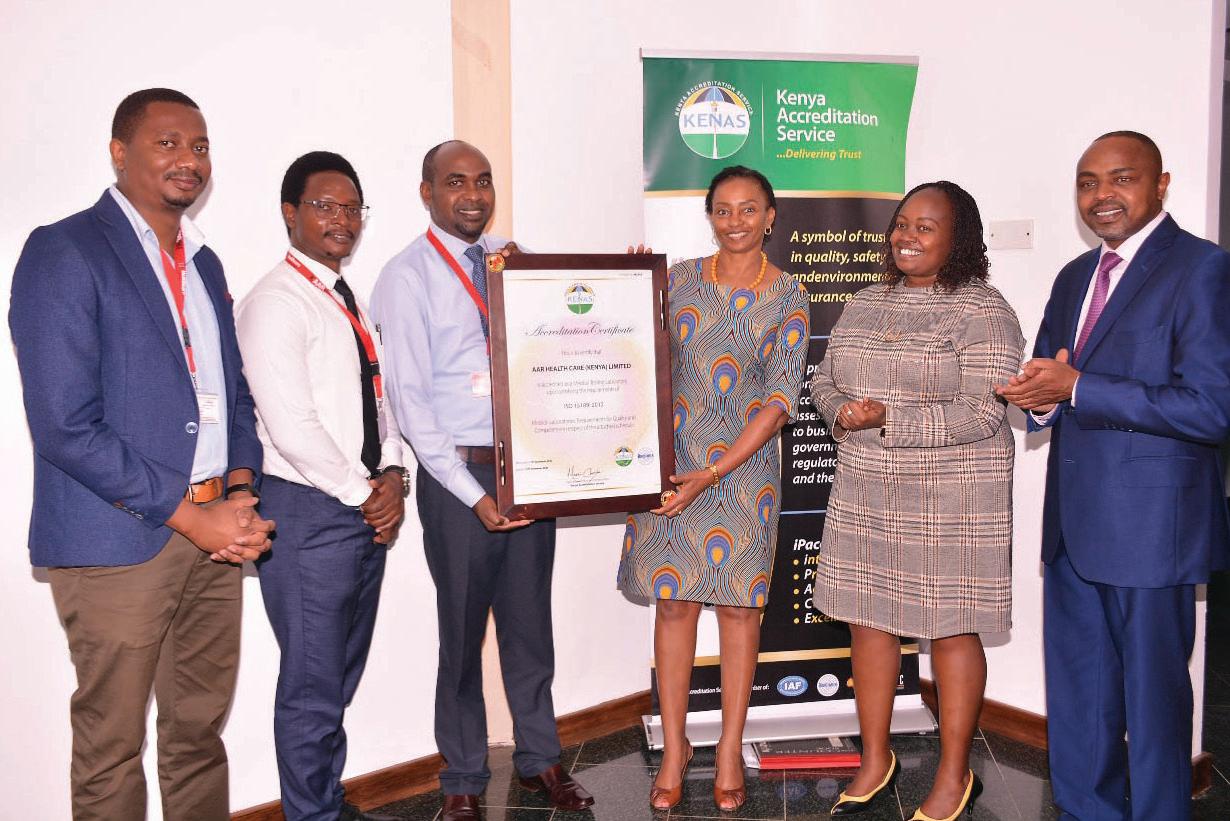
in 2007. In 2009, KENAS was formally established as an independent body vide Legal Notice No. 55 of 2009. The pioneer Board for the independent entity was appointed in 2010 and was headed by Prof. Marion Mutugi and went on to establish and operationalise structures and bring in expertise to run the organization with the first Chief Executive Officer, Mr. Sammy Milgo, appointed in 2011 among other staff.
The first client, Human Quality Assessment Services (HuQAS), was accredited to ISO Guide 43 in 2008, marking the beginning of KENAS’ 15-year journey. Other pioneer organizations to be accredited by KENAS for various schemes include Avant Garde Engineer and Consultants (2011) for inspections, Nyeri Water & Sanitation Company Limited (2011) as a testing

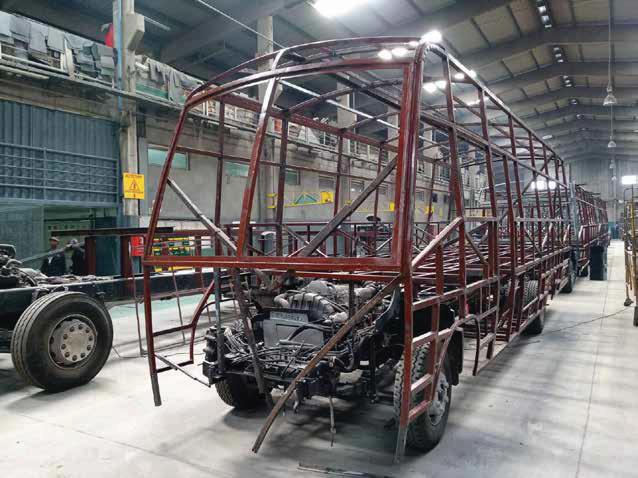




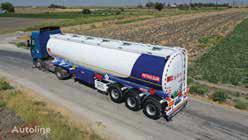
We are a credible organization that partners with other Government agencies in inculcating safety in vehicles. Scope of our inspections include;
• Design and manufacture of passenger bus bodies
• LPG and Petroleum tankers
• Underrun Protection devices on Trucks
Call : 0752-440043 , 0702045055
Congratulations Kenya Accreditation Service on your 15th Anniversary.
KABM Services Ltd, a leading inspection company, congratulates Kenya Accreditation Service on your Crystal anniversary.






Email : info@kabm.co.ke
























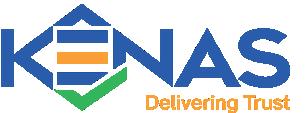

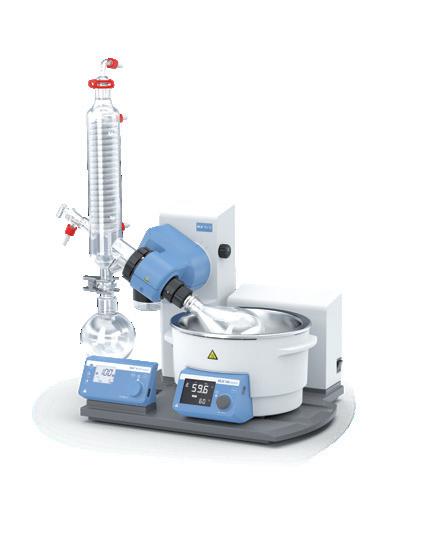

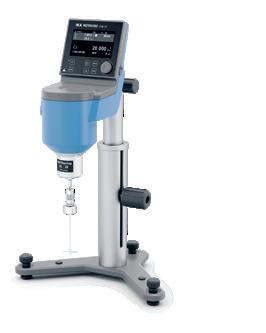


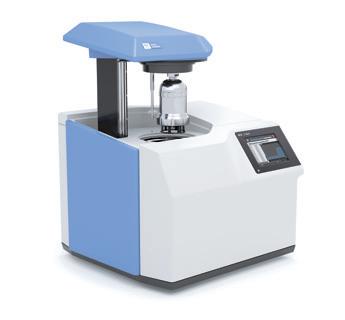

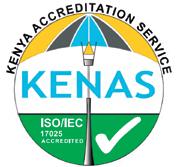


7. Certi cation Bodies

1. Medical Testing Laboratories
2. Veterinary Laboratories
3. Pro ciency Testing Providers
4. Calibration Laboratories
5. Testing Laboratories
6. Inspection and Veri cation Bodies


Robust systems
8. Validation and Veri cation Bodies
9. Biobanking
10. Diagnostic Imaging
11 Good Clinical Practices for Veterinary Medicinal Products Management Systems Product Persons

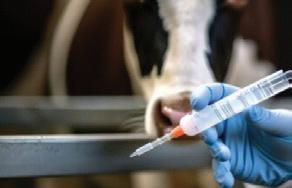
laboratory, Ampath Reference Laboratory (2012) as a medical laboratory, Sonic Quality Inspectors (2012) as a calibration laboratory, and SGS Kenya (2012) as a certification body.
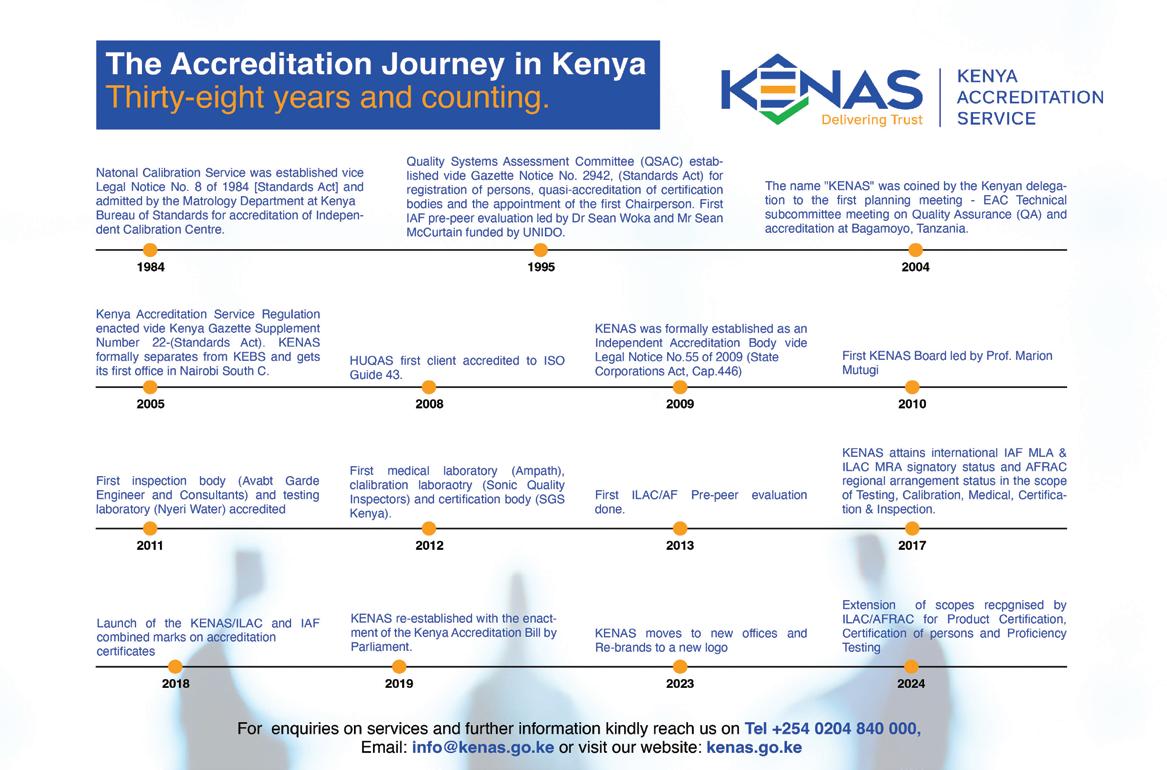
The significant progress has been due to efforts to establish a strong quality infrastructure, investing in technical expertise training for the workforce to meet international standards that accreditation bodies operate under, and developing competent schemes for specific standards that it accredits(see inset) All of these have led to the development of a truly robust working system.
Developing all these schemes and scopes has been a process from scratch to what we have today. it takes an accreditation body nearly 11 to 12 years to be able to get to that level.
Through this robust scheme development process, KENAS is the first country in Africa to have in place the validation and verification scheme for the aviation sector with the first body Soleil Solutions being accredited in 2023.
Global recognition
KENAS is a signatory to Africa Accreditation Corporation (AFRAC) Mutual Recognition Arrangement (MRA). KENAS has also played a crucial role in the establishment of this continental body, which brings together accreditation bodies in Africa. KENAS staff actively participate in various committees and contribute to the preparation of guidance documents, policies guiding accreditation processes, and review of accreditation and conformity assessment standards.
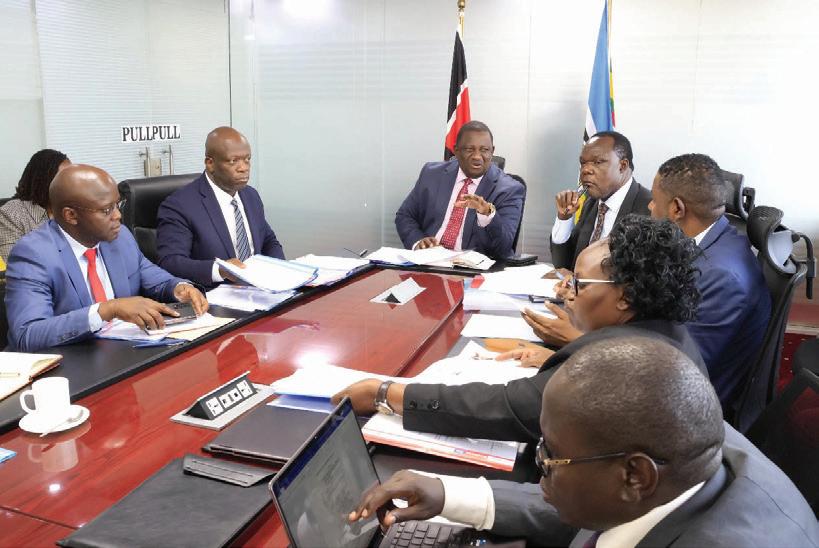
At the international level, KENAS is a signatory to the International Laboratories Accreditation Corporation for Laboratories (ILAC) MRA arrangement and International Accreditation Forum (IAF) Multi-lateral Arrangement (MLA). The member organizations to these bodies assess and accredit bodies that certify others, covering approximately 150 countries worldwide.
This global recognition of KENAS ensures that accredited organizations alongside the use of the KENAS marks and symbols prevent the need for individuals and products to undergo multiple tests or inspections in various markets.
“For instance, if it’s goods such as avocado you are exporting to China and there is an inspection body which KENAS has accredited and tests or inspects and says this is good to go, then no double testing or inspection,” explained Dr. Ongeti.
In Africa, KENAS has confirmed accrediting entities in 12 countries for the purpose of assessing conformity bodies. It is expanding its capacity and reach through training and mentorship programs.
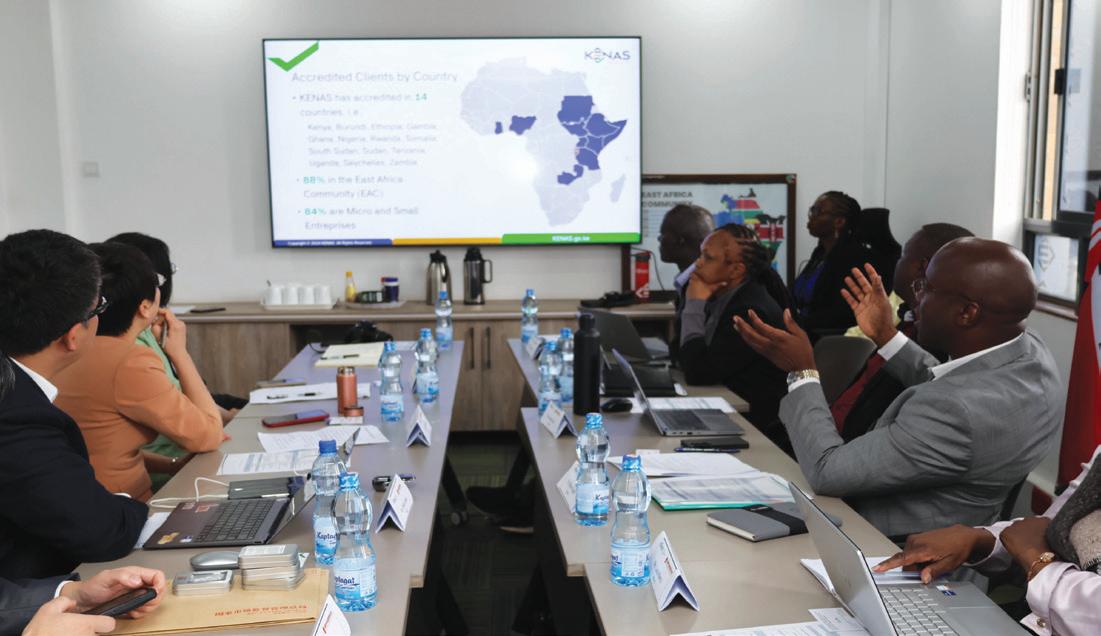
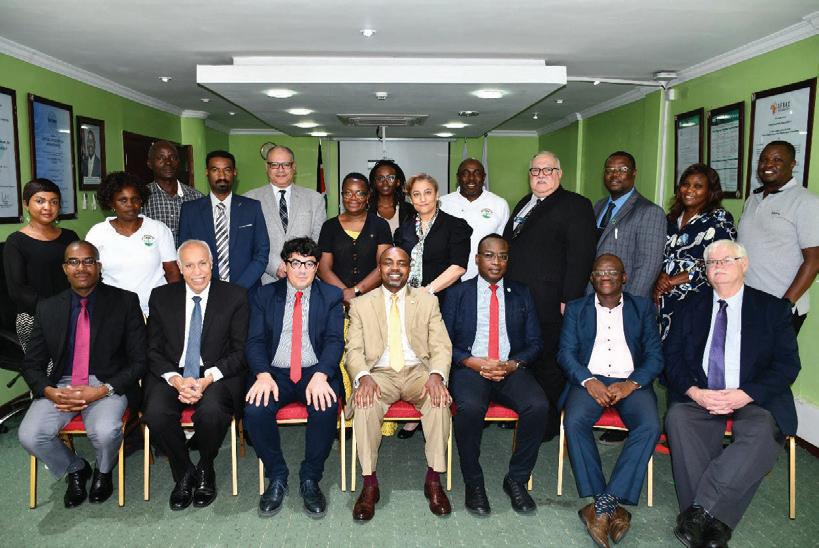
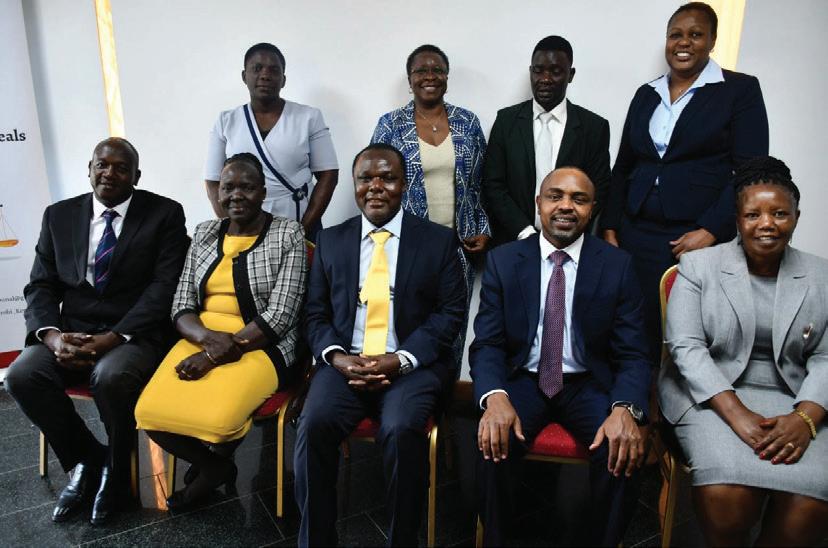

Training and strategic partnerships
Over the past five years, KENAS has seen its training program grow into a standalone product. It now utilizes the digital space to train experts with clients worldwide, including countries such as Japan, the UK, Korea, and Canada as KENAS continues to receive interest for accreditation from beyond the African continent. In the near future, it plans to install state-of-the-art training equipment, allowing for technical exchange across the globe.
“We are diving deep into research on accredited related activity, multidisciplinary research and are anticipating having our own accreditation centre with model testing laboratories so that our trainings are very practical,” said Ongeti.
The organization has signed a memorandum of understanding with the Chinese National Accreditation Service (CNAS), is in negotiations with Korea, and has a working arrangement with India. It also has an MOU with Uganda and is working closely with all other African accreditation bodies.
Currently, KENAS is mentoring the Uganda National Accreditation Service (UGANAS), which has been in the process of building its capacity for almost 10 years. Additionally, the Rwanda National Accreditation Office and UGANAS became associate members of AFRAC in early 2024 marking a milestone of the KENAS effort towards deepening accreditation in the EAC.
Breaking trade barriers
According to Dr. Ongeti, having stronger accreditation bodies makes it easier to do peer recognition, people-topeople exchange, and knowledge sharing, which bolsters the acceptability of each other’s results and regional trade.
KENAS Chairperson, Ngeny Biwott, affirmed the organisation is now stronger, supported by a well-trained team of experts who are well-versed in their roles and enjoys a special status being linked to international and African accreditation bodies, giving it a global appeal and acceptance. Biwott, however, feels that KENAS has not achieved as much as it would have liked in playing a significant role in trade facilitation through accreditation to reduce barriers to trade for industries.
“KENAS has come a long way and is rearing to go now with a young, vibrant and energetic team that should help meet stakeholder and dynamic market expectations. KENAS must work with industries and traders to ensure standards and quality required are practiced,” said Biwott. Initially, KENAS had two board members and three staff members and has over the years grown to 61 members along with external contracted staff, totalling around 200 to 300 individuals.
1
Applicant/Client Inquiries about accreditation

2

3
4
The duly lled application form is reviewed.
Successful applicant submits relevant documents for review and thereafter pays assessment (initial) fee on Ecitizen.
5
STEP 6
STEP 7
Initial assessment done to determine the competence of the CAB.
Review of closure for the non-conformities raised
Issuance of accreditation certi cate, symbols, and program to the client
STEP 8
Periodic assessments done after 6 months and thereafter annually before the end of the accreditation cycle.
KENAS works with 260 Conformity Assessment Bodies (CAB) with potential to triple for greater impact, with the Board saying it is empowering the Executive to expand and provide more services to a wider African market, taking advantage of the Africa Continental Free Trade Area (AfCTA), which is set to be the world’s largest single market valued at US$ 3 trillion.
“The future must start now. It has already started. I wish to see KENAS cover 85% of the market in 11 East African countries and play a role in facilitating trade in the region,” Biwott averred.

This vision is shared by Dr. Ongeti who acknowledged the level of trade within Africa has been low level averaging around 20%.
“We believe that through accreditation, we can also have other conversations that unlock other technical barriers of trade to ease movements of people and goods and services across the different borders,” he said.
The future
He anticipates that the number of CABs will grow to 400 in the next five years, with the potential for even more as the process is largely voluntary, allowing a body to obtain accreditation today and withdraw it willingly the next day.
Key drivers for accreditation in the country and globally include issues related to globalization, technology, regional trading blocks, changes in disease patterns, climate change,

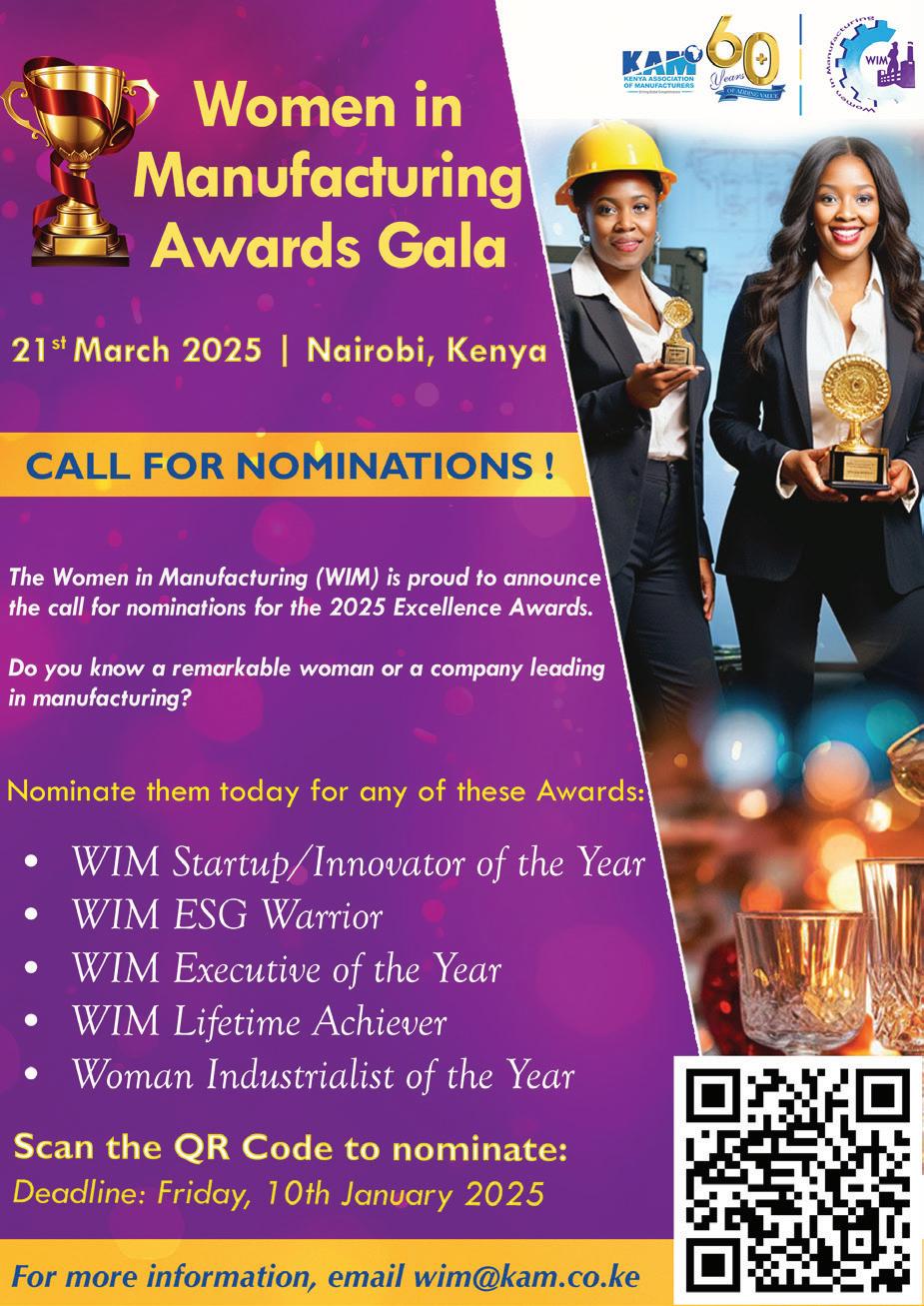
and evolving consumer preferences as people become more aware of the demand for quality.
Geopolitical issues, such as trade dynamics and market protectionism, as well as the desire of people to cross borders, have also influenced how KENAS conducts accreditation and has committed to aligning its schemes in these areas.
KENAS aims to strengthen its partnerships with collaborators and work with regulators to mandate accreditation within their regulations.
“We look forward, moving into the future, that each regulator who has any activities within their regulatory framework that are of conformity assessment nature can actually be able to mandate accreditation in that space,” said Dr. Ongeti.
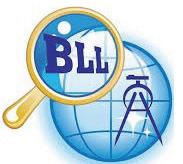



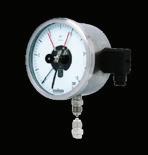














By Industry Today Correspondent
Kenya is pioneering tech-enabled drug manufacturing to reduce reliance on imports and enhance the country’s resilience against emerging and re-emerging diseases.
A concession agreement signed in October by the Kisumu County Government, Great Lakes University of Kisumu (GLUK), and Med Aditus Pharmaceuticals, an American-based drug manufacturer, paves the way for the construction of a Sh1.6 billion plant focused on producing high-quality, subsidized medications.
The new plant, to be built at the Great Lakes University of Kisumu (GLUK) in Kibos, will use advanced technologies such as continuous modular manufacturing, blockchain data architecture, and prefabricated pods to meet patient and market demands.
“The modular continuous manufacturing technology we are introducing to Kisumu will be the first of its kind in Africa, positions Africa as a leader in this technology, ensuring people have access to affordable and trustworthy medicine,” said President and Chief Executive Officer of Med Aditus Pharmaceuticals, Dr. Dhiren R. Thakker.
This state-of-the-art modular continuous manufacturing technology allows companies to shift from traditional batch manufacturing to a continuous process, resulting in faster drug production, with the transition from mixing to tablet creation taking only minutes.
The technology also incorporates Process Analytic Technology (PAT) for real-time quality control, enables real-time product release, is readily scalable over a wide range of lot sizes, and allows for quick changeovers between different products.
“All these features lower production costs and produce highquality medicines,” according to a concept note from Med Aditus.
leveraging a blockchain-powered digital quality management system, the company said, it will enhance security and efficiency of the supply chain and help reduce the prevalence of substandard and falsified medicines.
The blockchain will facilitate the development of patientreported data on medication adherence and health outcomes without compromising patient identity or sensitive information.
The pre-engineered, portable, customized factory system (PodtechTM), the firm said, will be built on a partnershipdriven business model to produce and distribute high-quality pharmaceutical products at affordable prices.
The factory aims to produce between 2-3 billion tablets annually, with a production rate of about 5-10 minutes per unit, significantly faster than traditional methods, which can take 2-3 months.
“Med Aditus will reduce our dependence on imports, improve our supply chain security, and boost our resilience against shocks and disruptions, especially in light of emerging and re-emerging diseases,” said Kisumu Governor Prof. Anyang’ Nyong’o during the launch of the project.
The plant is scheduled to begin production in 2028.
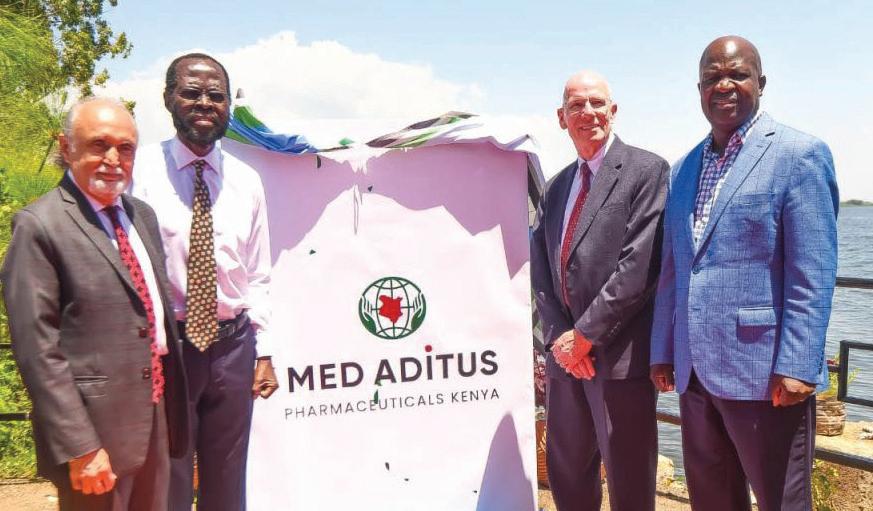

By Andris Kaneps
This is the ‘Decade of Action’, which calls upon all stakeholders to accelerate efforts to attain the United Nations (UN) Sustainable Development Goals (SDGs).
The SDGs aim to tackle poverty and climate change challenges and close the financial gap among the world’s most vulnerable communities.
However, a UN SDGs report released in 2023 showed that we are still behind schedule in achieving the goals, with only 15 percent of the goals’ targets on track despite the 2030 deadline.
The ‘Decade of Action’ is a call for all institutions, including the private sector, to implement policies and regulations that support the achievement of the Global Goals by 2030. This shift has led to companies adopting Environmental, Social and Governance (ESG) principles as a guiding force for their operations.
The consistent application of ESG principles not only leads to business growth but also empowers us to be a force for good. A study by Ipsos revealed that the majority of people believe that private organisations can make a profit while supporting communities, reinforcing the power of the private sector in driving positive change.
Adopting ESG principles is crucial for business growth. One key highlight of ESG’s impact on business is its ability to attract more investment and opportunities. Governance structures that promote transparency earn a reputation among customers and potential investors. The push towards achieving the SDGs is challenging for established businesses since it involves channelling a lot of investment and resources into their operations.
ESG offers us a unique opportunity to connect with communities. Investing in their most pressing social needs can foster unwavering loyalty and consistency towards our brands. Reinvesting in communities, especially the vulnerable, through social programmes gives us a social license to operate and builds reliable relationships that lead to a strong brand affinity.
The consequences of climate change are pronounced, especially in our continent, as sustainable business practices supporting environmental stewardship are a catalyst for growth. In a report released by the Global Commission on the Economy and Climate in 2018, climate initiatives should generate profits of $26 billion and create 65 million new jobs by 2030.
The push to adopt clean energy is an avenue for employment opportunities. According to the International Labour Organisation (ILO), in 2022, employment in the renewable energy sector hit 12.7 million jobs globally, with the taking up of solar energy among domestic and business interests being cited as the leading front of job creation.
Considerable investment is needed to make businesses ESG compliant, especially in the social and environmental space. Challenges also lie in getting full backing from internal and external stakeholders to rejig business operations to meet the required standards.
Partnerships are not just a key; they are the bridge that can help us overcome the challenges. By aligning with like-minded entities, we can secure investment opportunities. Maintaining a strong reputation and being accountable to ourselves and others is crucial.
The writer is the Group CEO and Founder at Watu Credit.

By Conrad Onyango
The Kenya Bureau of Standards (KEBS’) journey is a remarkable story of transformation, one that spans five decades of steadfast dedication to quality, safety, and excellence. As KEBS celebrates 50 years, it looks back on a legacy that has fortified consumer trust, empowered industries, and established Kenya as a leader in quality standards and trade facilitation.
Nurturing a Culture of Quality
Since its establishment, KEBS has been a pioneer in instilling a culture of quality across Kenya. Through rigorous product certification, comprehensive training, and close industry engagement, KEBS has advanced a mindset where quality is paramount, benefiting businesses and consumers alike.
Managing Director Esther Ngari reflects on the bureau’s impactful journey, highlighting the steady adoption of certified standards, which has been essential in propelling Kenyan industries into competitive regional and international markets.
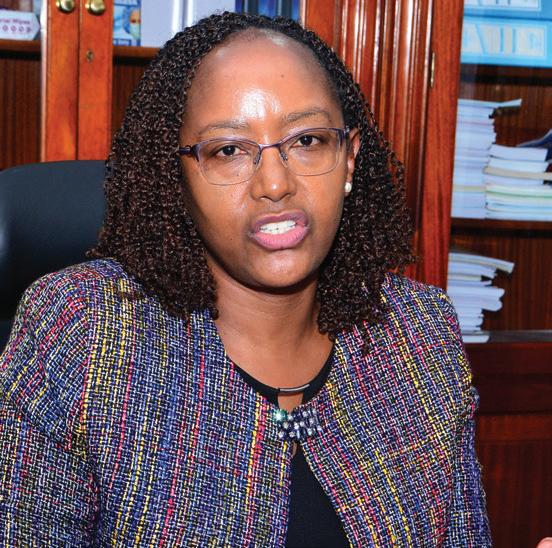
The industry’s embrace of quality has grown profoundly. We started with challenges in convincing industries about the importance of standards. Today, we’re witnessing their fullhearted commitment to quality—where local industries now view it as foundational to their success.
Esther Ngari, Managing Director
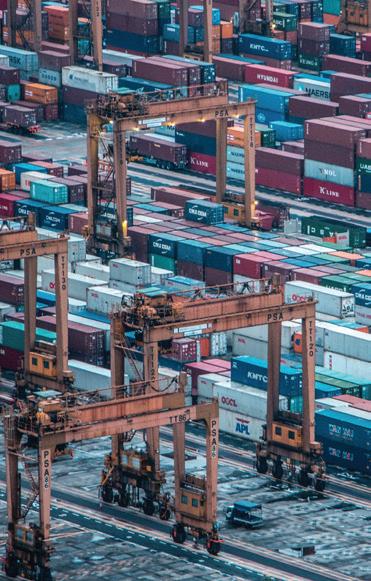



Our heartfelt Congratulations to The National Standards Council, Management, and entire staff of the Kenya Bureau of Standards on celebration of their 50-year anniversary
KEBS have been leading National Standards Body in Africa, providing Standardization, Metrology, and Conformity Assessment Services that safeguard consumers and facilitate trade for a sustainable future.

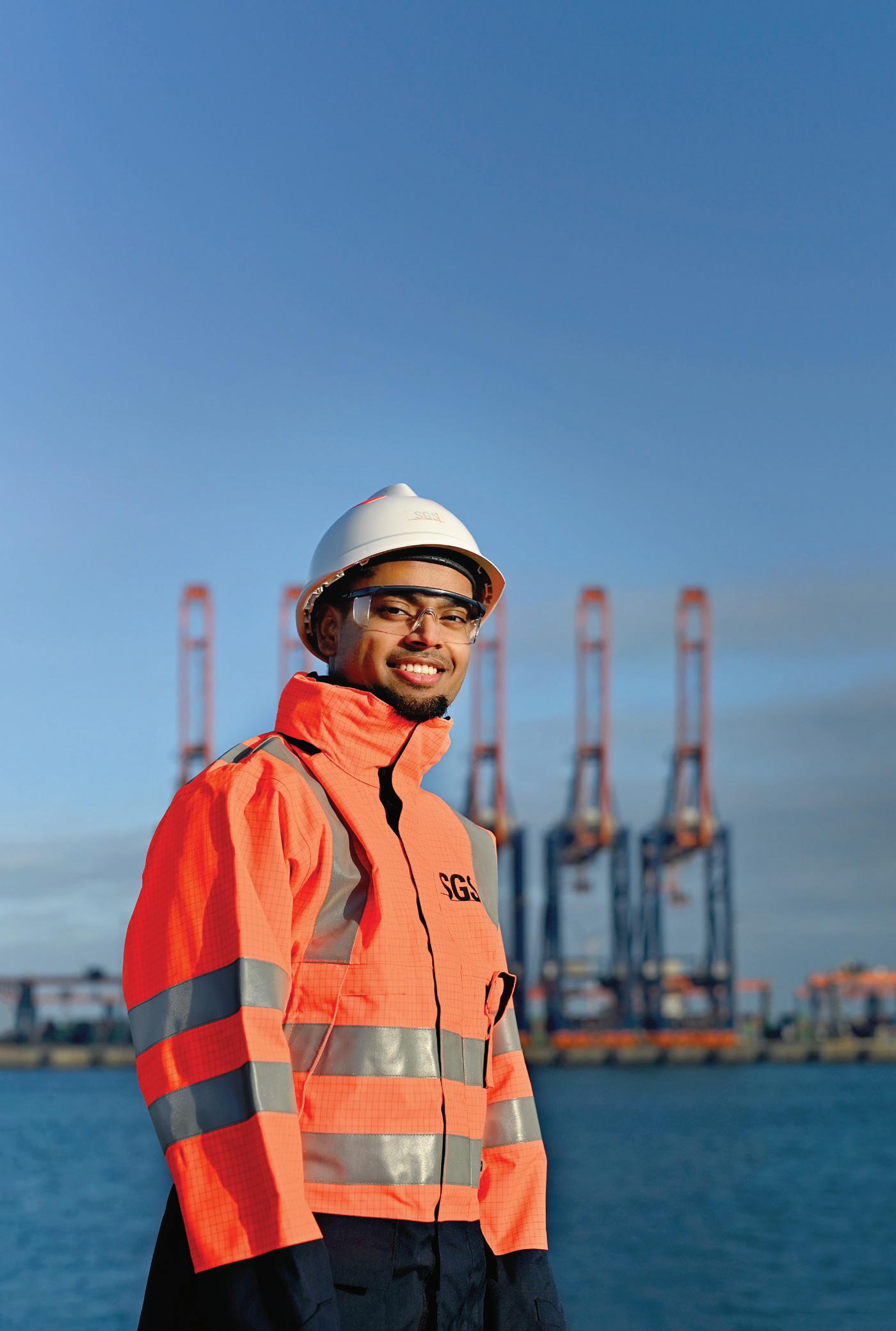
We at SGS, the words leading inspection, testing
For half a century, you have quality assurance, safety, and compliance, setting benchmarks in the industry and inspiring the
Your unwavering commitment to ensuring only conforming goods are imported into the country has not only built a remarkable legacy but also transformed
We are honored to be part of your journey and look forward to many more years of partnership and success.
Here’s to the next 50 years of innovation, growth, and shared achievements!
With a substantial budget increase to Ksh 8.2 billion, KEBS’ growth over the years reflects not only the expanding scope of its mandate but also its impact across Kenya. From its Nairobi headquarters to regional offices in Mombasa, Kisumu, and Eldoret, KEBS has established a nationwide presence, ensuring that quality assurance services are accessible throughout Kenya. Equipped with state-of-the-art testing and calibration facilities, KEBS provides reliable quality assessments that have paved the way for Kenyan industries to thrive on a global scale.
KEBS’ commitment to excellence has led to significant advancements in quality assurance, trade facilitation, and consumer protection. In addition to its initial functions, KEBS’ now oversees import inspections, market surveillance, system certification and the National Quality Institute (NQI), reinforcing Kenya’s reputation for certified quality products and services. The bureau has certified numerous organizations to globally recognized management standards and established a comprehensive system of national standards that serves as a benchmark for industries across Kenya.
In its ongoing journey, KEBS has championed a collaborative approach with industry players who contribute valuable insights as technical committee members in standard-setting processes. This inclusive approach has enriched KEBS’s standards with

practical, industry-driven perspectives, strengthening the relevance and applicability of standards across sectors.
KEBS’ success can also be credited to the alliances it has built with international bodies such as International Organization for Standardization (ISO), the International Electrotechnical Commission (IEC), Physikalisch-Technische Bundesanstalt (PTB), National Institute of Standards of Technology (NIST), IntraAfrica Metrology System(AFRIMETS) among others, allowing Kenya to influence global standards in ways that address its unique needs. Through its partnerships with regional bodies like the East African Community (EAC) the Southern African Development Community (SADC), African Organisation for Standardisation (ARSO), and the Common Market for Eastern and Southern Africa (COMESA), KEBS has actively promoted the harmonization of standards, removing trade barriers and facilitating regional commerce. Domestically, KEBS’ close collaboration with government ministries and industry associations has aligned standards with Kenya’s national priorities and economic goals.
“Our engagement in international standards has positioned Kenyan products favourably in global markets,” says Ngari. “By setting and maintaining rigorous standards, we’re not only enhancing Kenya’s export potential but also fostering economic growth.”

Through partnerships with organizations such as Trademark Africa, KEBS has worked with organizations such as Trademark Africa, DANIDA, European Union-Standards for Market Access (EU-SMAP), United Nations Industrial Development Organization (UNIDO), Japan International Cooperation Agency (JICA), Swedish International Development Cooperation Agency (SIDA), and EU-SWITCH AFRICA GREEN to enhance its Standards, Metrology and Conformity Assessment (SMCA) activities. KEBS has also bolstered its capabilities to drive impactful change, setting standards that meet the highest levels of global market compliance.
Consumer safety is at the heart of KEBS’s mission. By establishing and enforcing national standards, KEBS protects Kenyans from substandard products, ensuring that items on the market meet strict quality and safety criteria. Its consumer complaints team is swift in addressing product quality concerns, fostering an environment of fair-trade practices across the country. KEBS’ public awareness initiatives empower consumers to recognize quality products, equipping them to make safer, informed choices.
“At KEBS’, consumer protection is more than a priority—it’s our duty,” says Ngari. “Through vigilant quality enforcement and public education, we’re working to ensure that only safe, compliant products reach Kenyans.”
Recognizing the dynamic nature of technology, KEBS has adapted to market trends, ensuring that its standards keep pace with innovations in renewable energy, ICT, biotechnology, and more. Its ongoing investment in digital infrastructure and staff development supports Kenya’s standing as a global player in quality compliance. KEBS’ commitment to sustainability underlines its forward-looking approach, promoting practices that safeguard Kenya’s future.
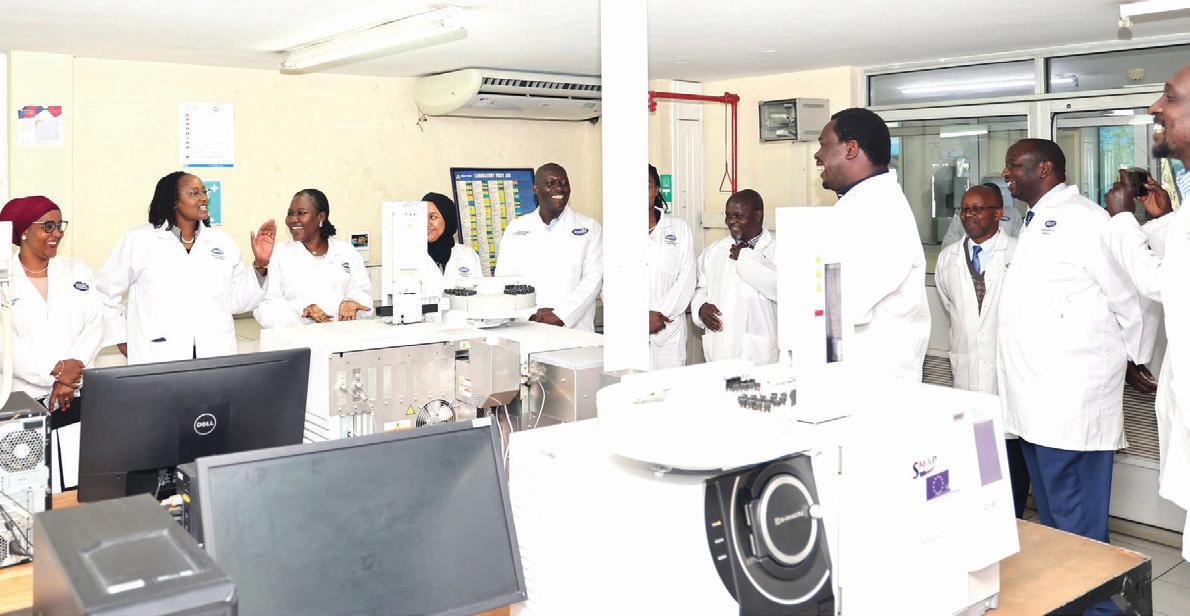
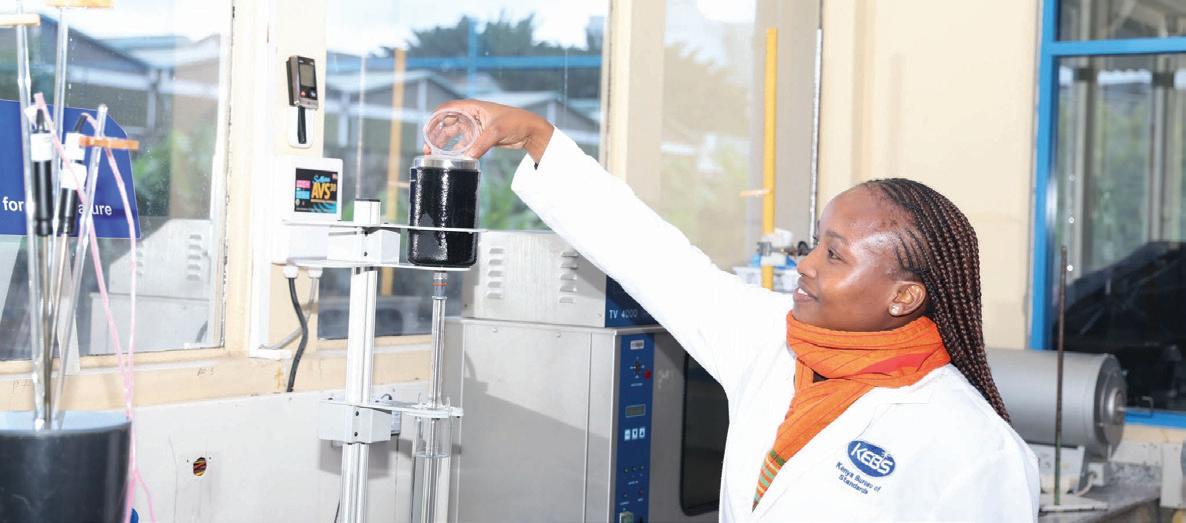
“From setting standards in emerging sectors to fostering environmentally responsible practices, KEBS’ remains committed to aligning Kenya’s growth with the global shift towards sustainability,” shares Ngari. “Our goal is to ensure standards that resonate with today’s industry needs and tomorrow’s environmental imperatives.”
KEBS’ support extends to micro, small and medium-sized enterprises (MSMEs), offering subsidized certification fees and capacity-building programs to help them compete effectively in local and international markets. By fostering quality practices within MSMEs, KEBS’ plays an instrumental role in strengthening Kenya’s economic backbone.
Today, as KEBS celebrates 50 years, it reflects on a journey that has empowered industries, protected consumers, and elevated Kenya on the world stage. Its legacy of quality and innovation continues to drive Kenya toward a prosperous and resilient future.
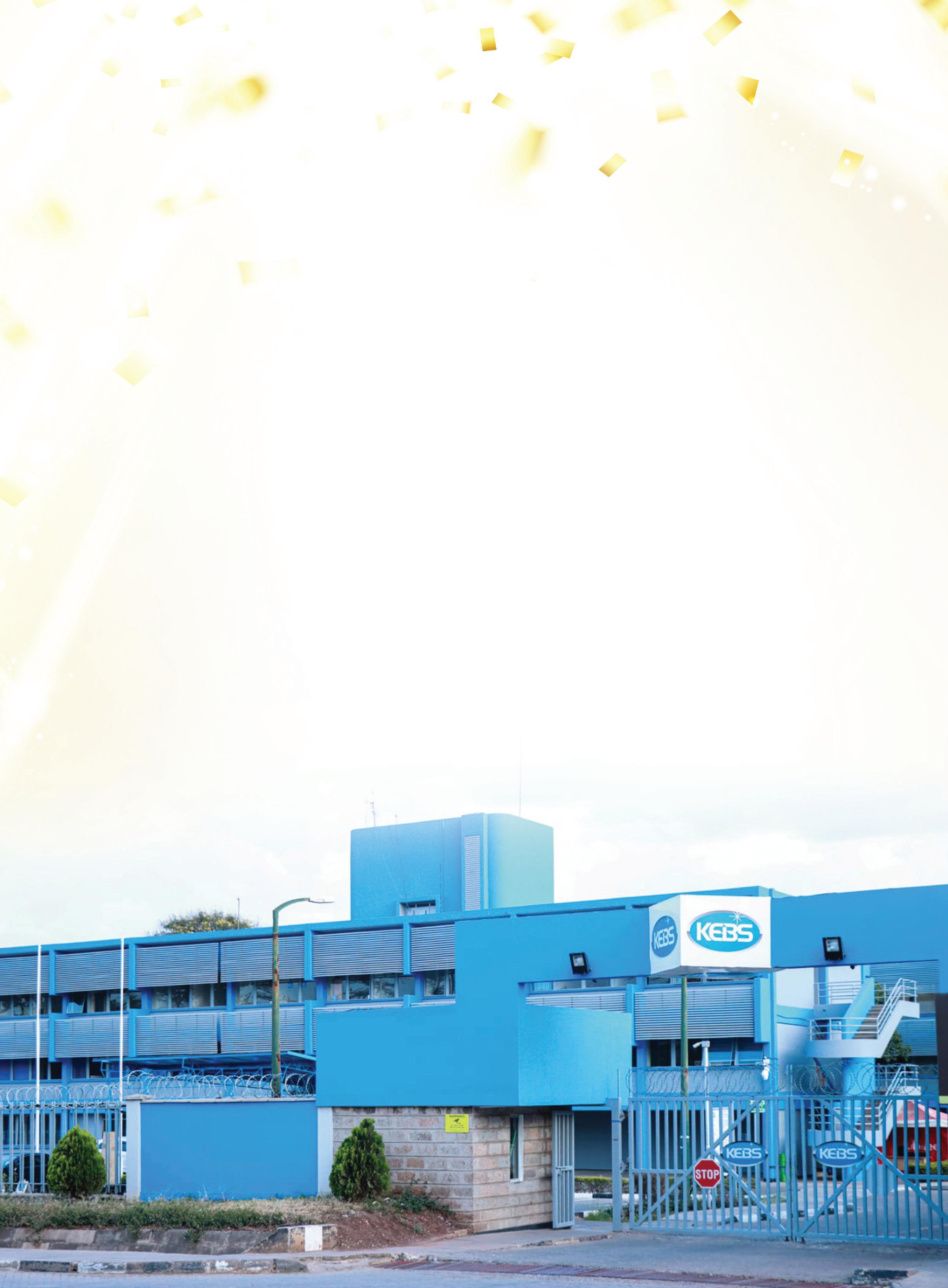
From explosives to pharmaceuticals, Industrial chemicals and agrochemicals - this manufacturer has defied market disruptions to successfully diversify its product offerings and meet the evolving consumer needs.
By Viktor Kwabe
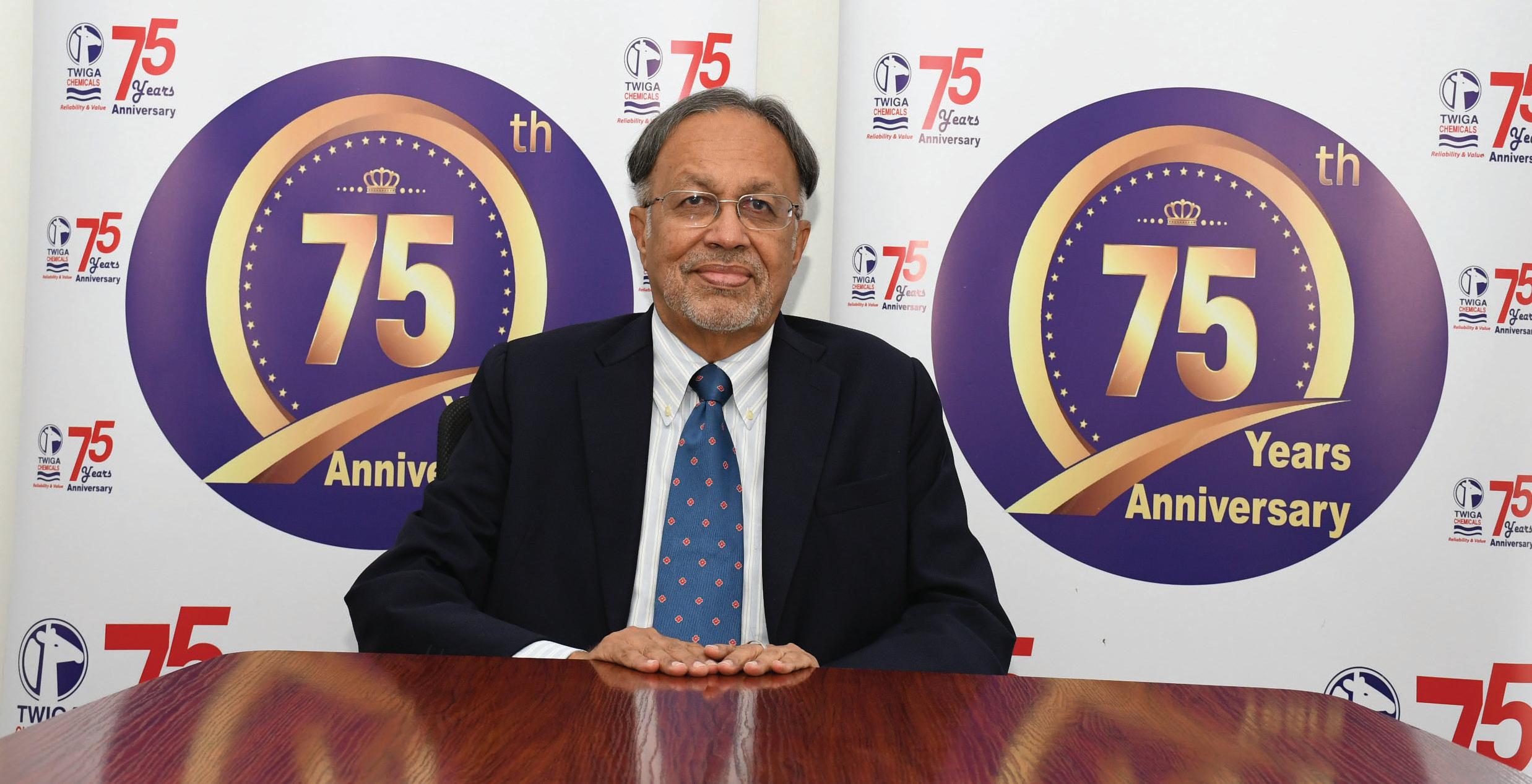
Twiga Chemical Industries Limited was originally founded as African Explosives and Chemical Industries (AECI) EA Ltd in mid 1949 - a subsidiary of the renowned Imperial Chemical Industries PLC (ICI) of the UK.
In its early years, AECI gained recognition for its explosives products, pharmaceuticals and agrochemicals for which there was a crying need at the time. Explosive products were essential for manufacturing cement from limestone and played a critical role in the construction industry.
In 1962, ICI thought it appropriate to change the company name to Twiga Chemical Industries Limited to reflect the Kenyan character of the organization.

As the company grew, it expanded its portfolio to include more pharmaceutical and agrochemical products and industrial chemicals, delivering a wide range of products to consumers. However, this promising trajectory faced challenges with the advent of generic medicines, which disrupted the market dynamics and ultimately led to a decline in business stability of the pharmaceutical business.
To cement its position as a leading manufacturer of agrochemicals, Twiga management realized that it is essential to be certified for quality. Therefore, the company undertook the task of acquiring an ISO label. In 1999, Twiga secured ISO 9001 certification, the first agrochemical manufacturer to do so.

With its rich history and unwavering focus on quality, Twiga Chemicals has earned a strong reputation among consumers and industry partners alike. Its state-of-the-art laboratories and toll manufacturing facilities are sought after by other companies in the agrochemical/crop protection industry as also by animal health companies.
“Twiga Chemicals business model allows our facilities to be extensively utilized by other companies for formulating and packaging their products,” said Ramamurthy. The big ticket clients that Twiga Chemicals has secured include Syngenta, Bayer and Corteva, the world’s largest agrochemical/crop protection companies.
In 2000, the company expanded its offerings by introducing the Animal Health Division, with the vision of providing tailored products for dairy and livestock farmers to address the challenges faced by large animals such as camels, cows, sheep, and goats.
Currently, the company maintains a strong focus on its three key divisions: Crop Protection, Animal Health, and the Toll Manufacturing Centre. This strategic focus was further underscored by the discontinuation of the Pharmaceuticals Division in 2004—after the pharmaceutical and industrial chemicals sectors became the play field of too many players.







“Our focus is on these three main divisions, which are integral to our operations,” he stated.
Twiga Chemicals started dealing in Crop Protection products because of the significant coffee and maize production in Kenya,. The development of crop protection products is a rigorous process that can take two to three years. Each product must undergo extensive trials to ensure it is safe for humans, the environment, and ecosystem, including aquatic life. Only after such trials are successful does the Pest Control Products Board register the product and permit its import.
Twiga Chemicals is committed to walking alongside farmers, providing them with a range of solutions tailored to their challenges. This includes the entire range of insecticides, herbicides, fungicides, grain storage chemicals, foliar fertilisers and biological solutions.
The establishment of the Animal Health Division was motivated by the recognition that the consumers of crop protection products and animal health products were the same ie the farmer. Therefore, both the product ranges were using the same distribution channel. Many farmers, for instance, manage small plots of land where they raise crops, cows and goats.
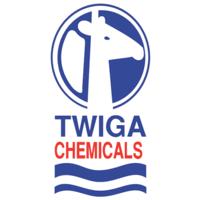




One of Twiga Chemical’s first products in this division was an acaricide, which is sprayed on animals to keep ticks at bay. This product quickly gained acceptance among consumers due to its effectiveness. Twiga Chemicals also offers an array of other products for animal health, including livestock antibiotics, dewormers, mineral supplements, multivitamins, and imported bull semen. The range of mineral supplements is manufactured by Twiga whilst the other products are imported.
One of the outstanding innovations by Twiga has been Twigalick Maziwa Max, a nutritional supplement for lactating cows that significantly increases milk production especially in high-yielding animals. Farmers using have reported a jump in yield of up to an impressive 25%.
Looking ahead, Twiga Chemicals is planning to expand into the poultry sector to provide high-quality veterinary medicines that meet consumer needs, further enhancing Twiga’s commitment to animal health.
Twiga Chemicals has established a Toll Manufacturing Division, which leverages a state-of-the-art facility that meets global standards. This facility has attracted various companies seeking to utilize Twiga’s capabilities for manufacturing and packaging. Equipped with cutting-edge technology, including a Quality Control Laboratory featuring High-Performance Liquid Chromatography (HPLC), Gas Chromatography (GC), and UV Spectrophotometry, the center ensures the highest quality products.
This Toll Manufacturing Centre, recognized by its users as one of the best of its kind in East and Southern Africa, specializes in the manufacturing and repackaging of agrochemicals, animal health products, and public health solutions. It provides critical services such as product formulation, packing, repackaging of powder/liquid insecticides, fungicides, herbicides, and acaricides, as well as warehousing facilities to help users streamline their operations.
Like other businesses, the company continues to face challenges, ranging from market fluctuations to oversupply issues caused by low-quality generics and counterfeits. Among
challenges, climate change has posed a significant threat to farmers, leading to reduced purchases of products during drought periods.
“When farmers are able to grow crops, we can sell our products. However, when their crops fail due to excessive or insufficient rainfall, we suffer losses. For instance, in 2023, we faced a difficult year due to prolonged drought conditions that resulted in lower yields for farmers, which in turn meant reduced sales for us,” Ramamurthy explained.
With a strategically located warehouse in the city, Twiga has established a network of 60 distributors nationwide, ensuring that products reach over 1,200 registered agro-vets, thereby broadening its market reach. To promote innovation and strengthen sales, the company offers incentives to stockists based on their sales performance.
“The stockists appreciate these incentives because they provide something to look forward to, and they are also empowered to engage consumers about our products. This approach benefits not only the stockists but also the community, as we assure them of quality products,” Ramamurthy noted.
Twiga Chemicals is deeply committed to serving the community, as demonstrated by various initiatives, including tree planting programs, cleanup efforts, and renovations of local schools and community centers. Recognizing that newly planted trees require nurturing, the company has actively collaborated with local communities to ensure the sustainable growth of these trees.
The company currently employs 160 people and often hires an additional 200 - 300 short-term contract workers seasonally when farming is at its peak and demand for labour increases. This flexible employment model not only supports Twiga’s operations but also creates valuable job opportunities for the local population, contributing to overall community wellbeing.
Currently, Twiga offers a range of products for all crops and large animals. The company produces approximately 5 million pieces of various products annually, generating significant revenue throughout the year.
In recognition of its commitment to excellence, Twiga Chemicals received the Company of the Year Award in 2017, affirming its position as a leading provider of products and services that meet global standards. While its primary market remains in Kenya, Twiga has sister companies in neighbouring markets such as Tanzania and Uganda.
By Vanessa Tiffany Auma, HR and Administration Support at KAM
“Charity begins at home,” is a powerful saying, often used to emphasize that making a difference in the world starts within our own lives. When it comes to adopting an energy-efficient lifestyle, this principle rings especially true. Let us embark on this journey together, exploring how human resource (HR) departments can become pivotal players in fostering sustainability and energy efficiency within the workplace.
Imagine a world populated by entrepreneurs, marketers, and social media stars. These individuals wield significant influence, whether through captivating advertisements, inspirational content, or social pressure. However, the concept of influence is not confined to the realm of consumer choices; it extends into the workplace. HR professionals—often dubbed the “employee experience engineers”—hold a unique position as workplace influencers. An agile HR department can set the tone for an organization, guiding its culture and practices toward sustainability.
Traditionally, HR has been associated with tasks like recruitment, leave management, and policy formulation. However, the role of HR can and should extend beyond these functions. HR practitioners can advocate for energy efficiency practices that benefit the organization and cultivate a sustainable lifestyle for employees.
Before diving deeper, we can explore what energy efficiency means. It refers to the practice of using less energy to perform

the same task, thereby achieving the same results with reduced consumption. This principle can be transformative when applied in the workplace, promoting both environmental sustainability and cost savings.
The journey of energy consumption starts the moment you step out of your home. Imagine yourself getting into a vehicle—whether it is a matatu or your sleek car. The fuel used for this trip requires energy to combust, powering your ride to your destination. While occasional commuting may appear harmless, the cumulative impact of daily travel can be significant.
HR departments might hesitate to suggest initiatives like carpooling, particularly when employee relationships are at play. Imagine two colleagues, X and Y, who share a common route but have a strained relationship. Asking them to carpool could lead to discomfort and resentment. This scenario highlights the need for innovative solutions that consider both energy efficiency and employee dynamics.
The COVID-19 pandemic provided an unexpected lesson in energy conservation. During 2020, carbon emissions dropped, largely because many employees worked from home. This shift revealed that embracing hybrid working models could be a more effective approach to reducing energy consumption associated with commuting.
Change often begins with a single individual willing to advocate for new ideas. In the context of energy conservation, HR departments must foster a culture of sustainability within their organizations. To initiate this transformation, HR professionals can engage employees in meaningful discussions about energy efficiency.
Effective internal communication is key. HR can share ecofriendly tips, such as turning off lights during daylight hours or utilizing natural light in office design. These small actions can collectively lead to substantial energy savings. For instance, companies can redesign office spaces to incorporate large windows and open layouts that maximize natural light, reducing reliance on artificial lighting.
Furthermore, when sourcing office supplies, HR should collaborate with procurement departments to prioritize vendors that prioritize sustainability. Choosing energyefficient devices and environmentally friendly materials such as those that minimize plastic use can significantly reduce the organization’s carbon footprint.
It is crucial for HR departments to take proactive steps in promoting energy conservation initiatives. Conducting sensitization campaigns can help educate staff about the importance of responsible energy consumption. By addressing common misconceptions and ignorance surrounding energy efficiency, HR can empower employees to take ownership of their actions.
Consider organizing workshops or seminars that focus on practical ways to save energy both at work and at home. Inviting guest speakers from sustainability organizations
can inspire employees to adopt greener habits. This not only enhances the organization’s commitment to sustainability but also fosters a sense of community and shared responsibility among employees.
Ultimately, building a sustainable workplace requires a cultural shift. HR departments should strive to create an environment where sustainability is not just a policy but a way of life. By integrating energy efficiency into the organizational culture, HR can inspire employees to embrace sustainable practices both at work and in their personal lives.
For example, organizations can implement a recognition program that celebrates employees who contribute to energysaving initiatives. This could include rewarding individuals or teams for innovative ideas that reduce energy consumption. Such recognition not only reinforces positive behaviors but also encourages a competitive spirit, driving further engagement in sustainability efforts.
As we navigate the challenges of climate change and its impact on our planet, the role of HR in fostering a sustainable and energy-efficient workplace has never been more critical. By leveraging their influence and engaging employees in meaningful ways, HR professionals can drive positive change that extends beyond the office walls.
In the end, sustainability is a collective journey that begins at home within our organizations and ourselves. As HR practitioners embrace this responsibility, they can inspire a wave of change that ripples through the workforce, transforming energy efficiency from a mere concept into a vibrant culture.



